How to get around London: from tubes and trains to bikes and buses
Mar 17, 2024 • 10 min read

With a bus, Tube, boat or bike? We'll help you discover the best ways to get around in London © Kristi Blokhin / Shutterstock
London is a sprawling city of over nine million people. With its combination of Roman walls, Victorian development, post-WWII rebuilding and pockets of ongoing regeneration, it's a jumble of roads, Tube and train lines, and definitely not the most intuitive city to navigate.
However, with apps, good mapping, signage and a bit of patience, it's possible to visit almost all of the city via public transport. From train companies to Transport for London, here's everything you need to know about each mode of transport and the all-important ticketing system.


The Tube (the London Underground) is the quickest and easiest
The London Underground, or "the Tube," is the city's subway running across 11 different color-coded lines, with only about 45% of the Underground network actually operating underground. Despite the never-ending upgrades and engineering works requiring weekend closures and escalators out of action, the Tube is overall the quickest and easiest way of getting around the city. It is also usually the warmest place to wait for your transport in winter, except on those rare above-ground Tube stations.
Be aware though: some stations, most famously Leicester Square and Covent Garden, are much closer in reality than they appear on the Tube map, and going underground to travel between them will take much longer than simply walking between them.
Tip for using the Tube for sight-seeing: The Piccadilly Line stops at some of London’s key sights and neighborhoods – Piccadilly Circus, Covent Garden, Hyde Park Corner and Knightsbridge – and it runs from Heathrow's airport terminals. It's a good Tube line to base yourself near.
Catch the Night Tube on Friday and Saturday nights
The Tube runs roughly 5am to 1am, although when your last train departs does vary by line and the day of the week.
Several lines (the Central, Jubilee, Northern, Piccadilly and Victoria lines) run all night on Friday and Saturday to get revelers home (on what is called the "Night Tube"), with trains every ten minutes or so (and off-peak fares).
London's red buses (and the best sight-seeing bus route)
London's ubiquitous red double-decker buses afford great views of the city, but the going can be slow thanks to traffic jams and dozens of commuters getting on and off at every stop.
There are excellent bus maps at every stop detailing all routes and destinations served from that particular area (generally a few bus stops within a two- to three-minute walk, shown on a local map).
Bus services normally operate from 5am to 11:30pm. Many bus stops have LED displays listing bus arrival times, although downloading an app such as Citymapper to your smartphone is the most effective way to keep track of when your next bus is due.
Top tip for taking the bus: Bus Route 15 is no longer served by heritage Routemaster buses but is still a useful route for tourists, connecting the Tower of London, St Paul's, the Strand and Trafalgar Square.

The Elizabeth Line
London’s shiny new "purple" line, connecting towns as far west as Reading and as far east as Shenfield to central London via hubs like Paddington, Liverpool Street Station and Tottenham Court Road, is now open for business .
The line also offers a quicker (although more expensive!) route between Heathrow airport and central London.
Getting around London by foot
London is too large to realistically cover on foot, but once you're in an area of interest, you can't beat walking for proper neighborhood exploration. A good map or GPS is recommended, as London's winding streets can quickly disorientate. Bridges cross the Thames at regular intervals, and there are two pedestrian tunnels beneath the river: one at Greenwich and one at Woolwich.
If you're exploring London in winter, wrap up with a warm hat, gloves and scarf. In central London, an umbrella is a liability on narrow footpaths; you're better off wearing a waterproof coat with a hood. Ice and snow are not uncommon in the depths of winter, so watch for slippery streets in the mornings.
Another key hazard for walkers in London can be cyclists, or rather pedestrians are a worry for them. Looking out for cars when you cross the road goes without saying, but in London, many streets allow cyclists to ride against a one-way driving system on "contra-flow" lanes. This means you need to look both ways before crossing roads, especially as you won't hear a bike coming!

Better on a boat on the Thames
Several companies operate along the River Thames; only Uber Boat by Thames Clippers really offers commuter services, however. It’s fast and pleasant, and you’re almost always guaranteed a seat and a view. Thames Clippers boats run regular services between Embankment, Waterloo (London Eye), Blackfriars, Bankside (Shakespeare's Globe), London Bridge, Tower Bridge, Canary Wharf, Greenwich, North Greenwich and Woolwich piers. Tickets can be bought at the piers, or pay-as-you-go with your Oyster or Contactless card (see below for more information on paying fares).
Cycling is a surprisingly quick way to cross London
Cycling is generally a great way to get around the city , although city traffic can be intimidating for less-confident cyclists – it is important to keep your wits about you. The city has tried hard to improve the cycling infrastructure, by opening new "cycle superhighways" for commuters and "quietways" which are back street cycle lanes for leisure cyclists. The public bike-hire scheme Santander Cycles is particularly useful for visitors with bike-hire docks throughout the city. It costs £2 for unlimited journeys up to 30 minutes and £2 for each additional 30 minutes. Download the app to find the closest bikes and where there are spots available to drop off your bike near your destination. Cycling is also an excellent option for exploring parks and along the Thames.

London's black cabs and other taxi options
Licensed black cab drivers have "The Knowledge", acquired over three-to-five years of rigorous training and a series of exams. They are supposed to know 25,000 streets within a six-mile radius of Charing Cross/Trafalgar Square and the 100 most-visited spots of the moment, including clubs and restaurants.
Cabs are available for hire when the yellow sign above the windshield is lit; just stick your arm out to signal one. Fares are metered, with the initial charge of £3.80 rising by increments of 20p over distance traveled or time taken, which varies depending on the tariff being used. You can pay for your journey with a credit or debit card or cash.
Minicabs (private hire cars) are cheaper alternatives to getting a black cab, but they must be booked in advance through a cab office or an app and cannot be hailed on the street. Fares are set in advance rather than metered.
Ride-share apps are also in operation in London, although their introduction and impact on the city, from undercutting traditional black cabs to accusations of increased car congestion, is still hotly debated by locals.
Top tip for taking a black cab: Despite the name, not all of London's black cabs are black! They are broadly all shaped the same, though, and will have a yellow sign above the windshield that says "Taxi."
Driving a car in London
As a visitor, it’s very unlikely you’ll need to drive in London. Much has been done to encourage Londoners to get out of their cars and onto public transport (or on their bikes), and the same disincentives should keep you firmly off the road: the additional Congestion Charge (CC) and Ultra Low Emission Zone (ULEZ) fees, extortionate parking costs, the high price of fuel, fiendishly-efficient traffic wardens, and ubiquitous CCTV cameras recording cars parked (even momentarily) on double yellow lines or not giving way when they should... it's probably not worth it.
Riding above the Thames on a cable car
The Emirates Air Line is a cable car linking the Royal Docks in East London with North Greenwich some 90m above the Thames. The journey is brief and rather pricey, but the views are stunning. The Air Line is step-free, and the cable cars can accommodate most motorized wheelchairs.
The DLR (Docklands Light Rail)
The DLR, or Docklands Light Railway, is a driverless train network operating in the eastern part of the city. It's likely you'll take a ride on it if you're heading to the Emirates Air Line cable car or arriving/departing via London City Airport. It's a winner for travelers with children, who like to pretend they're driving the train from the front carriage.
London Overground and the suburban train network
The Overground train network is part of Transport for London and operates mainly beyond the center of London (although some lines do pass through Zone 1 so pay attention if you're trying to avoid Zone 1 fares). In February 2024 the sprawling Overground network was rebranded into six separate lines, named to celebrate the capital’s modern history and diversity. Not all Londoners were impressed by the names.
There are various private companies operating trains in London that run out to the suburbs. The train network is particularly good for any day trips out of London , but pay attention to which operator you've booked train tickets with as more than one company will depart from the same station.

Accessible transportation in London
London is a frustrating mix of inconsistent user-friendliness for travelers with access needs . All tram stops, the Emirates Air Line (cable car) and DLR stations have step-free access, as do all Thames Clippers and most piers (the exceptions are Cadogan Pier, Wandsworth Riverside Quarter Pier and London Bridge City Pier). However, only around a quarter of Tube stations and half of Overground stations have step-free access. This means that if you need to go through an interchange on the Tube network, you may find yourself facing an unexpected flight of stairs. There is often a gap between the train and the platform to contend with, as well. Careful planning and notification of a staff member are recommended before you board a train.
Buses are a much better bet: all can be lowered to street level when they stop, and wheelchair users travel free. Wheelchair users enter through the middle doors and have priority use of the wheelchair space over stroller users. All black cabs are meant to be wheelchair-accessible, but power wheelchair users should note that the space is tight, and headroom can be insufficient.
Guide dogs are universally welcome on public transport. Pavements are generally in good repair, pedestrian crossings relatively frequent and well-placed, and curb cuts sufficient not to leave you stranded. The further you get from the center of London, the more likely it is that you'll have the occasional issue with a missing curb cut.

Transport passes, tickets and fares
Transport for London operates the integrated transport network in the city and is the best source for up-to-date travel information, including timetables and fares. Children under five travel free with a fare-paying adult. Use the larger automatic gates to pass through with children, strollers, wheelchairs or luggage.
You can buy tickets for single journeys at ticket offices and self-service machines at most stations, but it's cheaper and much more convenient to either use Contactless, an Oyster card, or a mobile payment with a smartphone (unless you're paying overseas transaction fees).
Contactless: This is any credit or debit card that allows for contactless payment. You hold it near the yellow card readers at ticket barriers for the Underground and rail systems to mark the start (and end) of your journey. This is referred to as "touch in, touch out." The cost of the journey will automatically be deducted from your account.
Oyster cards: These are pre-paid reusable cards that can be topped up with funds either at a ticket machine or online. They are sold at most Tube/train stations and many newsagents (£5 charge) and follow the same "touch in, touch out" system.
Bus journeys: Buses are all cash-free, meaning you must either have a ticket in advance or pay with Contactless or an Oyster card when you board. You only need to "touch in" at the start of your journey. You will pay a flat fee no matter how long you are on board.
Travel zones for Tube and rail
The city's Tube and rail systems are divided into zones, radiating outwards from Zone 1 in the very center to Zone 9 as the outer section in Greater London to the north (it goes as far as Zone 6 to the south). Fares are capped, so providing you use the same card/device throughout your day and travel within the zones system, you'll pay a reduced Travelcard rate.
If you're taking a train beyond the London zones, perhaps for a day trip to the coast or farther afield, you will need to buy a separate train ticket.
This article was first published Mar 30, 2021 and updated Mar 17, 2024.
Explore related stories

Sustainable Travel
Sep 3, 2024 • 7 min read
Plan your first Eurostar journey with our guide to routes, tickets, on board services and luggage.

Aug 1, 2024 • 5 min read

Jul 31, 2024 • 5 min read

Jul 18, 2024 • 2 min read

Jul 17, 2024 • 3 min read

Jun 15, 2024 • 17 min read

Jun 12, 2024 • 12 min read

Jun 12, 2024 • 8 min read

May 14, 2024 • 7 min read

Mar 22, 2024 • 9 min read

- Switzerland
- The Netherlands
- National Parks
- Affording Travel
- Photography
- Responsible Travel
- Worldschool
- Wanderlust Guides
- Travel Planning
- Work with Us
Europe , Travel
How to get around london: a guide to the london public transport system.
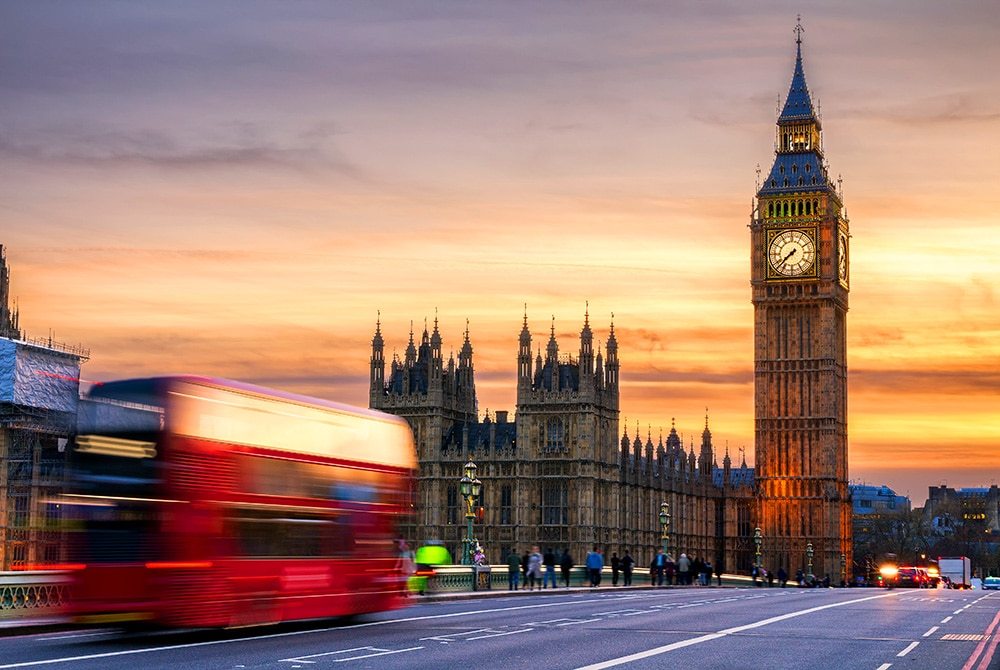
This comprehensive guide to getting around London will help you understand and navigate the London Public Transport System so that you can spend more time enjoying the city instead of deciphering Underground maps!
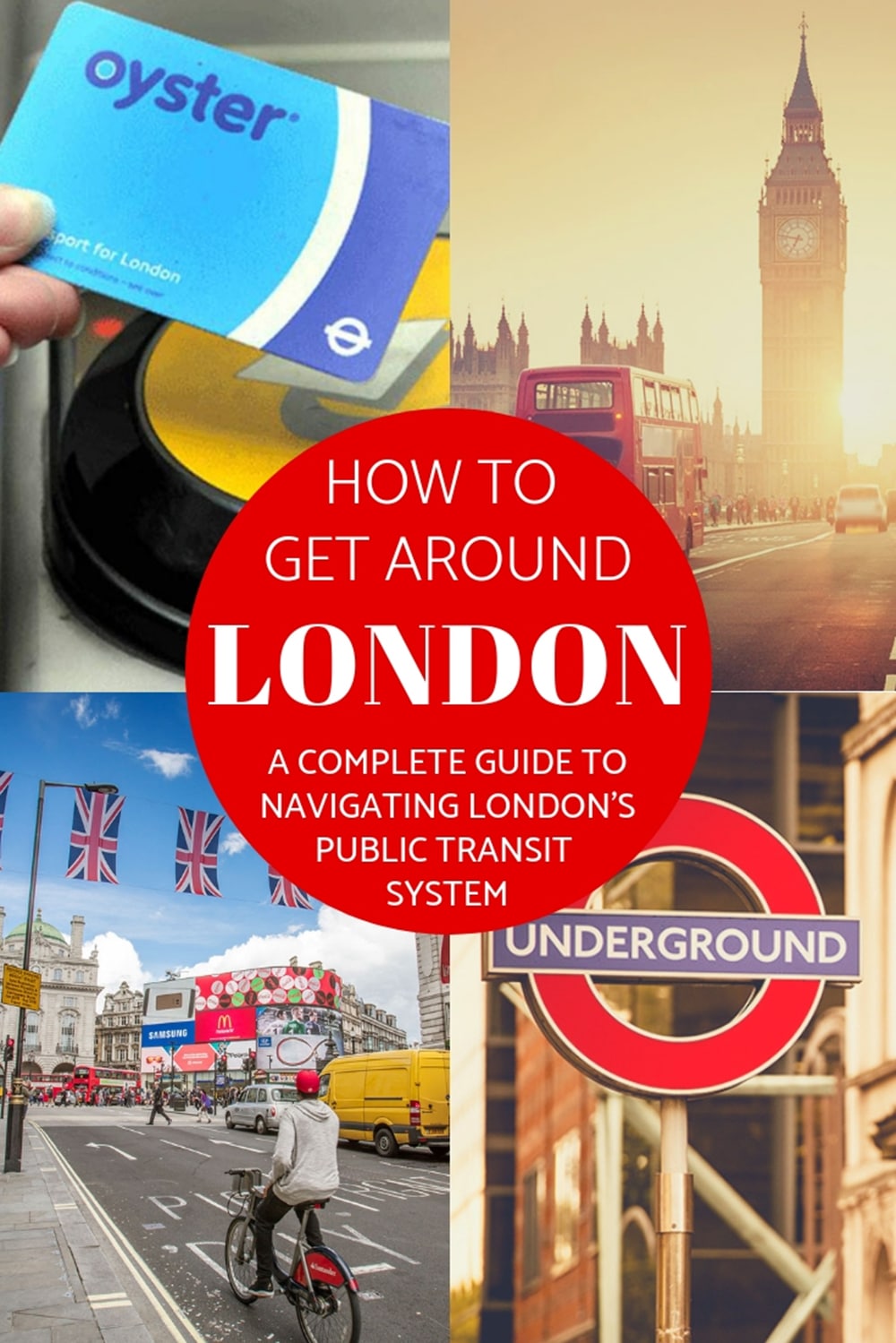
First of all, if you’ve decided on visiting London, let me congratulate you on your excellent taste. It’s my favorite major city in the world and one of my all-time favorite destinations. While there are a million things to do in this amazing city, I want to be sure you know how to get around London before you go.
Our family spent several months living in London without a car and also several months living outside the city, and we have also been back to visit several times. Using London public transport is one of our favorite things to do in London and I think it’s actually part of the fun of this city and what makes it so special. While the London transport system is as extensive as the human nervous system, it can also be simplified and easy to use.
Since it’s such a huge city, getting around London can consume a good portion of your trip, but I’m going to share some tips that will help you to understand your options and make the most of your time. Sometimes transportation in big cities can be kind of a drag, but in this city, it’s all so iconic, clean and easy that it makes getting around London part of your true experience. Here are some tips to help make getting around London life go smoothly.
Don’t have time to read a bunch of reviews and blog posts? Here are our top picks for visiting London:
Wanderlust london guide.
If you’re traveling to London, you’ll want to have a solid itinerary that will help you organize your time in the best way possible and maximize your time and money. I’ve created this 5-day London itinerary that will help you see the best sites in London along with some hidden gems. It contains open-and-go day-by-day schedules and expert advice from me!

Our favorite Hotels in London
- Marriott County Hall
- Georgian House Hotel (Harry Potter Chambers)
- The Mad Hatter Hotel
- H10 Waterloo
Must Have: London Pass
Our Favorite London Activities
- Hop On Hop Off Bus
- Tower of London
- Harry Potter Studio Tour
How to Get Around London: The London Public Transport Zones
London is conveniently…or maybe just confusingly…divided into 9 different zones that determine your fare on most public transport. The zones are circular with 1 in the center and 9 being the outer circle. Zones 1 and 2 are contained in central London. In the London transportation system, the fare generally gets more expensive the more zones you cross.
How Much Does it Cost to Use London Public Transport?
Getting around London is fairly affordable, especially if you’re traveling with kids , since ages 10 and under ride anything that uses an Oyster Card for free, including the Underground and the Bus. Fares for riding each mode of transportation differ. The London buses cost around £1.5 per ride. A single tube fixed price is £2.40 with an Oyster card, but the card has a daily cap and even weekly cap which you can see in the chart below, which means that if you’re riding London public transport all day long you are saving a ton of money.
Different Types of London Public Transport
- Underground
- National Rail
- Heathrow Express
I know that list seems long and scary, but don’t be worried, it’s great to have options and you don’t need to use all of these! I’m going to break down each option so you’ll know the ones that will work best for you.
1. The London Underground
The most well known, and most used London public transport is the London Underground, also known as “the Tube.” It is the oldest underground transportation network in the world, first opening in 1863, and carries over one billion passengers a year. The system is vast, with over 250 miles of track and over 200 stations.
The London Underground is the best way to get around London if you want to move quickly across a large area. And thanks to its efficiency, trains are usually on time. You can easily find “Tube Stations” all around the city that will allow easy access to its 11 different colored lines. The stations are easily recognizable with the big red circle with “UNDERGROUND” written across it.
Trains generally run at least every 10 minutes between 5 am and midnight, some lines offering 24-hour lines. You can plan your journey on the London Underground here or you can use Google Maps on your phone. To ride the London Underground, you’ll need a ticket or an Oyster Card. Oyster cards are plastic credit card like passes that you can “top up” (add money to) at any time.
They work on the underground, bus systems, and some National Rail. Children 10 and under ride the bus and tube for FREE ! To buy your Oyster card, find a machine in any Tube station or ask an attendant. To ride the Tube, hold your Oyster Card over the indicated area on the barriers on your way in and out. The barriers will automatically deduct your fare from your card.

2. Black Cabs
Of course, you can’t leave London without getting a ride from a London Cabby. The cabbies are required to take a difficult test to get this job. It can take years to study and pass the test and they must know the streets of London like the back of their hand! If you want to know about something you pass, ask the cabby, he most likely knows a bit about everything! London cabs seat 5 in the back.
They can get quite expensive so we try to save them for a rainy day (literally). Some cabs take credit cards, but about 80% of the ones we took were cash only. Fares are metered and paid upon completion of the journey. As a common courtesy, it’s always a good idea to go to the passenger window of the cab before getting in and telling them where you’re going to be sure they are willing to go there, especially if it’s far.
When the Taxi sign is lit, the cab is empty. To hail a cab, stand on the curb and hold your hand up. Also, look for designated Taxi pick up spots and be sure not to stand on a “zebra crossing” because they are not allowed to stop there.
My personal favorite way of getting around London is in the iconic red double-decker buses. With over 2 billion journeys a year taken by bus in London, this is the most popular mode of transportation in the city, and for good reason. Here are a few reasons why I think the bus is the best way to get around London:
- Cheap: There is a set fare per journey, so even if you’re going from one end of the city to the other, your fare is still only 1.50 pounds! Also, kids 10 and under ride free!
- Convenient: There are literally bus stops on almost every corner of London and the buses run continuously throughout the day and night, even stopping where there may not be an Underground station.
- Accessibility: If you’re getting around London in a wheelchair or with kids in strollers, the bus is the most easily accessible mode of transportation, lacking the necessity of stairs. If you have a stroller you can just wheel it right on to the bus.
- Oyster Card: You can pay for the bus using your Oyster Card by simply touching it to the yellow reader. You only need to use it at the beginning of your journey.
- The View: Riding the bus in London provides you with incredible views of the city and allows you to see more of London while in transit than you otherwise would by being underground on the Tube. Yes, it’s slower than the Underground due to being restricted by traffic, but I think the trade-off is worth it.
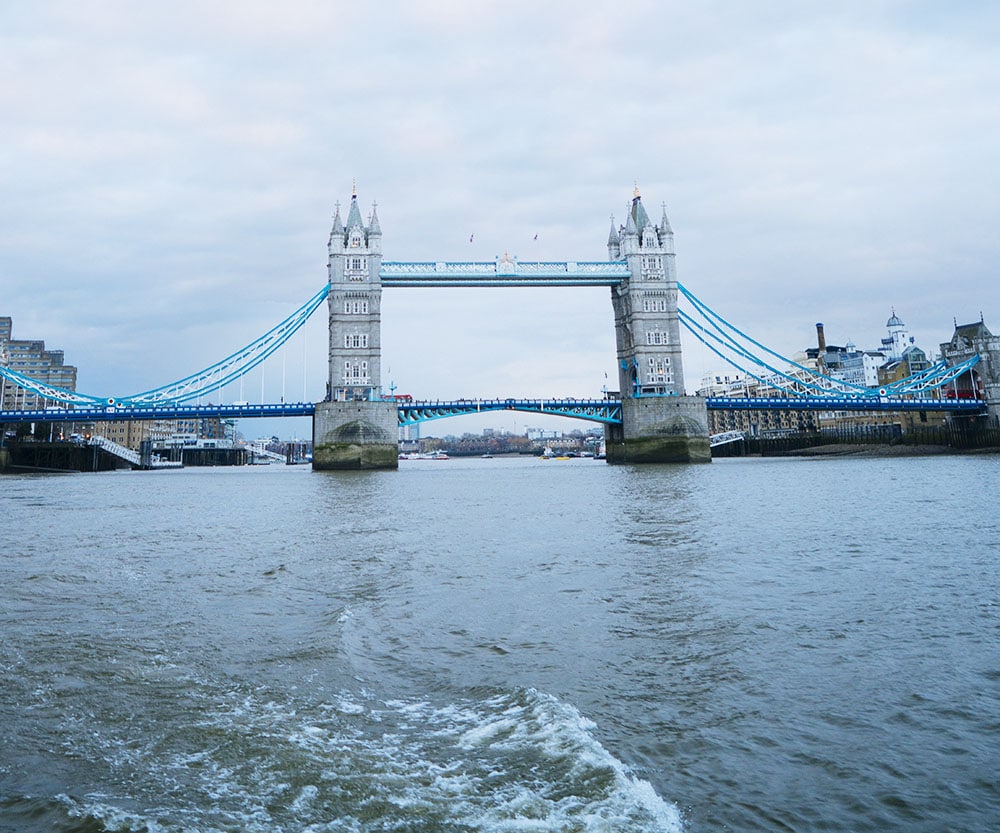
4. River Bus
Guess what else you can use your Oyster Card on? That’s right, you guessed it: the riverboats of London known as the Thames Clippers River Bus. I feel like this is one of the most underutilized modes of transportation in London. Maybe because it’s a little pricer or because the boats don’t run as frequently as the buses or the Tube, but the riverboats can be a convenient way to get across the city while seeing it from a truly unique perspective.
5. Overground
The London Overground is pretty much the Underground, but, you guessed it, above ground (even though much of the Underground is also above ground). The overground is fairly new and basically covers areas that the Underground does not. You can use your Oyster Card on the Overground and the fare system with zones is the same as the Underground.
6. DLR (Docklands Light Rail)
This fully automated rail system (without any drivers) services mostly the East and South of Central London near the docklands area of London. It works just like the Underground and Overground and you can use your Oyster Card.
7. National Rail
What?! More trains? Yes! Most national rail services consist of several different lines that connect London to the rest of the country. Many commuters use these rail lines to commute from the suburbs surrounding London. Your Oyster Card will not work on National Rail lines and children 10 and under are not free, but usually ride at a discounted rate. There will be machines at the station where you can purchase rail tickets and usually a ticket office where you can talk to a human.
8. TramLink
This small tram system services South London, so if you’re staying there you’ll need to know about this one. The TramLink has a fixed fare and works like the bus so you only need your Oyster Card on the way in, not the way out.
9. Heathrow Express
If you’re coming to London you’re most likely flying into Heathrow Airport, London’s largest international airport. If so, taking the Heathrow Express is the fastest way to get into the city center. Don’t make the newbie mistake of taking a cab all the way into London! Book your tickets ahead of time online here to get the best deal. Fares range from £5-£32 depending on when you book.
10. Ride Share
- UBER : UBER is regularly used and accepted in London. It’s an easy way to book and pay for transportation and you can now split fares with your travel buddies. It’s not quite the same experience as riding in a Black Cab in my opinion, but just as efficient. When we were there we found the price to be about the same, but you don’t have to worry about having cash on you for UBER at least. If you’ve never used UBER, don’t worry it’s fun, safe, and easy. Here’s a coupon for $5 off your first ride.
- Free Now : Despite its name, Free Now is not free, but it will save you a few pence! What I like about Free Now is that you can call a regular car or a black cab, which is much easier than trying to hail one down on the street! I’ve also found it to be a bit cheaper than UBER. Download Free Now for Apple . Download Free Now for Google .
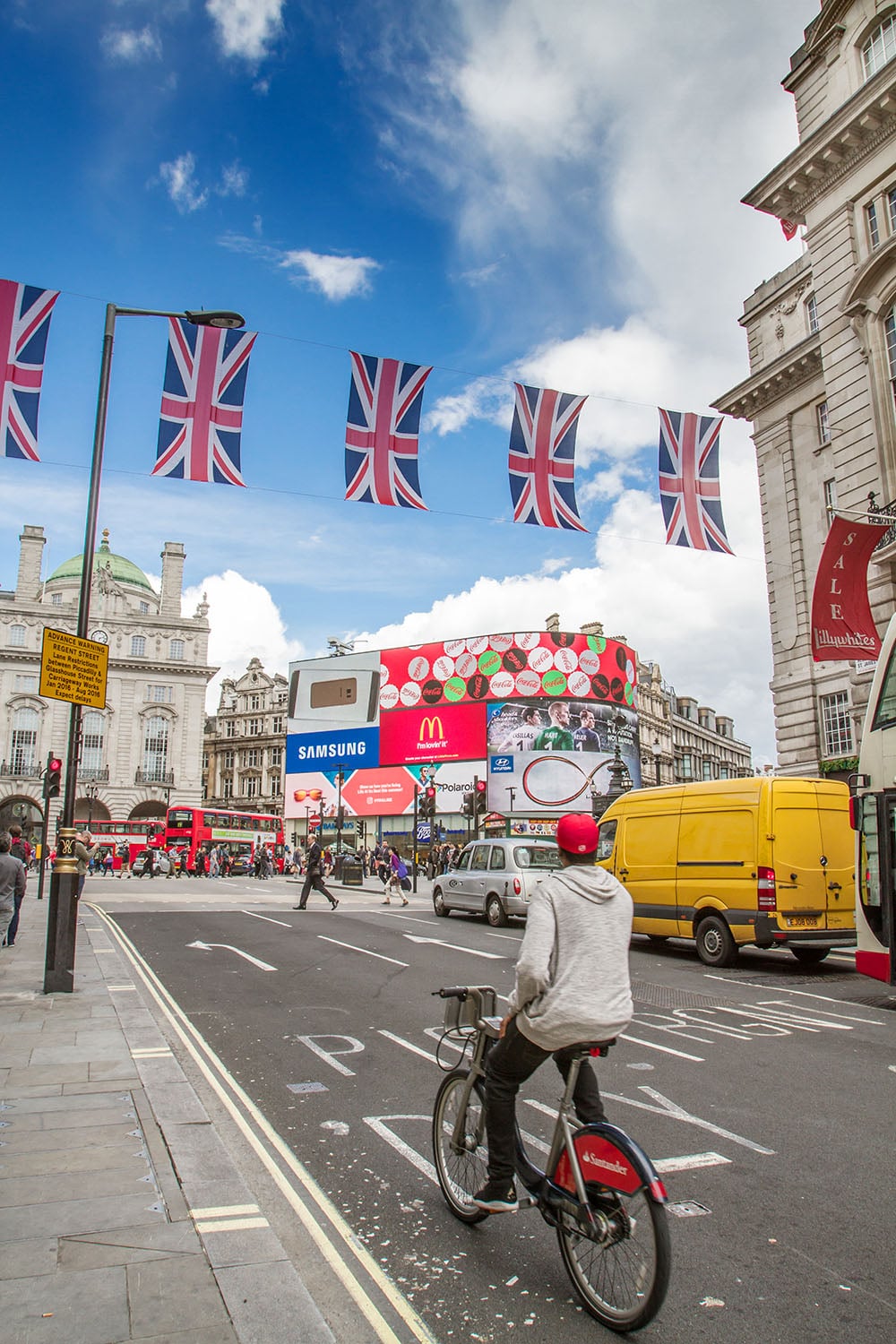
Biking around London can be a really fun and inexpensive way to see the city and get you from place to place on a nice day. The bikes with “Santander” written on them are affectionately known as “Boris Bikes” after Boris Johnson who was the Mayor of London when the bike program launched.
The bikes only cost £2 to access the bikes and the first 30 minutes are free. You could technically bike somewhere for 30 minutes, check in your bike, then check out a new bike and ride it for 30 minutes and so on, potentially paying only £2/day for your bike. There are 750 docking stations and 11,500 bikes to rent around London. You can use a credit card or the app to pay for your bike.
London has also recently put in millions of pounds to creating more bike lanes around the city to help the environment and the flow of traffic. They’ve done a nice job and you’ll see dedicated lanes for bikes all around the city, and especially in the most congested areas.
If you want to know how to get around London on a bike, you can learn more about the London Bike Scheme here .
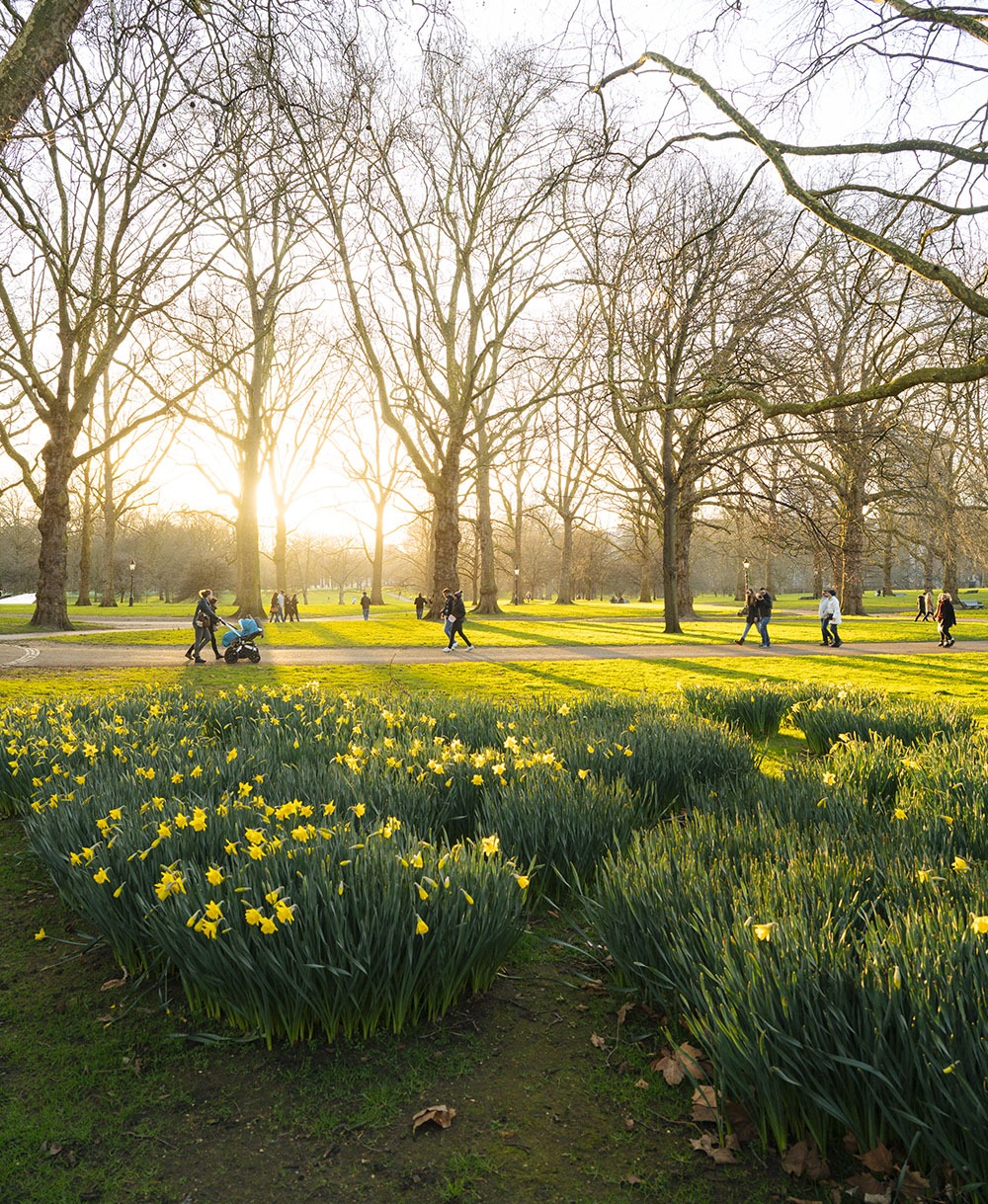
12. Walking
Walking is a great way to see a lot of London. Most things in central London can be seen by walking and it’s a great way to make more room for all those delicious foods you’ll be eating! Plus, if you’re on a budget it’s the best way to get around London. Be sure to check the distance between you and your destination on Google Maps. You’ll be able to see a different view of London by walking the city. London is full of beautiful parks and they can make great short-cuts and lovely walks.
What is the Best Way to Get Around London?
While there’s no right or wrong answer to this questions, I definitely have my favorite ways of getting around London. As I’ve stated above, the bus is my personal favorite way to travel in London, but the Underground may be the fastest. If you’re lucky, you’ll have the chance to use every mode of transportation during your time there.
Do You Need an Oyster Card to Travel in London?
Having an Oyster Card in London is not strictly required, but I would highly recommend getting one. A London Oyster Card is the cheapest way to get around London, it covers journeys across London’s public transport networks including the Tube lines, buses, overground train station, and DLR, and can be used any time of the day throughout the week.
It makes life easier and will be more affordable. There is actually a price cap currently of £9.80 for zones 1-4. So you know that you won’t be paying more than that each day you are in London, regardless of how many times you ride. This article from London Toolkit about the London Public Transport fares was really helpful.
Go Contactless
Use your contactless card, phone, or watch to pay for the tube map. Now riding the tube and bus is even easier with contactless payment. Just use your card, phone, or watch as you would when making a purchase. Be sure to “swipe” in and out using the same contactless card so you’ll be charged the correct fare.
Tips for Getting Around London
- Buy an Oyster Card or Prepare Contactless Payment in Advance: Having an Oyster Card is a great option as it will allow you to ride multiple forms of transportation around London without having to purchase single-ride tickets.
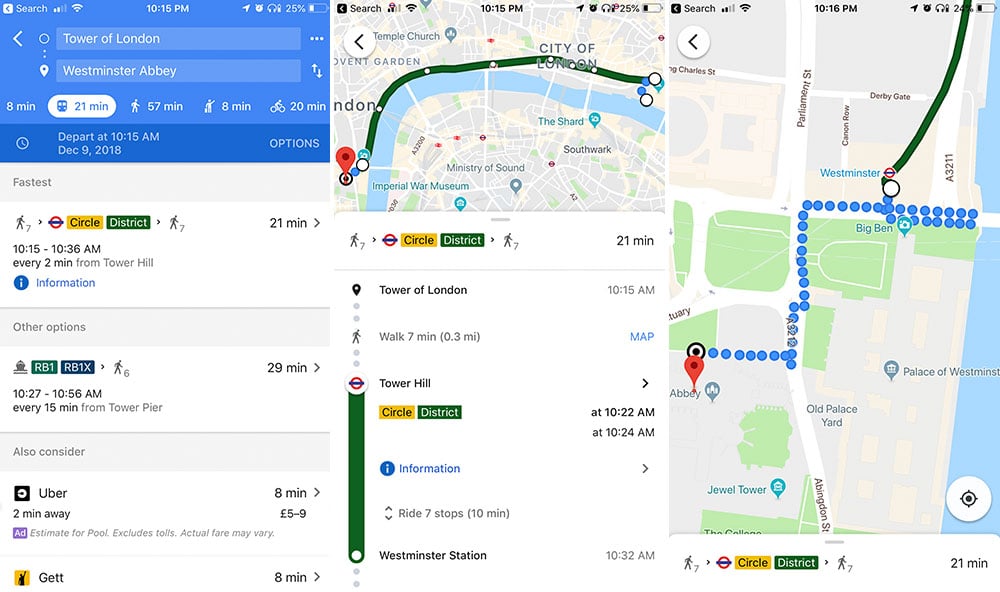
- Mind the Gap: Those signs everywhere that say “Mind the Gap”…they’re no joke! During my last trip to London, my nephew got stuck in the gap. It was pretty scary, so just be careful.
- Stand on the Right: When riding on the escalators, stand on the right or walk on the left.
- Travel During Off Peak : Try to avoid using public transportation between 7-9 am and 5-7 pm when trains and buses are crowded.
- Try New Things: Don’t be afraid to try different types of transportation like riverboats.
More London Resources
If you need more help planning your trip to London, check out these great resources!
7 Day London Itinerary London With Kids Paddington’s Guide to London Christmas in London
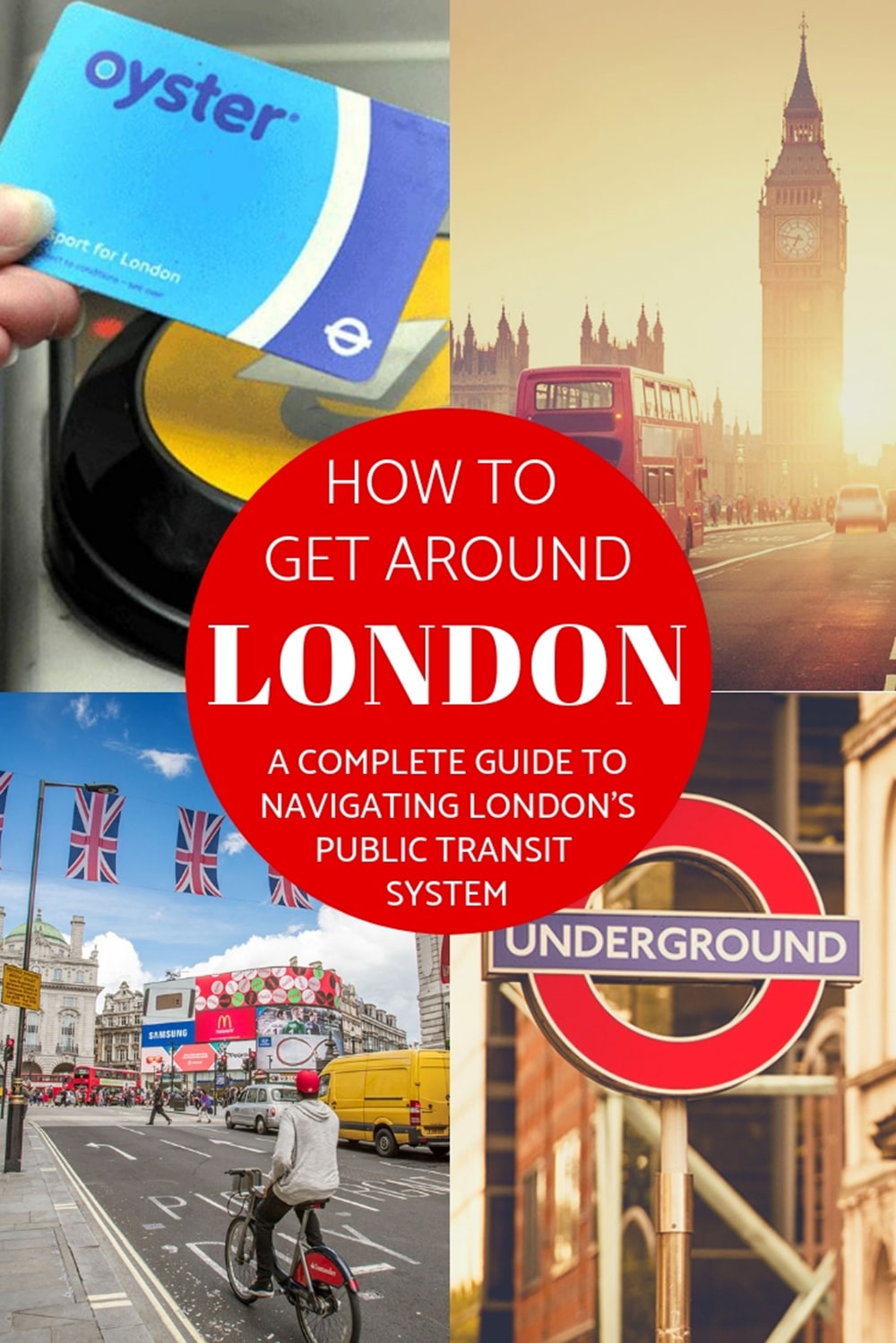
FAQ on How to Get Around London
There are several ways to get around London on a budget. The best way to save money is by taking public transportation such as the Tube, buses and overground trains. You can also rent a bike or walking is always free. Getting an Oyster card and using contactless payment are great ways to pay for your journeys. Additionally, look out for special offers and discounts when travelling.
The current price is £7 and £9.80 for zones 1-4. You can always top up your Oyster card with cash whenever you need.
It costs £20 for the Visitor Oyster card. This allows you to save £1.75 for a single journey with £5.25 as a daily cap. That’s why many tourists and even locals opt for the Visitor Oyster card when travelling around London.
Yes, as the underground stop is usually within walking distance from most places, it makes traveling around London easy. Trains always arrive in 10 minutes and the system is well connected. Additionally, there are Uber rides that are perfect for sharing in groups and other taxi services.
I hope this guide to getting around London has been helpful. You are going to love this city, and now that you know how to navigate it you’ll feel more comfortable and be able to enjoy seeing the sites without stressing about how to get between them. If you have any questions about how to get around London, please ask! You can message me on Facebook or Instagram . -Vanessa
Wanderlust Crew
3 thoughts on “ how to get around london: a guide to the london public transport system ”.
This is so helpful! We just booked plane tickets to London for the entire summer, and the prospect of transportation was causing me stress. So thank you! Do you have any recommendations on where to stay in London with kids?
Oh WOW! An entire summer?! Yes please!! That is going to be amazing. Be sure to check out my London Day trips post too and explore around the area. So many amazing things to see! For hotels we love the London Marriott County hall. Beautiful hotel. But normally we just do airbnb. I love staying near Kensington Palace.
Pingback: Tips to Save Money in London - Four Around The World
Leave a Reply Cancel reply
Your email address will not be published. Required fields are marked *
Notify me of follow-up comments by email.
Notify me of new posts by email.
This site uses Akismet to reduce spam. Learn how your comment data is processed .

The Ultimate London Public Transport Guide: Navigating the City Like a Pro
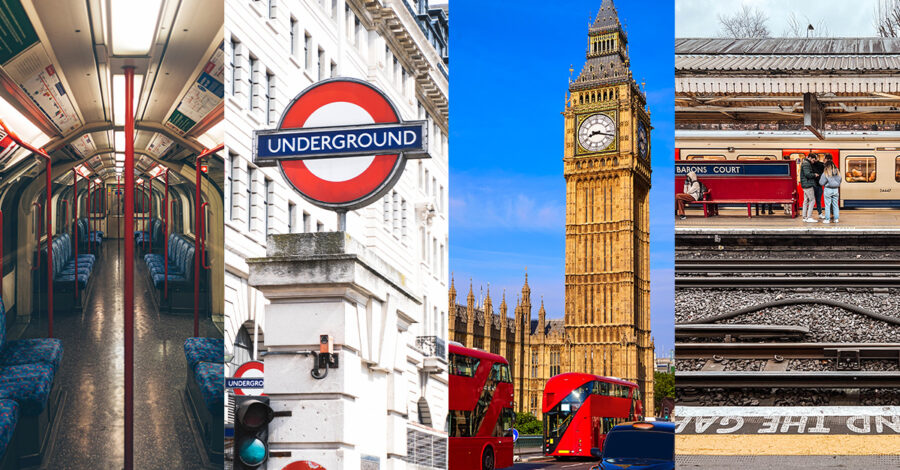
London is without a doubt one of the most electric cities in the world and its exciting attractions are rivalled only by its sheer size. While it might not be as enormous as Mexico City or Tokyo , London is a sprawling metropolis. Whether you’re planning on staying around the tourist centre or exploring the boroughs far afield from the city centre, which are definitely worth checking out, you’ll more than likely need a crash course on riding the public transport system in London. Uber and black cabs are so expensive in an already expensive city like London, so taking public transit will mean you can save those pounds for something special!
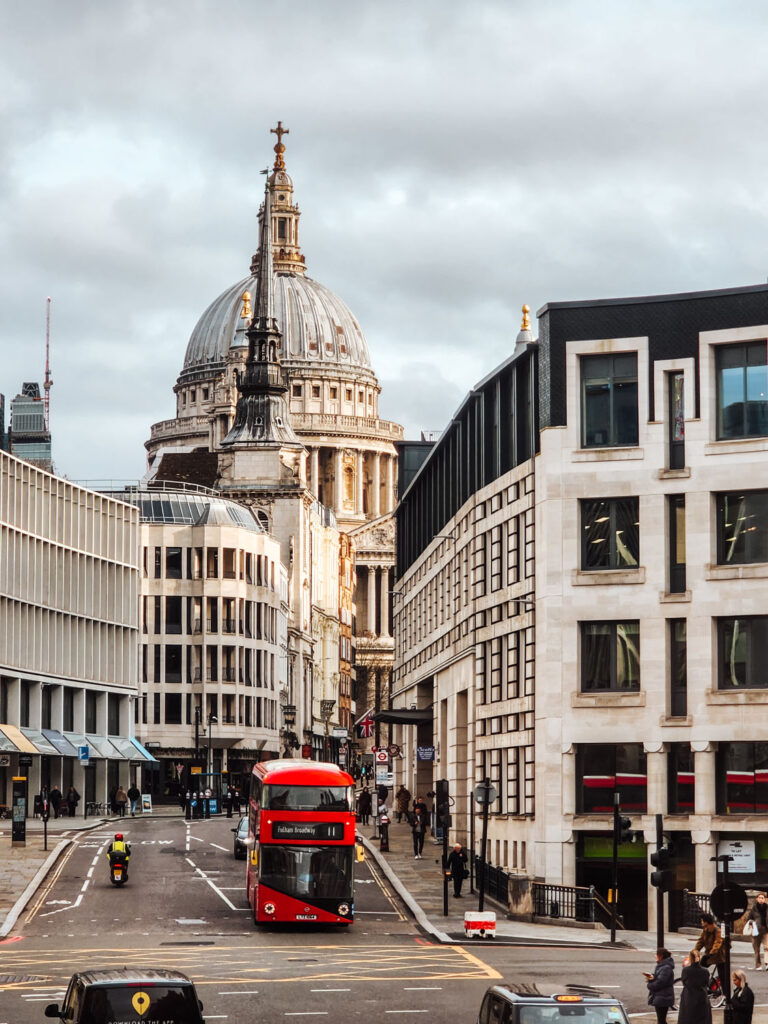
Oyster Card
Tips on using the london public transit.
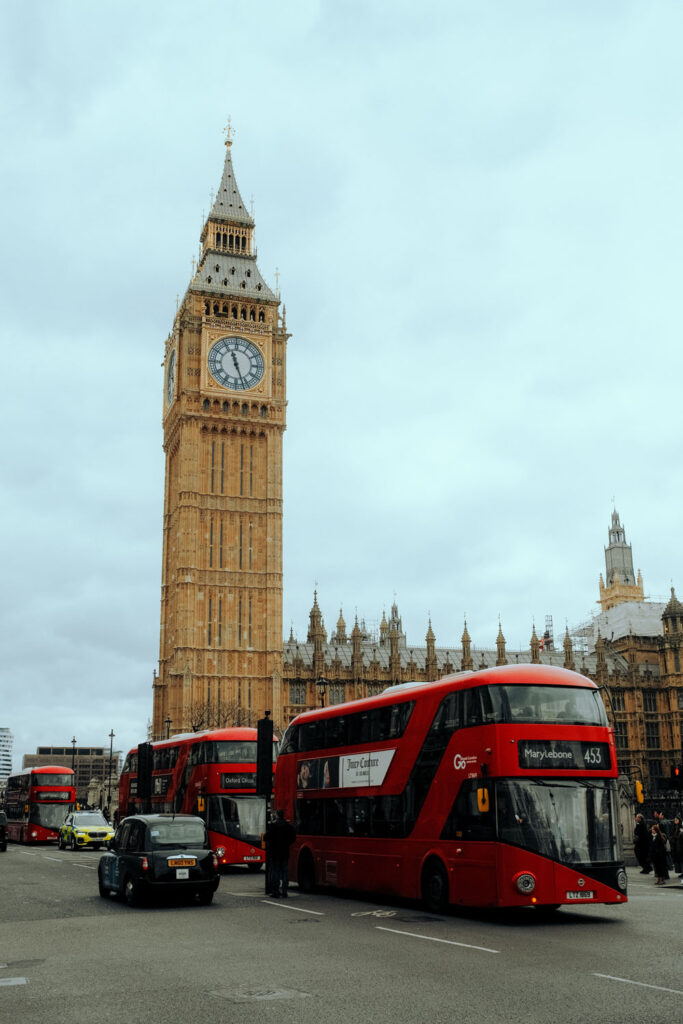
Getting Started: Grab an Oyster Card or Contactless Payment
Inside each station are ticket machines and offices to purchase single tickets. But no one should buy these single paper tickets as they are almost triple the price of using an Oyster Card or Contactless payment . A zone 1 fare using an Oyster card or Contactless payment is only £2.50, but purchasing a single ticket in cash would cost you a whopping £6.30!
An Oyster Card is a smart card used for travel on public transport in London. Oyster cards work by pre-loading money onto the card, which is deducted automatically when you use it. The card can be used on the London Underground, all London buses, trams, the Docklands Light Railway (DLR), the London Overground, River Buses, and some National Rail services. Using an Oyster card gives you a discounted fare on every ride you take vs cash tickets.
To use your Oyster card, you must tap on and off when you pass through the turnstiles entering and exiting tube stations. When using the oyster card on the bus, you only need to tap on. There is no need to tap off. The Visitor Oyster card costs £5 . After getting your card, you need to load it with additional money to travel. You will not get this £5 back, nor will it be added to the balance of your card. You need to find a ticket machine inside any Tube station to load your card with the money. Here you can select how much you want to add to your card. I would start with £20 and reload as needed. You can’t get the money left over on the card back at the end of your trip, so load wisely.
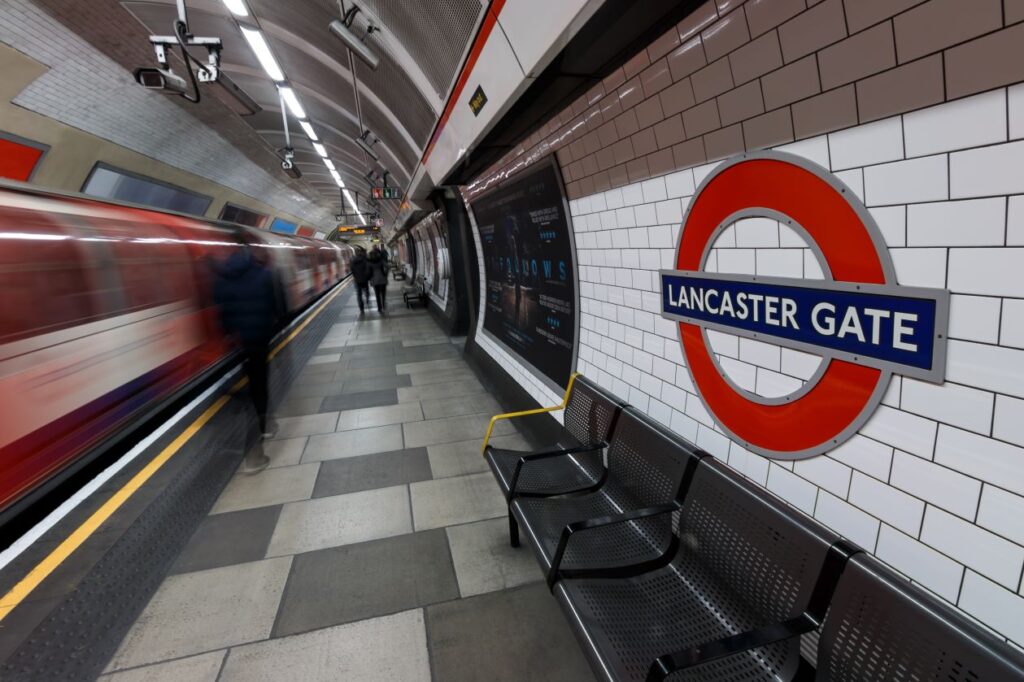
Contactless Payment
In 2022, the Tube introduced the contactless payment option for transport around London. If you have a debit or credit card with a chip that can be read wirelessly and is enabled for contactless use, you can use this method to pay for your journey directly at the turnstile. Just as you would with an Oyster card, this also works with your phone using Apple Pay. Simply touch the contactless payment method to the yellow card reader on the turnstile, and you’ll be let right on through. And do the same thing when you exit the station. You will be charged at the same discounted rate as Oyster card users. This will save you buying the £5 Visitor Oyster card and prevent you from losing any unused money you don’t spend. Plus, you’ve never needed to worry about queueing in lines to reload your card.
But remember, whether you use your Oyster card or contactless payment, you must use the same one when tapping in and out. Otherwise, the fare reader won’t know where you came from. Upon leaving, you’ll either be denied the ability to exit or charged the highest fare option. Even if you only took a short journey. So be sure to remember how you tapped on.
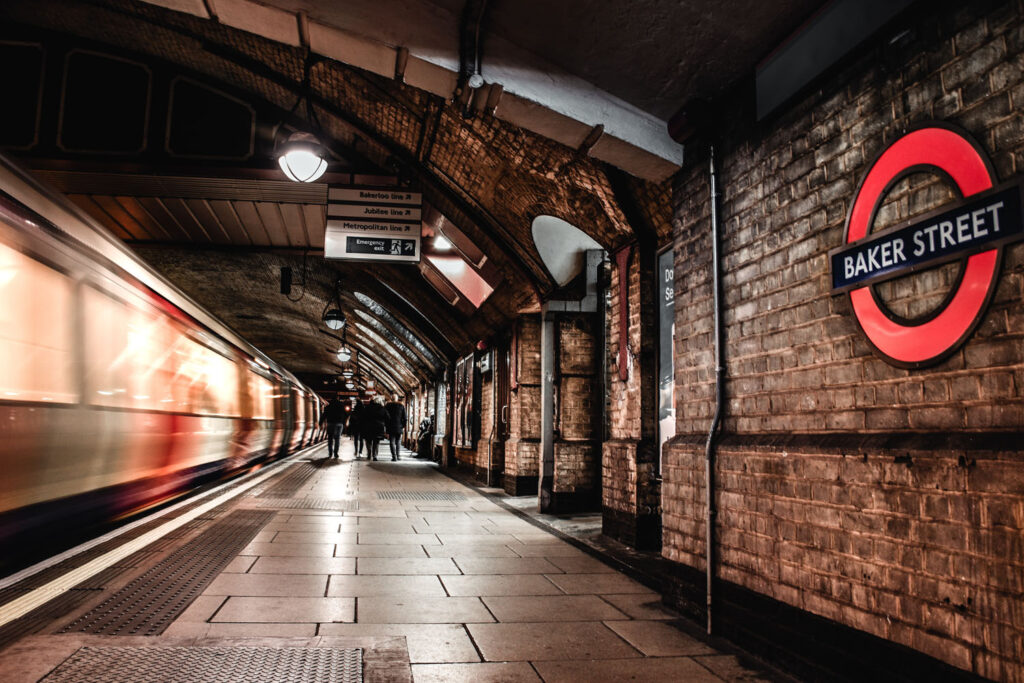
Oyster Cards vs. Contactless Payment
The biggest downside of using Contactless Payment is foreign transaction fees . All payments on the Tube will be made in GBP. Before you travel, check with your card issuer to ensure you are not charged expensive transaction fees for foreign currency when using contactless payments. These fees could become more costly than your contactless payment savings.
The other issue with Contactless Payment is that it doesn’t support concessions , such as senior, student, and children fares. Using contactless payment, you’ll automatically be charged the standard price for transport on the Tube. If you fall into any of those age categories, buying yourself the proper concession Oyster card for your age is much more important as you’ll receive the correct fare pricing.
Daily Transport Cap
No matter how much you travel throughout the day, there is a maximum fare cap of £8.10 (for zones 1-2) if you pay with your Oyster Card or Contactless payment. Any additional trips will be free if you’ve already passed your fare cap! As tourists, running around from place to place can be super handy! You can check out the daily transport limit on the TFL website by searching the different zones you’ll be travelling in. Thanks to these daily caps, tourists do not need to buy those daily transport cards, as you’ll find the prices far more competitive using the Oyster or contactless payment system.
Accessibility
Accessibility on the London Underground has come a long way in recent years, with many stations now equipped with step-free access. And other facilities to make travel easier for passengers with disabilities. For users in wheelchairs, the Tube offers a range of accessibility features to help them easily navigate the system. Some stations also have lifts or escalators to provide access to the platforms. Additionally, all newer trains are equipped with accessible features such as wider doors, wheelchair spaces, and audio and visual announcements to assist passengers with disabilities.
The Transport for London website provides detailed accessibility information for each station, including information on step-free access, lift availability, and other facilities such as accessible toilets and hearing loops. You can also download accessibility guides and maps to help you plan and make journeys.
More than 9,000 buses are wheelchair accessible. And Wheelchair users are not expected to pay to ride the city buses. To learn more about London’s Public Transport accessibility, check out this website .
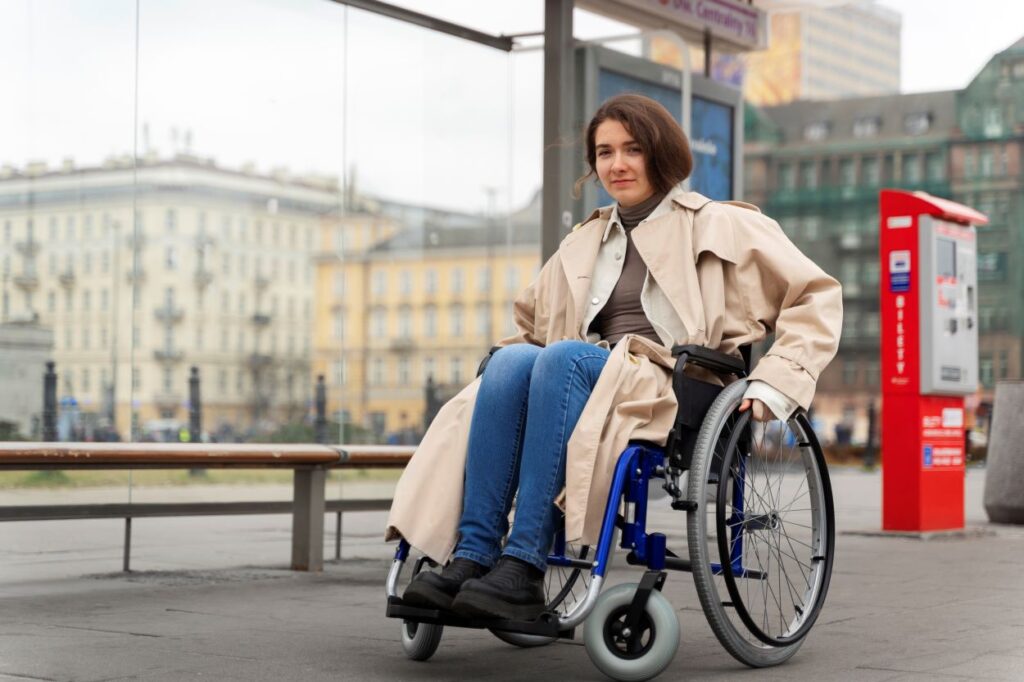
The London Underground
No matter where you’re heading in London, you’ll be able to get there in no time and with ease by using London’s phenomenal Underground metro system . The London Underground is one of the world’s oldest and largest underground railway networks, with 11 lines and 270 stations.
Each line has a unique colour and name, making it easier for travellers to navigate the city. Passengers can switch between lines at designated interchange stations, marked on the map by white circles atop the intersecting lines.
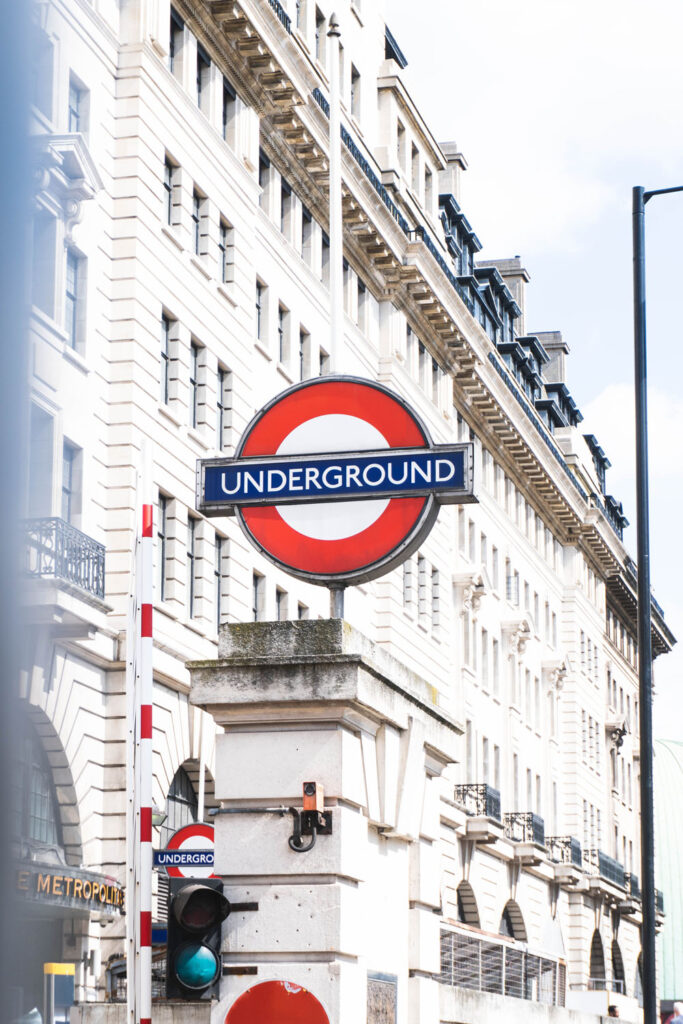
The London Underground, or ‘Tube’ for short, is a system divided into nine zones. Starting with Zone 1 , which is centred around the main area of London. With each subsequent zone spreading outwards from this central point. Ending in Zone 9 , which covers the outermost areas of Greater London. The fare for a Tube journey depends on the zones you travel through. Most major tourist sights are located in Zone 1 and 2, where the fares are the lowest. The fare will be calculated by the station in which you enter and the station you exit.
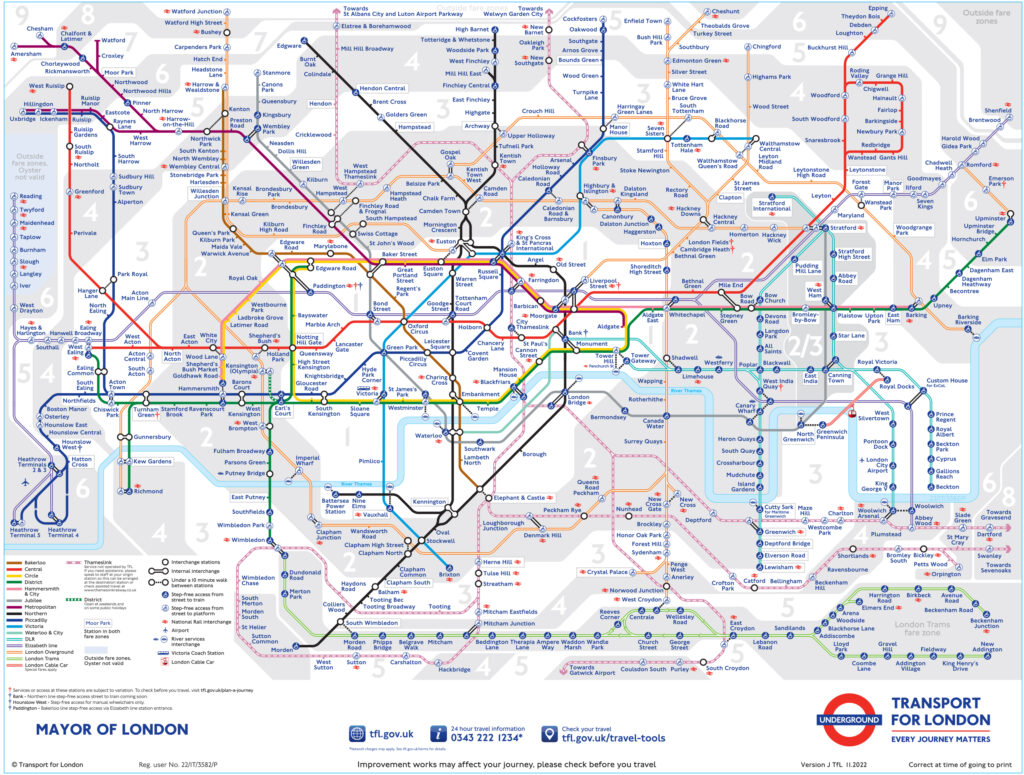
London Buses
The iconic London bus is a great way to see the city. With over 8,600 buses covering 700 routes, you can get pretty much anywhere in London by bus. Buses run from early morning until late at night, with some night buses running 24 hours. Taking the bus is a great way to see London’s sights and soak up the atmosphere if you’re not in a hurry. Go to the upper level, and you’ll get a scenic view as you ride.
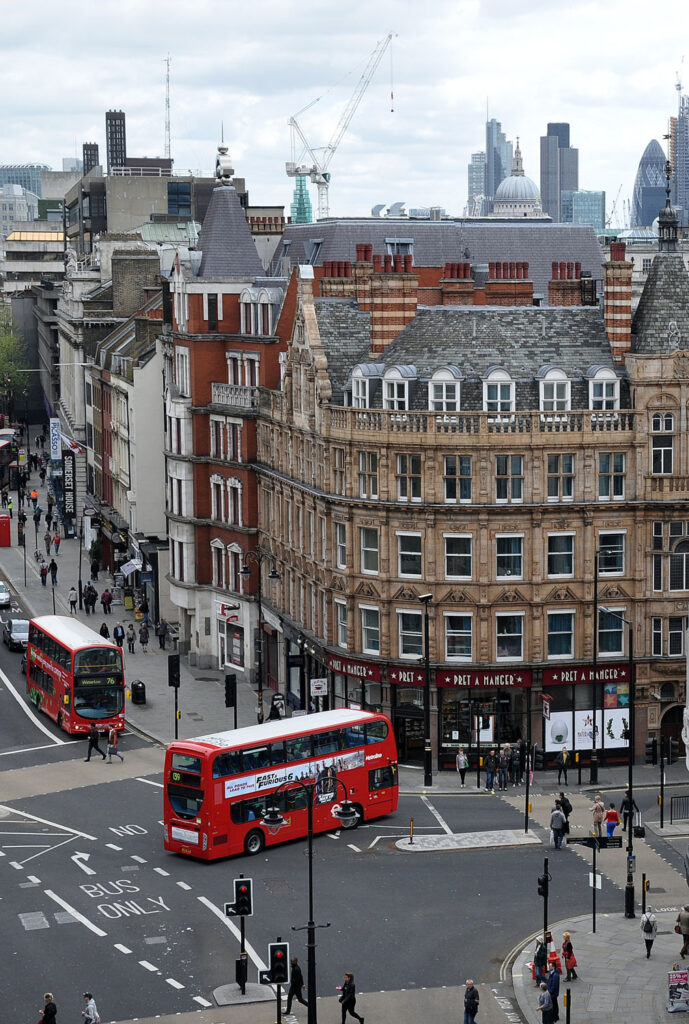
How to Flag Down a London Bus
Unlike bus services elsewhere I’ve travelled, just because you’re standing at a bus stop doesn’t immediately mean the incoming bus will stop for you. Since there are so many different routes that offer service at that same stop, you need to flag them down to indicate you would like to get on the incoming bus. When you see the bus approaching, raise your arm to signal the driver to stop. Once the bus has stopped, you can board it. If you have a contactless or Oyster card, tap it on the reader by the driver and find your seat! To get off the bus at your intended stop, press the bell button to alert the driver when you hear your stop announced on the system.
Take a Ride on the #11 Bus
If you ride any double-decker bus in London, ensure it’s the #11! This bus is often dubbed the “ Sightseeing Route, ” as it passes many of the city’s major landmarks and tourist attractions. The route passes through popular areas such as Chelsea, Kensington, and Westminster before ending on Liverpool Street. Some of the major landmarks and attractions that the #11 bus passes by include: Hyde Park, Marble Arch, Oxford Street, Trafalgar Square, Houses of Parliament, Westminster Abbey, St. Paul’s Cathedral, Victoria and Albert Museum and Harrods.
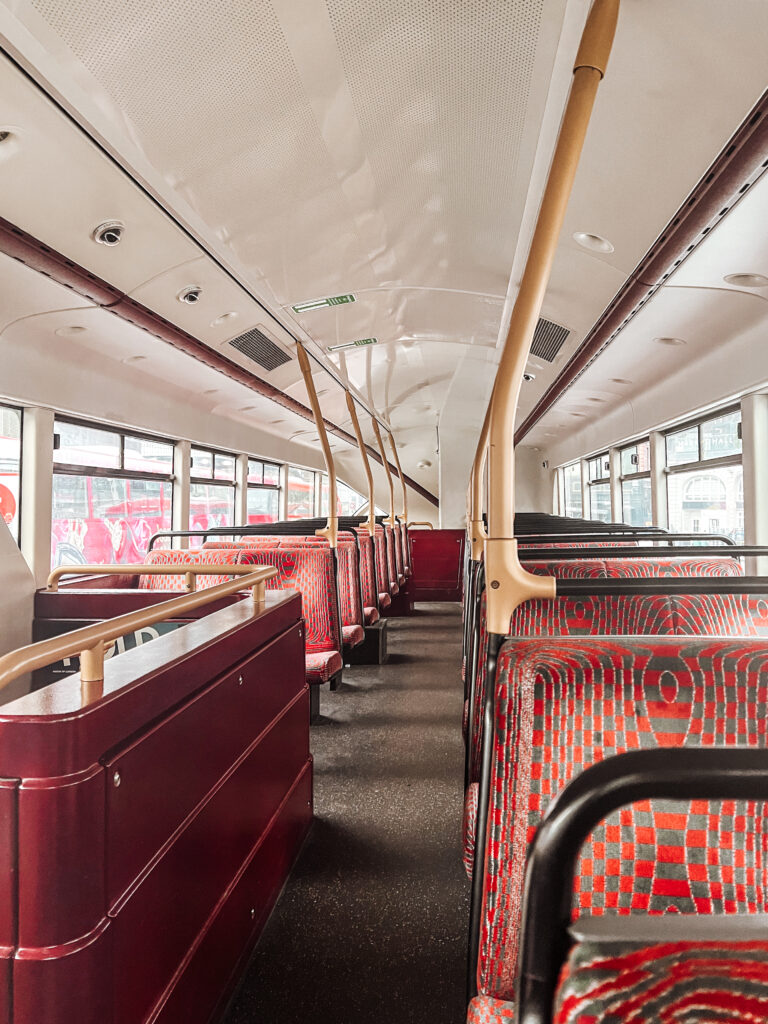
Many first-time tourists in London book tickets onto those Hop-On Hop-Off buses. These are considered special as they have open-top decks that provide some photo opportunities of iconic landmarks. And easily takes you from sight to sight around the city. But since London is prone to rain, you often pay £40 to sit inside on the lower level and miss out on all those sights. But you can always sit upstairs on the public bus as they are covered. And on the #11 route, you’ll see all those iconic landmarks. The route runs every 6-7 minutes during the day, making it a convenient and affordable way for visitors to see many of London’s top sights without the huge price tag. Bus fares are set at £1.75 per journey.
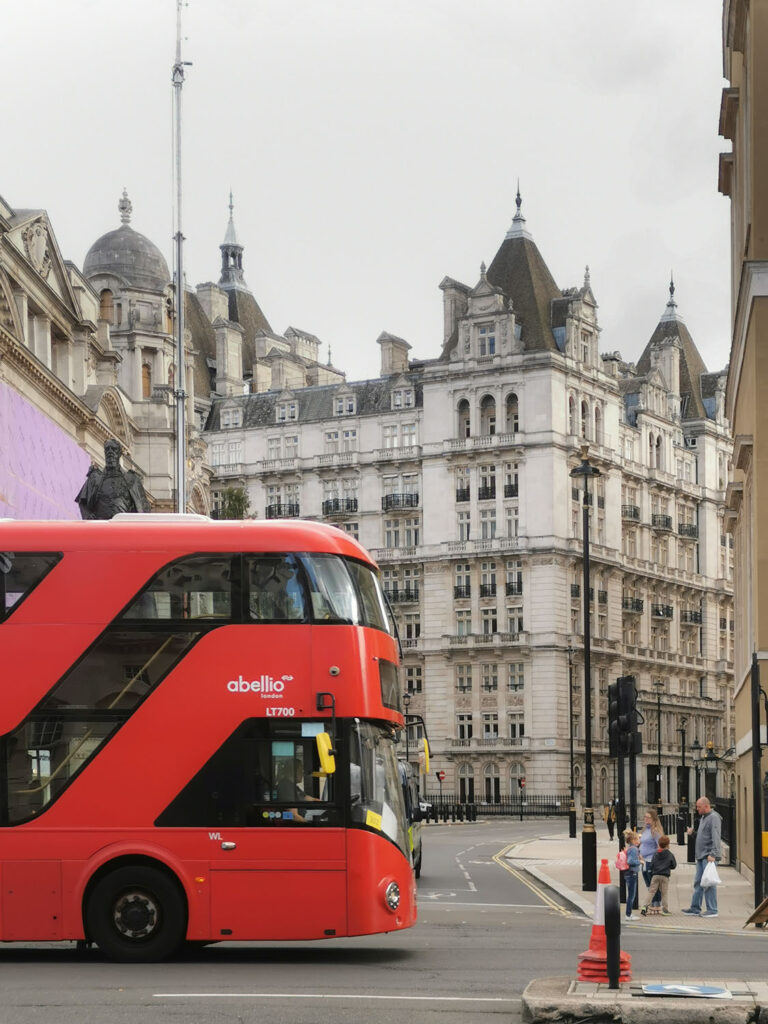
The Docklands Light Railway, or DLR, is an automated light metro system that serves East and South London. The DLR is a great way to get to the financial district, Canary Wharf, and London City Airport. It’s also a great way to see some of London’s lesser-known sights, like Greenwich and the Royal Docks. You can use the same contactless payment or Oyster card on the DLR.
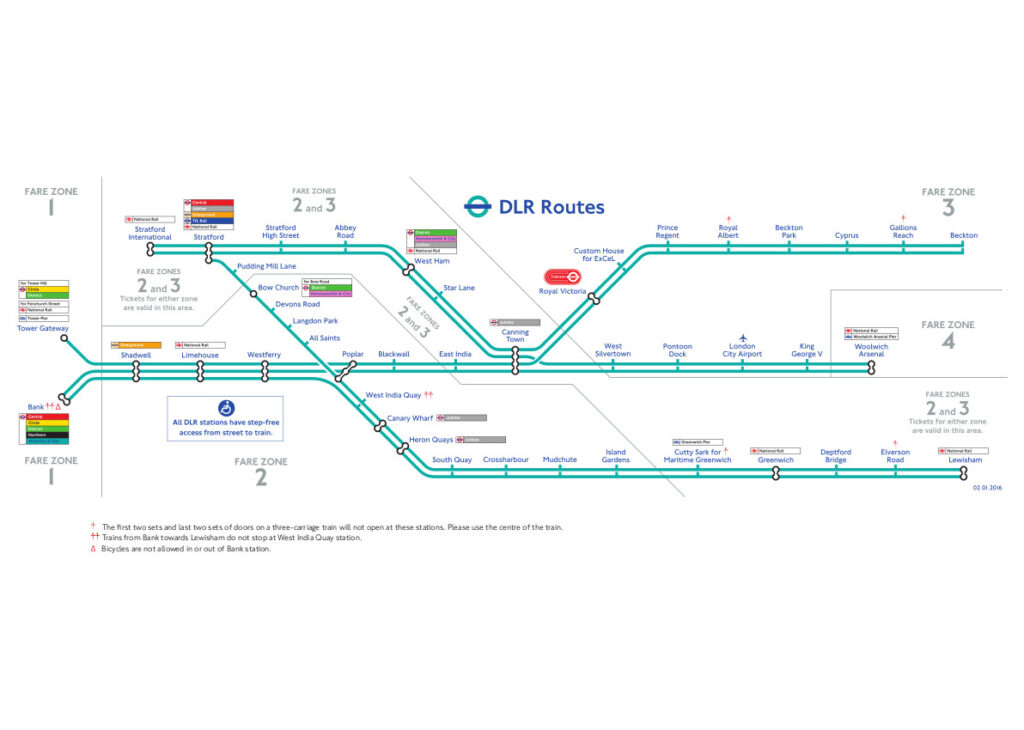
The Overground
The London Overground is a suburban rail network that covers much of Greater London. It’s a great way to get to places like Camden, Hackney. If you’re travelling with kids, the Overground has fantastic views of London, so sit by a window.
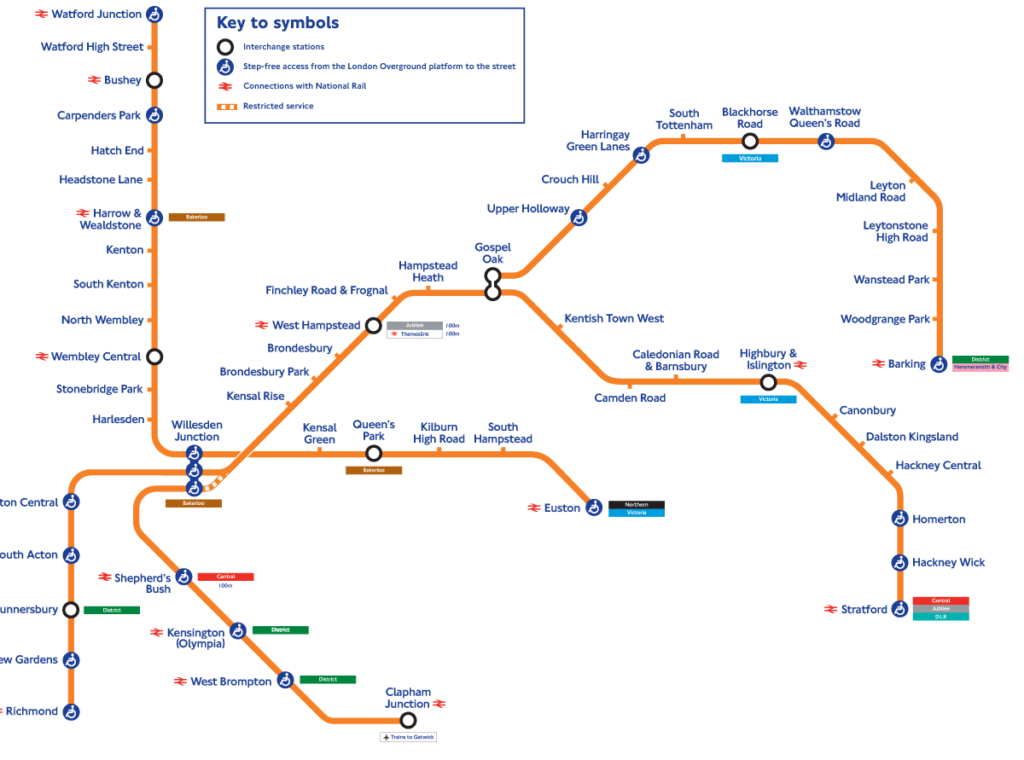
The River Bus
While in many other European river cities, taking a ride along the river is reserved for private boats and river cruises, in London, many boats are considered public transit. The River Bus service is a unique way to see London’s landmarks from the water, including the Tower Bridge and the London Eye. You can use your Oyster Card or contactless payment to ride the River Buses. The River Bus map might give you some ideas of the amazing places you can travel along the Thames, like Hampton Court, Greenwich, and even Woolwich.
Navigating Public Transit System
There are a few different apps I use to navigate around the city. The first is the official TFL app. This app is often the most up-to-date regarding delays on the system. It provides several options for your journey, including step-free access for those users requiring accessible entrances. I especially love this app because it shows the fares alongside each option. That way, you won’t automatically choose the fastest option if the cheaper option is only a few minutes longer.
The one downside I found when using the TFL app was that while it does list the time on a bicycle to the destination, it does not list the walking times. In a city like London, walking is one of the best ways to explore as it allows you to best connect with the neighbourhood and make little detours whenever your eye catches something interesting. For this reason, I would also frequently use Google Maps, which allowed me to get the walking distances compared to public transport. Sometimes, I know I’m miles and miles from home and wouldn’t bother with Google Maps, but if I’m close enough, I would usually opt to just walk home. And see the sights along the way.
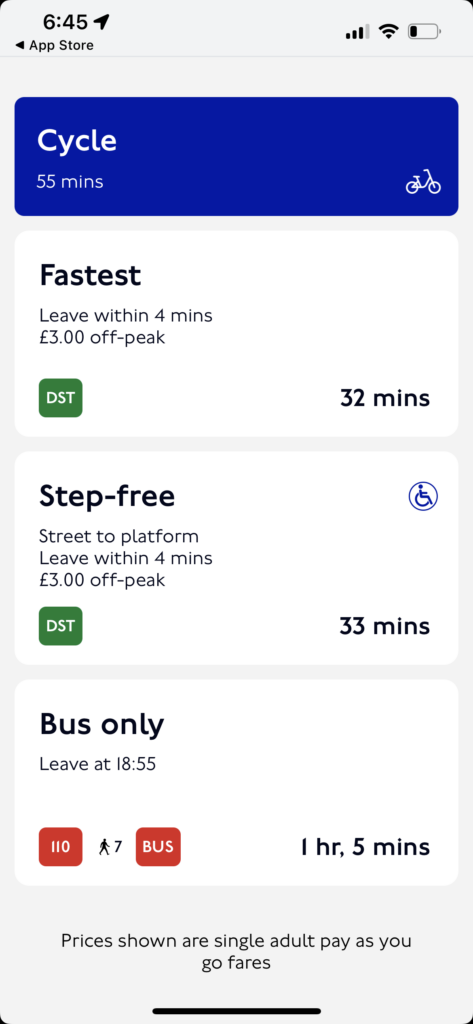
Plan your journey in Advance
Using the Transport for London website or app to plan your journey before you leave is always a good idea. This way, you know which line to take, where to change trains, and how long your journey will take. The Tube generally runs from 5:00 am until midnight, with some lines running 24 hours on weekends. Operating hours are slightly reduced on Sunday. If you plan on staying out late on a weekday, be aware that the Tube might not be running after midnight, so make arrangements for alternative modes of transportation.
Avoid Rush Hour
Be aware that, like all big cities, various popular Tube lines can get extremely crowded during peak hours. This might mean you might have to wait for a few trains to arrive before finding a spot, even to stand inside. You’ll easily miss these crowded trains if you avoid travelling on the Tube during rush hour. So plan around this if possible.
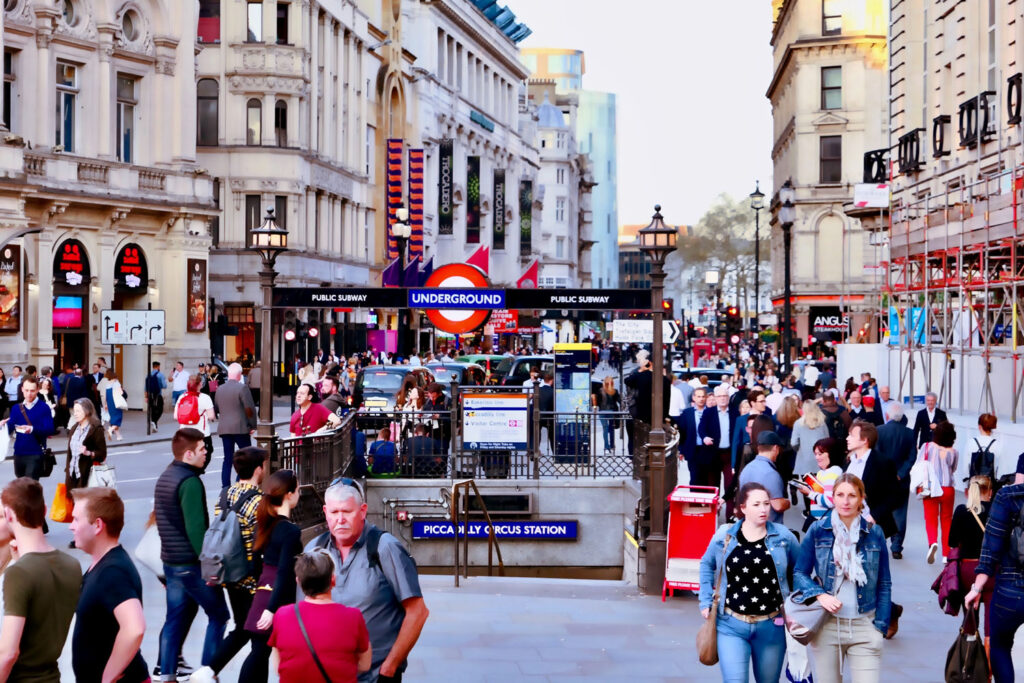
Mind the gap
The famous “mind the gap” announcement is more than just a catchphrase. The first time I ever really saw this fabled “gap,” I was shocked. In most other metros around the world, the gap between the platform and the train is, at most, a few inches, but I’ve arrived at a station in London where it almost required me to jump across. So they really aren’t kidding around! So watch your step when boarding or exiting a train, as there may be a significant gap between the platform and the train.
Stand on the right
In London, when using escalators, always stand on the right side. And leave the left side free for people who want to walk up or down the escalator.
Keep An Eye on Your Belongings
In London, like in many big cities, the Underground is a popular place for pickpockets. They are good at their “job,” so many people don’t know their wallet is missing before it’s too late. Keep your bags close, and wear any backpacks on the front of your body. Be sure when using your phone to keep a good handle on it, as some people have had their phones swiped right out of their hands.
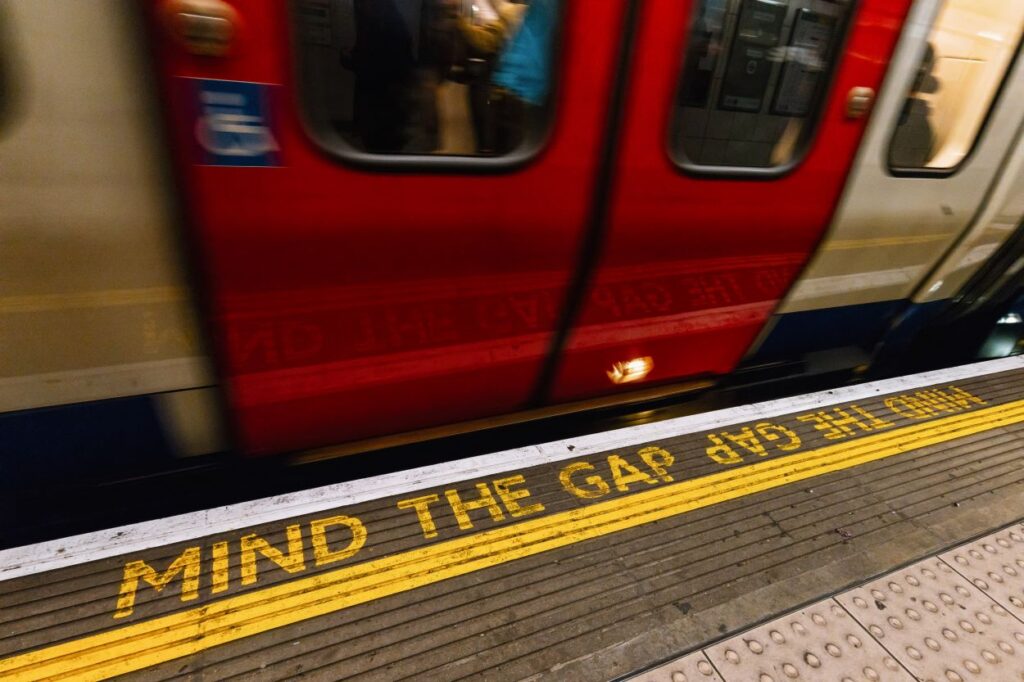
Be courteous and quiet
Londoners take public transportation very seriously, and being courteous and considerate to other passengers is important. Offer your seat to someone who needs it. Certain seats on the Tube and bus are designated for people with disabilities. Remember, not all disabilities are visible, so if someone asks for the seat, always assume they need it and give it up without question. Remember not to talk too loudly on the Tube. Many tourists are spotted a mile away solely by their loud voices. Best to keep the volume down to not bring attention to yourself.
How do I get from the Airport to my Hotel in London?
London Heathrow is one of the busiest airports in the world, serving millions of travellers each year. And getting from the airport to the city center can seem overwhelming. But there are plenty of options for incoming travellers without resorting to expensive taxis or Uber rides.
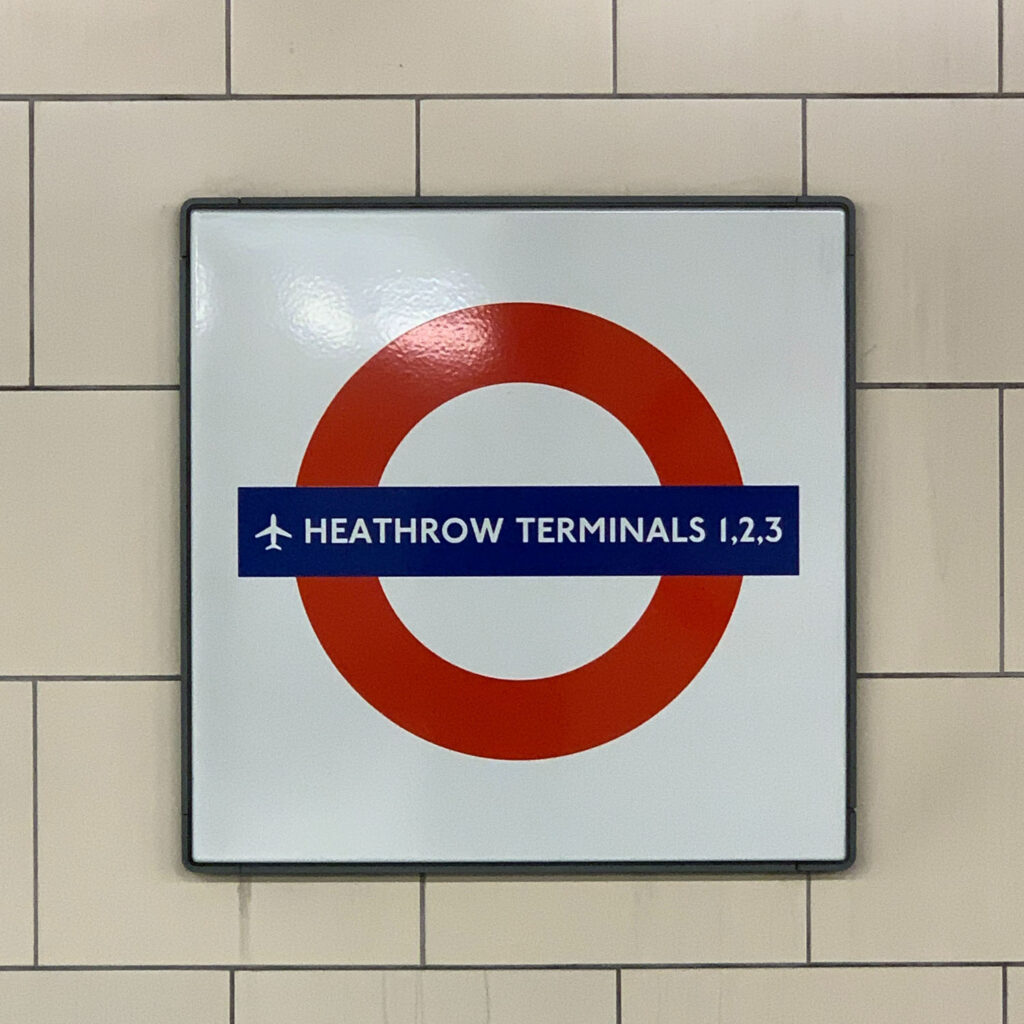
Is the Heathrow Express Worth it?
One of the things you’ll hear repeatedly is the advice to book the Heathrow Express from the airport into the city. And honestly, the Heathrow Express is a big rip-off unless you can book an advanced ticket more than 90 days in advance. Yes, you heard me right; now let me explain.
The Heathrow Express is a non-stop train service between Heathrow Airport and Paddington Station in central London. The journey takes just 15 minutes, and trains run every 15 minutes during peak hours. If you buy a Fixed Date Saver Ticket 90 days in advance, the one-way fare costs only £5.50 ! Which is cheaper than the Tube. If you book two months in advance, your ticket will cost £16.50. And anything less than that will cost a whopping £25 for one person, one way . In fact, the Heathrow Express is considered the most expensive per-minute train journey in the world. If you pay the regular price.
Add onto this the considerations of travelling with more than one person. If you’re travelling with four people, you’ll find that even a taxi or Uber into the city might be cheaper when you add it all up. Depending on traffic, of course. So if you can book your tickets in advance, sure go for the Heathrow Express option. But if you can’t commit to advanced bookings, consider some alternatives.
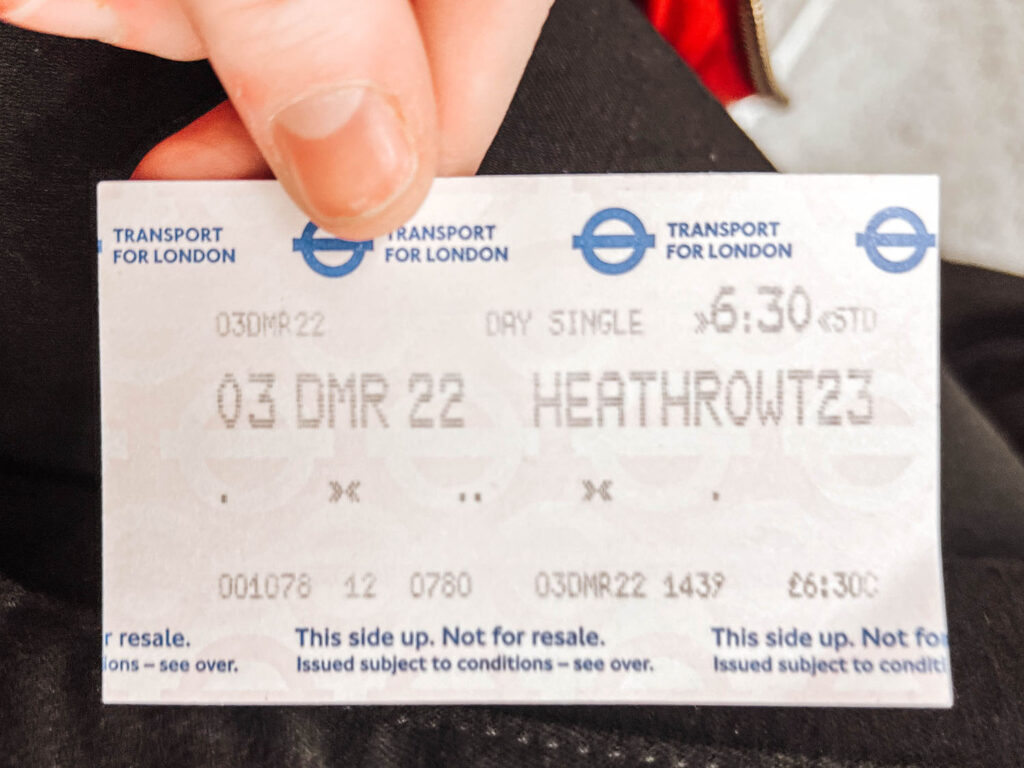
Consider Taking the London Underground
Even if you do take the Heathrow Express, most likely, your journey won’t end at Paddington Station , where the Heathrow Express train ends. This is only one part of your transit to your final destination. And you’ll probably need to hop onto the London Underground one way or another. The London Underground , also known as the Tube , is the fastest and most efficient way to get from Heathrow to anywhere in London. Not just Paddington Station.
Take the New Elizabeth Line
As of 2023, the Underground finished construction on the new Elizabet h Line that (just like the Heathrow Express) runs from Heathrow to Paddington Station . The journey on the Tube only takes approximately 35 minutes. And will cost you just £12.80 with an Oyster Card or with Contactless payment. (I’ll go into all the details about Oyster Cards and Contactless payment later in this post.) The Elizabeth line will also continue on into Central and East London. This way, you might even be able to get directly to your hotel.
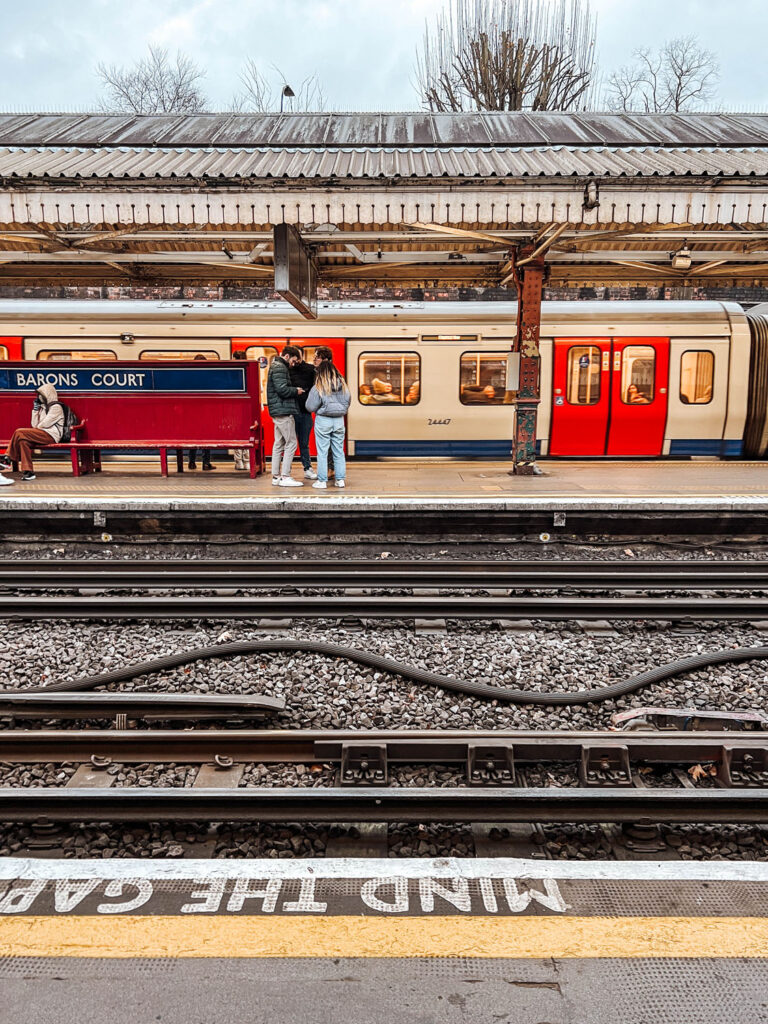
The Picadilly Line
It’s always worth checking the official London Underground Website’s Journey Planner to see if you can take the Picadilly Line from the airport to your hotel. I stayed near Victoria Station, and I found that taking the Picadilly Line to Earl’s Court and switching to the District Line got me to my door in under 40 minutes. And for just £5.60 for Oyster Card holders or with contactless payment. It otherwise costs £6.30 if you pay in cash. It’s always worth checking the journey planner, but make sure you edit the preferences to include only the Underground only. See below.
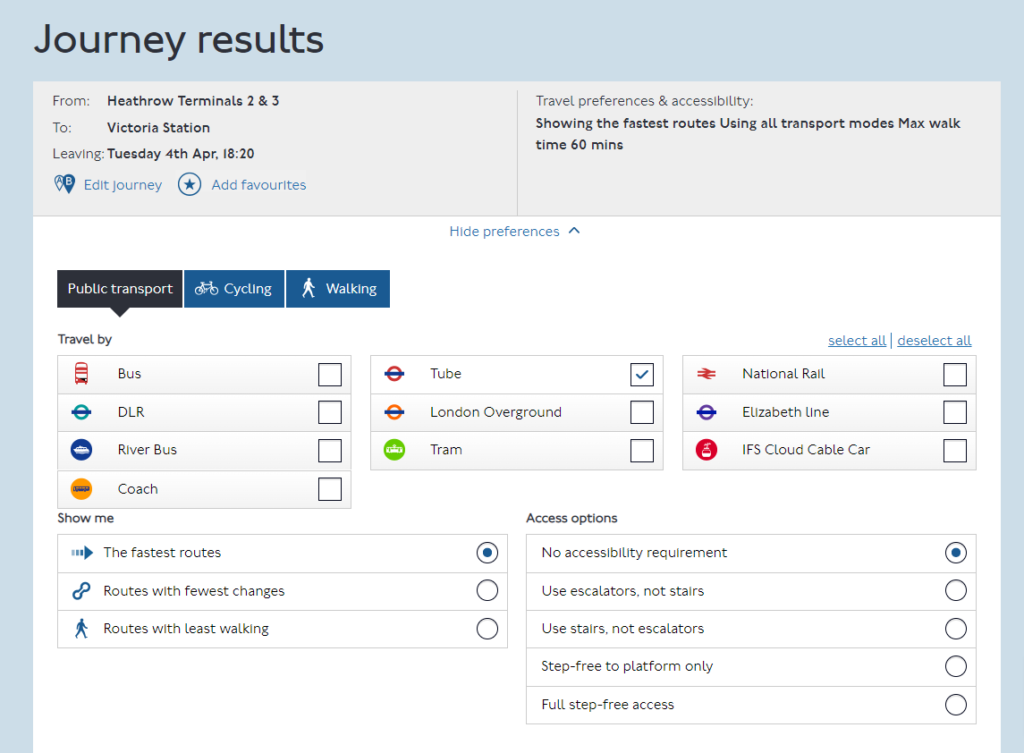
Travelling from Gatwick Airport
If, on the other hand, you are arriving via Gatwick airport , we run into the same issue here with their “express” airport train service. The Gatwick Express one-way ticket costs £20 and takes 30 minutes to arrive at Victoria Station . But you can also take the Southern Railway from Gatwick Airport to the very same station. This ticket costs as little as £9.50 with an Oyster Card or Contactless payment. And takes a shocking 33 minutes, only 3 minutes more than the express train!
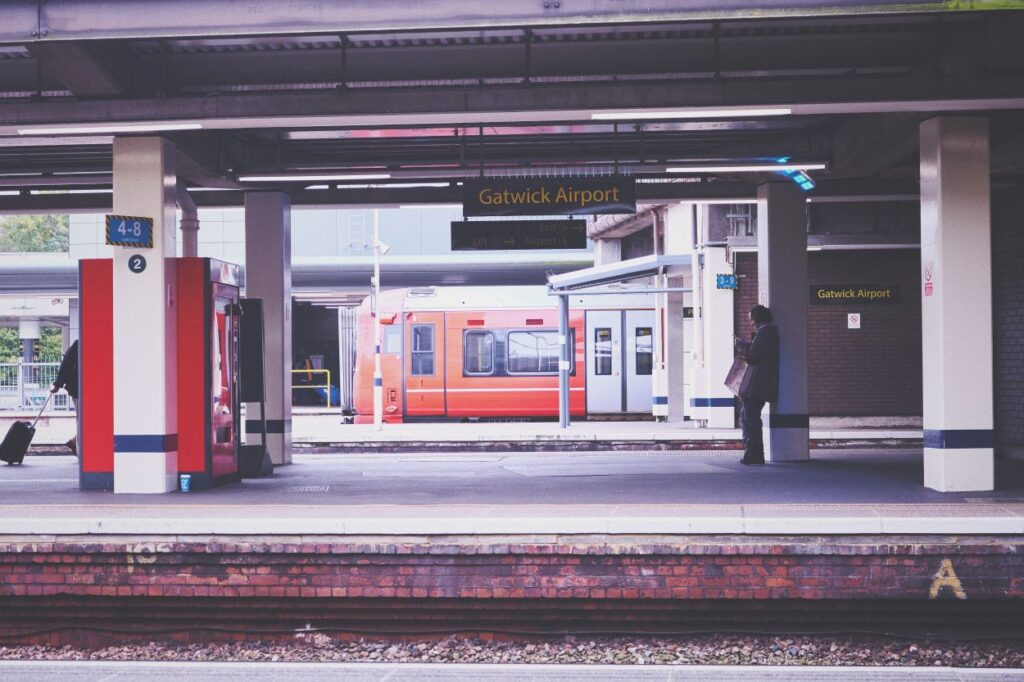
Navigating London’s public transportation system may seem daunting at first, but with a little bit of preparation and some basic knowledge, you can travel around the city like a pro. Whether you’re using the Tube, bus, or other modes of transportation, there are plenty of tips and tricks to help you get where you need to go quickly and easily. From planning your journey in advance and getting an Oyster card to minding the gap and being courteous to other passengers, these simple strategies can help you make the most of your time in London and avoid common pitfalls. So next time you’re exploring this vibrant and exciting city, don’t be afraid to embrace public transportation and discover everything that London has to offer.
Happy Travels, Adventurers
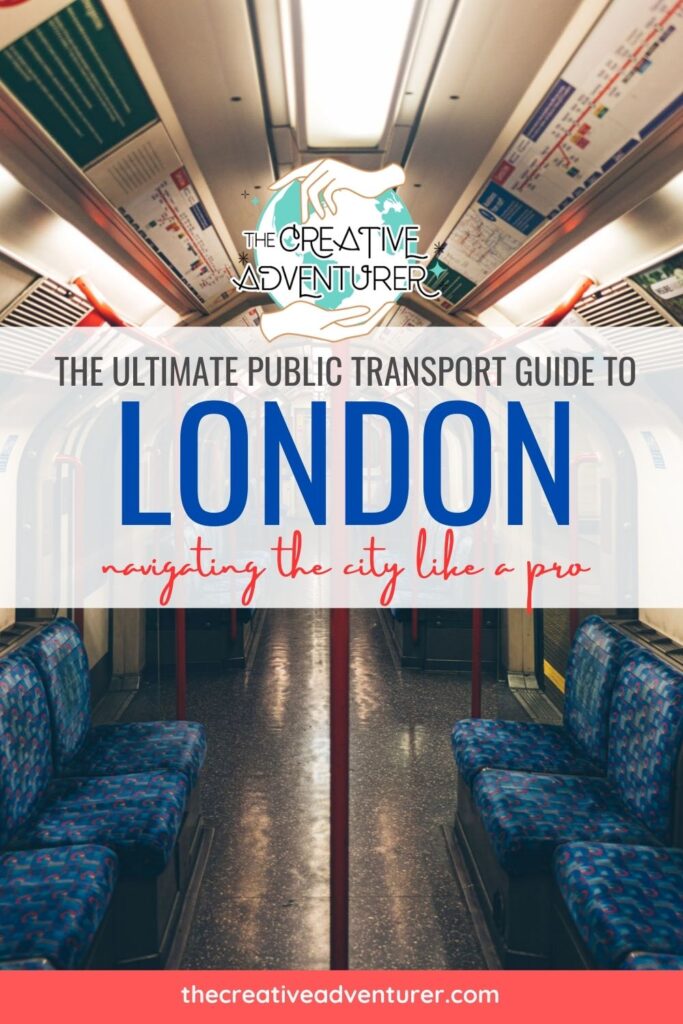
« When is the Best Time to Travel to London?
Ultimate self-guided highlights tour of london’s national gallery », you may also like.
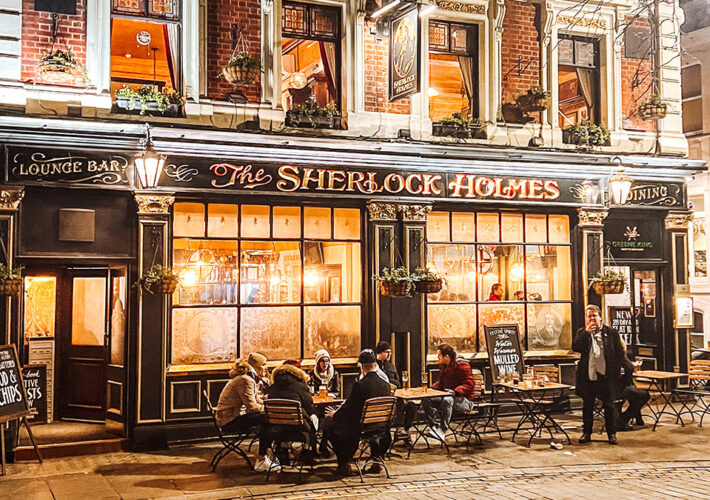
Where to Find Amazing Festive Pubs in London this Christmas Season [2022]

The Ultimate Guide to London’s Best Afternoon Tea Spots, Perfect for Every Budget!
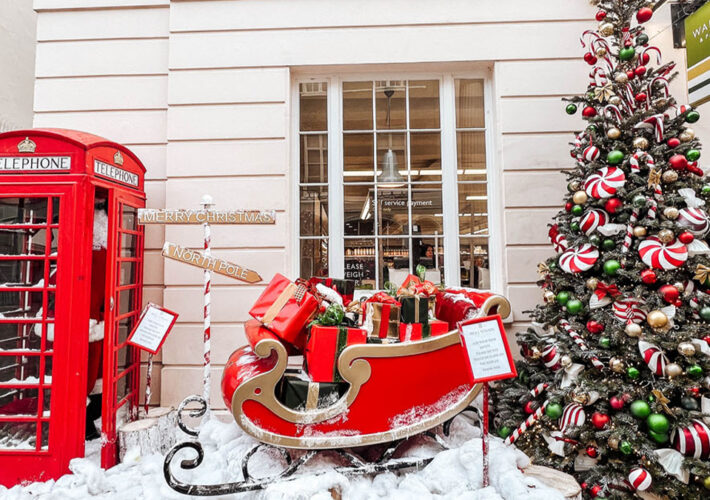
What’s Open on Christmas Day in London? Your Free Festive Guide
Leave a comment cancel reply.
Your email address will not be published. Required fields are marked *
Copyright @ 2023 The Creative Adventurer | All Rights Reserved | Privacy Policy

Getting Around London (Guide to Public Transport in London)
By: Author Tracy Collins
Posted on Last updated: April 20, 2023
Are you planning a visit to London and wondering how to get around? The good news is that the public transport system is excellent with many options available to visitors.
The downside however is that all those options can be a bit mind-boggling! First-time visitors to London and returning travellers alike can find the transport systems a real challenge. With multiple forms of transport on offer and multiple ways of getting around London, it can make travel planning seem very daunting.
This guide is aimed at simplifying the many options available for getting around London and also provide some helpful ‘Top Tips’ along the way. It is based on our experiences of visiting London many times over the years (as well as Tracy’s years of living and working in the city)
Note – For safety and hygiene measures follow government advice for safer travel .
Good to know – The British government body for overseeing all transport links and transport systems in London is: Transport for London (TfL) which includes the London Underground and overground rail networks, buses, tram links, Docklands light railways and the River Services. It provides up-to-date journey information on services/ delays and ticketing options.
The Oyster Card – All you need to know
London underground, the elizabeth line, london overground trains, docklands light railway (dlr), london buses, thames clippers (currently branded as uber boats), ifs cloud cable car (formerly emirates cable car), santander cycles, step-free to train, step-free to platform, which is the best way to get around london, london travel guide & itinerary planner (+ 4 bonus ebooks).
What is an Oyster Card?
- In easy terms, an Oyster card is a smart card that provides a cash-free alternative to pay for transport around London.
- It can be used on all transport for London (TfL) services.
- It is the cheapest option for travelling around London. Around 50% cheaper in price than buying a single travel ticket.
- Daily prices are capped and when you reach the limit you pay no more (this, however, does not apply to Uber Boats (Thames Clippers) which have no capping policy).
- Cards never expire – the credit stays active for 24 months provided it is used at least once in that time.
- Unused credit can be refunded by returning the card to a TfL visitor centre or using an at-station machine or online.
- Anyone can buy an Oyster card irrelevant of where they live though there are basically 2 types – a Visitor Oyster Card and a Standard Oyster Card .
- For overseas visitors, you have the choice of buying your Visitor Oyster Card before you leave home (add P&P) and have it posted to you or you can buy a Standard Oyster Card or Visitor Oyster Card when you arrive in London.
- The standard Oyster Card or Visitor Oyster Card can be purchased using cash or credit card at any TfL visitor centres (check opening times), train stations (including major national Rail stations) and any Oyster ticket shops. (Including Heathrow airport – see image below)
- Note that there are no longer any manned Tube or Docklands Light Railway (DLR) ticket offices and ticket machines have to be used. These are well-signposted.
- ‘Top Up’ – Credit can be added at any of the above centres (check opening times) or by downloading the TfL.Go app .
- Oyster Card options exist for 11 – 15-year-olds as a Zip Oyster photocard. Purchased by a parent or guardian. Apply online with a photo. Collect from a TfL Visitor Centre. Alternatively, it is possible to have the child discount activated on a Visitor Oyster Card for 2 weeks but you will need to take the child with you to a Visitor Centre to have this activated.
- Children under 11 travel free when travelling with an adult (up to a maximum of 4 children per fare-paying adult)
- Other Oyster Card options are available including Students, Armed Forces etc
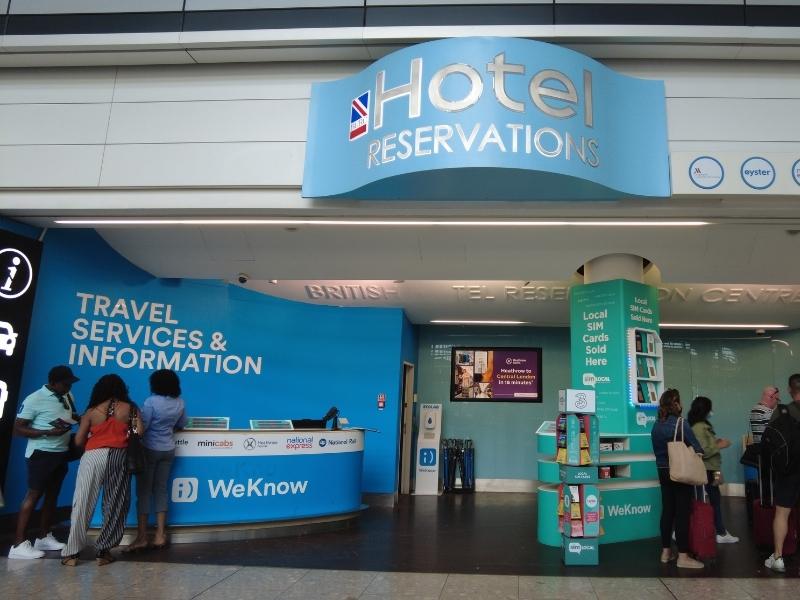
Visitor Oyster Card, standard Oyster Card or contactless?
- As with the Standard Oyster Card, the Visitor Oyster Card is accepted throughout London on nearly all public transport.
- Top up the pay-as-you-go-credit as you need at a TfL visitor centre or via the app. Also, auto top-up options are available.
- There is a £7 activation fee (+ postage for a Visitor Oyster Card) Oyster cards purchased after 4th September 2022 the fee is non-refundable.
- It does not expire so it can be saved until your next visit to London or given to family/friends.
- Using an oyster card or contactless are the cheapest options for travelling around London (around 50% cheaper in price than buying a single travel ticket)
- As with the regular Oyster Card, daily prices are capped and when you reach the limit you pay no more.
- Children under 11 years of age travel free.
- The card can be used also for cost savings using the Heathrow and Gatwick Express Airport trains also trains to London City Airport. Not at Stansted or Luton Airports though.
- The Visitor Oyster card also gives discounts on the IFS Cloud cable car and discounts on single journeys on the Uber Boat (by Thames Clippers). Discounts apply to ticket prices at the terminals or online.
- Look out for special offers and promotions for discounts on attractions.
Read – Oyster Card or Contactless? Which is the best option for you
Where can I purchase a Visitor Oyster Card?
- Visitor Oyster Cards can be purchased on arrival in London at London airports and principal London train stations.
- They are also available to purchase online in advance before arriving in London from the Visit Britain Shop .
- Arriving from mainland Europe via the Eurostar? Oyster Cards or travel cards can be purchased on the Eurostar trains arriving from mainland Europe to London St Pancras International train station.
- ‘Top Up’ Credit can be added at any of the above centres or download the TfL Go app .
- If you are visiting for 1 -2 days £20 will roughly cover travel around Central London and a return trip to London Heathrow Airport £25 if you are heading to Gatwick on the Gatwick Express, 3 – 4 days budget £30, 1 week around £50 (Guidance only as prices may vary depending on which travel zone you will be travelling in)
- Tip – If you purchase an Oyster Card hold onto it for future trips.
How do I use the Oyster Card?
- Standard and Visitor Oyster cards are really simple to use.
- Tube (including the Elizabeth Line except for stations west of West Drayton)
- London Overground trains.
- National Rail trains within the London fare zone areas.
- Buses and Trams – ONLY at the start of the journey.
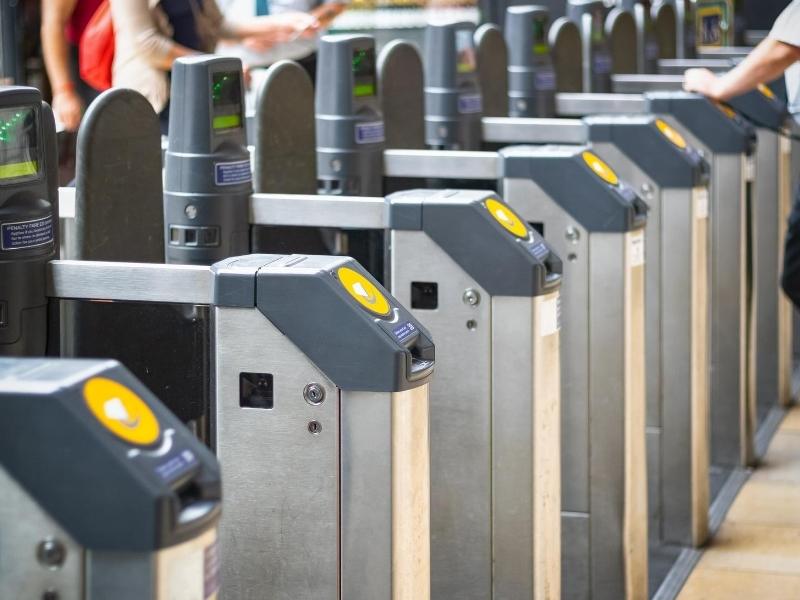
Getting Around London – London Public Transport Options
History of the Tube
- The world’s oldest underground rail system with construction started in the 19 th Century.
- Designed by Marc Brunel (father of Isambard Kingdom Brunel) and is stated as being the first tunnel built under a navigable river.
- The first underground (tube) train ran on the 9 th of January 1863. The line used is still in action and is part of the Metropolitan line.
The Tube today
- Commonly called the ‘tube’ by the majority of regular users.
- Recognised as operating 270 tube stations.
- 11 train lines.
- Carries more than 1 billion people every year.
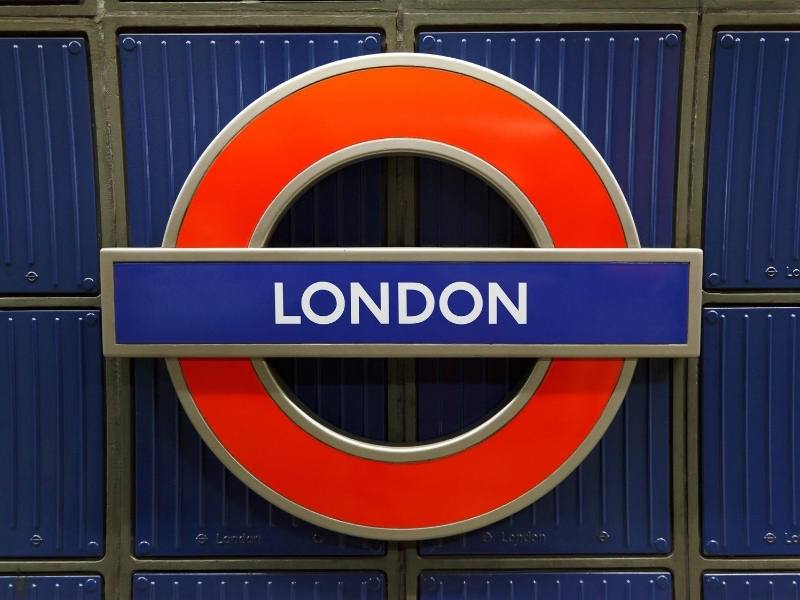
London Underground Map
- The tube map is very much a London Icon and is instantly recognisable.
- Designed by Harry Beck in 1931.
- Each station is roughly half a mile apart.
- Specific line colours in use since 1907.
- All lines are given equal representation.
- The London Underground symbol, or ‘roundel’, in use since around 1925.
- Instantly recognisable London icon symbol, that can be seen throughout London to identify tube station and access from a mainline train.
- Inspiration for the TfL icon
- Central line – Red
- Piccadilly line – Dark Blue
- Circle line – Yellow
- Bakerloo Line – Brown.
- District – Green.
- Hammersmith and City – Pink.
- Jubilee- Grey/silver.
- Metropolitan – Magenta
- Northern – Black
- Victoria- Light Blue.
- Waterloo and City – Turquoise.
- DLR – Parallel Turquoise lines horizontally.
- London Overground – Parallel red lines horizontally.
- IFS Cloud cable car – Triple Parallel red lines horizontally.
- Elizabeth Line – Bold double purple lines *
- London Trams – Parallel Green lines horizontally.
- (National Rail – Red railway logo)
* Elizabeth Line is a “railway” not strictly a Tube line but it does run in tunnels in central London.
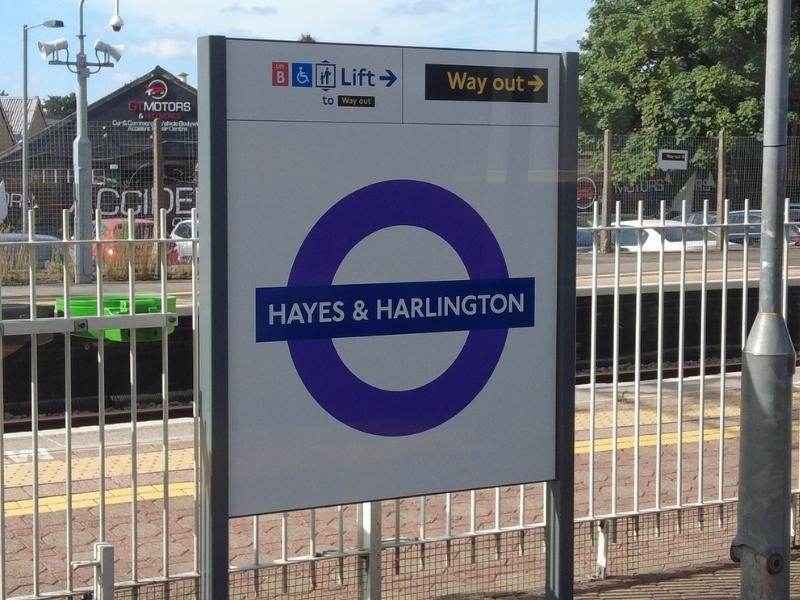
- Zones 1 to 6 – works on concentric circles from an the area of Central London.Zone 2 – an area that wraps around Zone 1.
- Zone 3 – wraps around Zone 2.
- Zone 4 – etc.
- Zones 7 to 9 covers North West London areas outside of the greater London areas not included in zones 4 to 6.
- Maps are easy to download, a very good example is from the TfLGo app which shows the tube underground and overground rail map alternatively many London guidebooks come with a free underground map.
- Check CityMapper App which is also useful for getting around London.
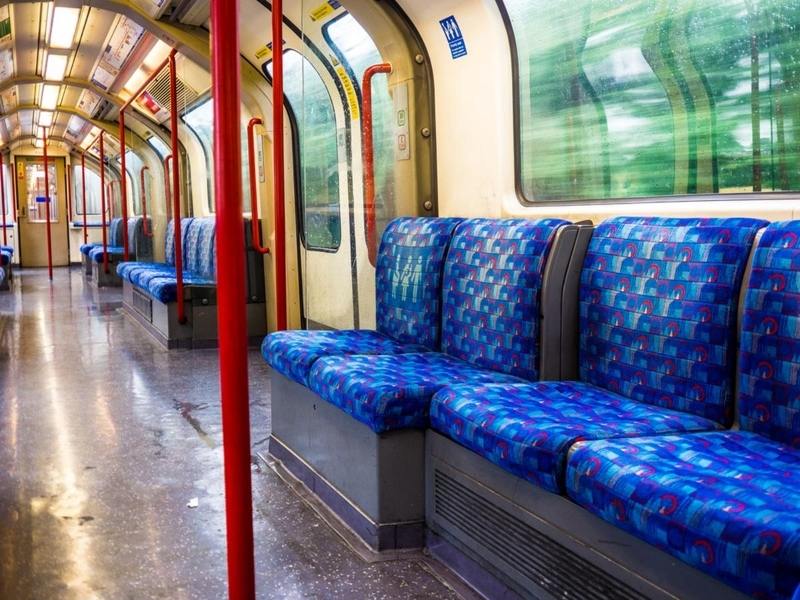
Good to know !
The Visitor Oyster card/ Oyster Card can be used in any zone and the cheapest fare is automatically calculated for you! How good is that!!
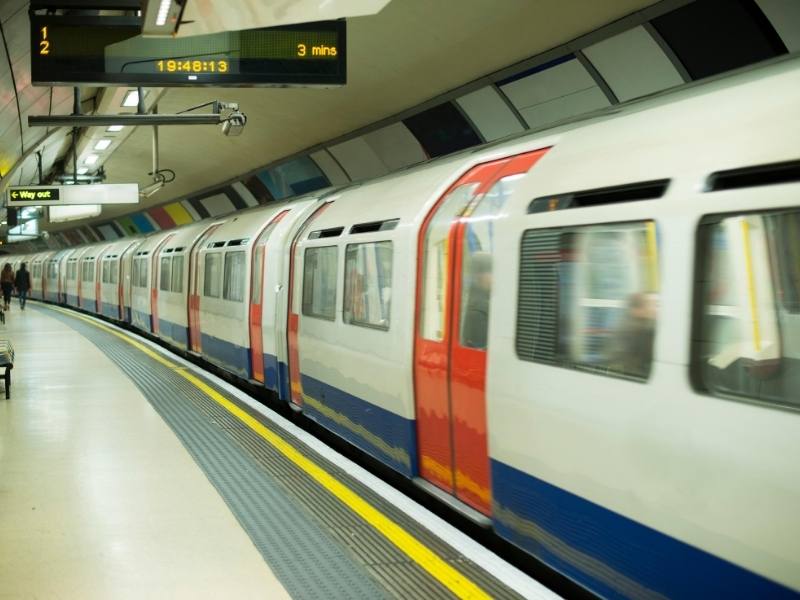
- Opened 24 May 2022
- Strictly speaking not a Tube line though it operates through tunnels under central London
- It was known as TfL rail now rebranded as the Elizabeth Line.
- Runs through 41 stations, over 73 miles (118kms) from Reading to Heathrow in the west and through central London to Abbey Wood and Shenfield in the east.
- From 6 November 2022 trains to run every 3/4 minutes 7 days a week (approx 22 trains per hour)
- From 6 November 2022 travel will be possible direct from Heathrow and Reading to Abbey Wood.
- From 6 November 2022 travel will be possible direct between Paddington and Shenfield without changing trains at Liverpool Street Station. Passengers for Heathrow can change at Whitechapel on the same platform.
- The final timetable will be released in May 2023 with approx 24 trains per hour. This provides direct services from Shenfield and Heathrow.
- £7.20 premium charge on journeys to Heathrow.
- The fares are identical to London Underground.
- Peak single fares to Heathrow cost £12.70 (cheaper during off-peak)
- Tube (Piccadilly Line) – £5.50 Peak (cheaper off-peak)
- Heathrow Express – £25
- Peak times are 06.30 – 09.30 and 16.00 – 19.00
- Oyster cards can be used from Zones 1 – 6 on the Elizabeth Line.
- The only part of the Elizabeth Line where an Oyster/Visitor Oyster card can’t be used is for stations beyond West Drayton (see map below)
- National Railcards can be used.
- Contactless accepted.
- Railcards attached to Oyster Cards received 1/3 off.
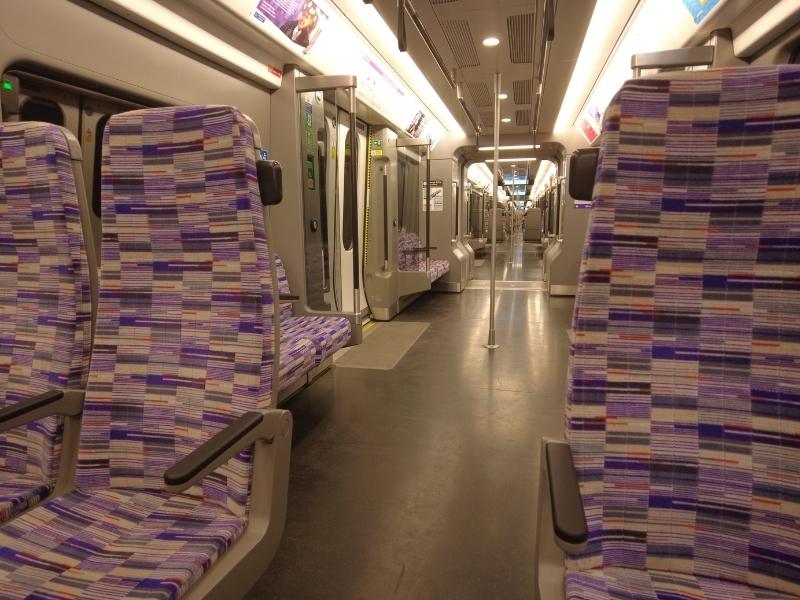
These are suburban trains that run, above ground level on a separate network to the tube network.
- 6 specific rail routes are operated by Arriva Rail with a concession agreement with Transport for London.
- Highbury & Islington to West Croydon/Clapham Junction/Crystal Palace.
- Richmond/Clapham junction to Stratford.
- Gospel Oak to Barking.
- Watford Junction to Euston.
- Liverpool Street to Enfield Town/ Cheshunt and Chingford.
- Romford to Upminster.
- Also runs north into the county of Hertfordshire.
- Forms part of the UK’s National Railway network but is run by Arriva Rail for TfL.
- The logo is recognisable as a similar logo to the tube, but with the word ‘overground’ or the station name as a central banner that identifies station or platform entrances. Note the orange ring. (See photo below)
- Combines well with tube routes.
- Download the TfL map which shows the combined map of all stations tube and overground.
READ MORE – Complete guide to using the British rail network
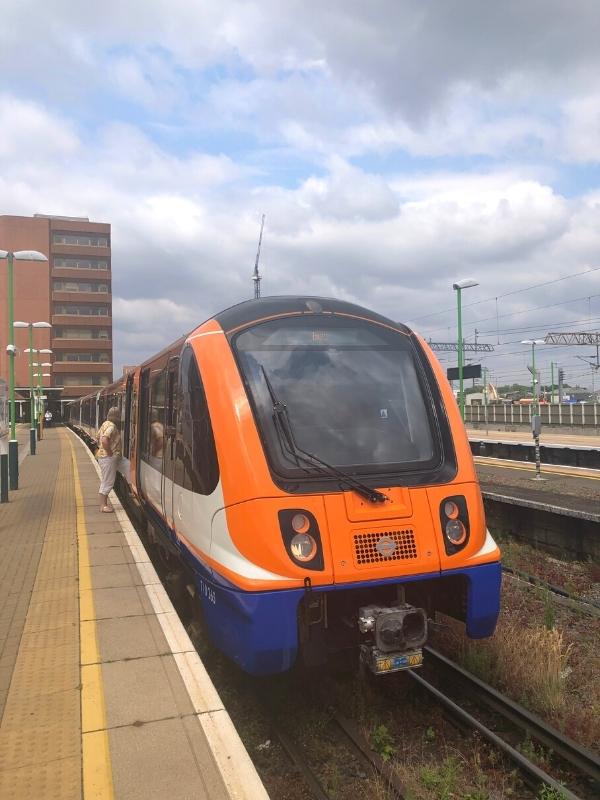
- This is a Light Rail Network that is fully automatic – no driver.
- Tower Gateway _ (Tower Hill) stations.
- Heron Quays.
- Canning Town.
- Canary Wharf.
- South Station to – Docklands, Greenwich and Lewisham.
- Opened in 1987
- Operated by TfL.
- 45 stations over 7 train lines.
- Connects with the London Cable Car and also London City airport.
- Operates 24/7
- The logo is recognisable as a similar logo to the tube, but with the abbreviation DLR as a central blue banner inside a hollow green circle.
- Use your Oyster cards on DLR.
- Can pay also with Contactless cards.
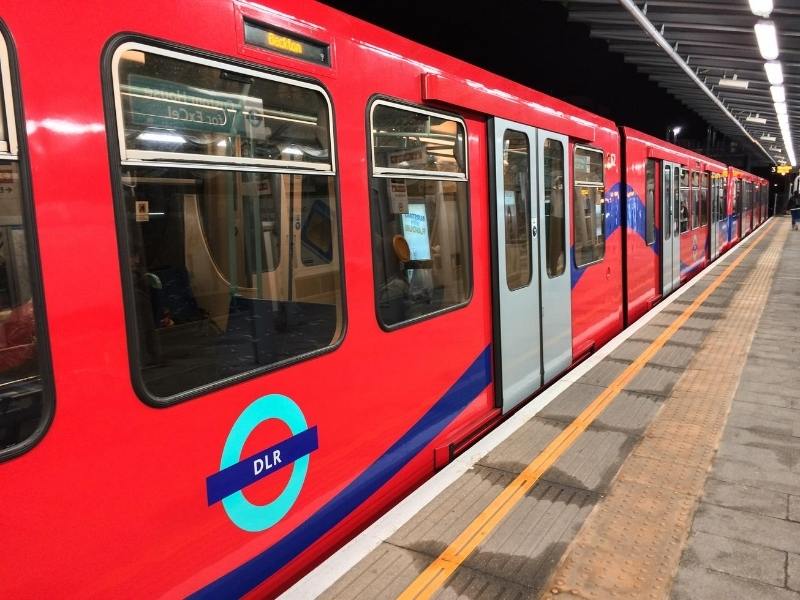
- All buses are bright “London Red’ and famously distinctive.
- 8795 buses including 3854 hybrid buses, 785 battery electric buses and 22 hydrogen fuel cell buses on around 700 routes and over 19,000 bus stops!
- Does not operate in zones (like the tube).
- Tap on by touching your card ( Oyster or Contactless ) onto the yellow card reader at the start of each journey.
- Oyster card payment is £1.65 per journey. ( Prices correct as of October 2022)
- Bus only travel will cost a maximum fare of £4.95 per day. ( Prices correct as of October 2022)
- Hopper Fares – Unlimited use for 60 mins on trams or buses from the minute you tap on for your first journey.
- Available for purchase – Daily bus & tram pass, £4.95, 7 days £23.30, monthly £89.50. ( Prices correct as of October 2022)
- Only tap on when entering the bus, No tap out is needed.
- Cashless buses, no ticket purchase is possible inside the bus.
- Oyster card
- Visitor Oyster card.
- Contactless payment card.
- Bus pass (London or UK resident over 60’s card)
- Enter via the front doors of the bus, exit in the middle or at the back doors of the bus.
- Children under 11 years of age travel free on London buses.
- Discounts are available for those under 18’s and also for students.
- Most services are 24/7. Can be additional services laid on if the Tube is closed.
- London Buses do not use a travel Zone area of work and are based on single journeys.
Read – Complete guide to the best bus tours of London
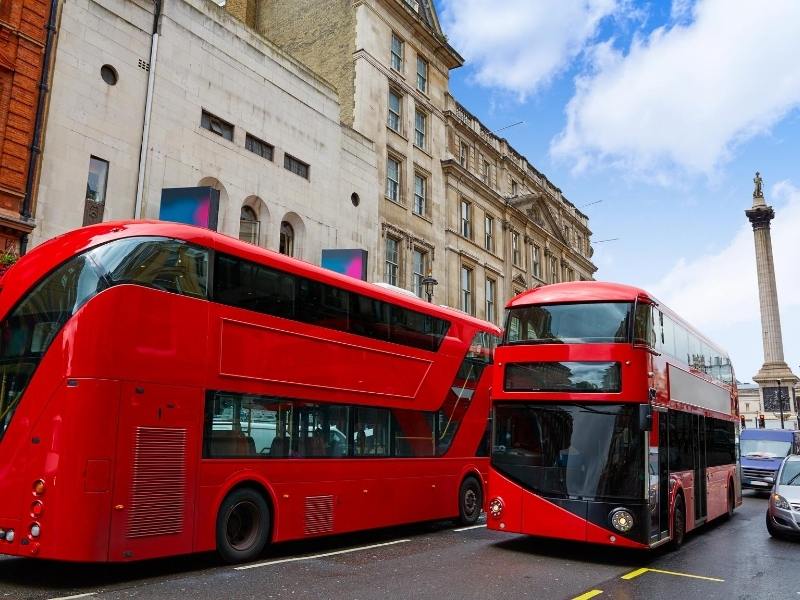
Good to know
- Use a mixture of the tube and London buses to get a good view of London.
- Passes – Westminster Abbey , Downing Street, Trafalgar Square, Nelsons Column, Camden town.
- Passes – Kings Road (Chelsea), Westminster Cathedral (Abbey), Big Ben, Houses of Parliament, Strand, Fleet Street, St Pauls Cathedral, Ends near Spitalfields market.
- Passes – Trafalgar Square, Piccadilly, Knightsbridge (Harrods shop), Royal Albert Hall, Kensington Gardens, Holland Park.

- Introduced in 2000
- Runs in South London, and is operated by Tramlink.
- Wimbledon, Croydon, Beckenham, New Addington.
- Has easy access with no steps.
- 39 stations.
- Frequent service, every 10 minutes.
- Ticketing and card use are the same as using the London buses.
- Logo is similar to the Tube with a Tramlink green circle.
- Fast River Thames services run every 20 minutes from all major London Piers.
- Started in 1999.
- Fleet of 20 high-speed boats running 7 days a week from early morning until late evening.
- 24 Piers along the River Thames, from Barking Riverside Pier in the East and the pier at Putney in the West.
- Runs between 3 zones requiring a valid ticket for all zones passed through:
- 20 high-speed boats.
- West Zone from Putney. (RB 6)
- Central Zone, between Battersea Power Station and Canary Wharf. (RB 1, RB2 and RB 6)
- East Zone, Canary Wharf to Woolwich (Royal Arsenal). (RB 1, RB2, RB 4)
- https://www.thamesclippers.com/plan-your-journey/route-map
- Oyster or Contactless Card. Tap in and out. TfL (Transport for London) daily price cap is not applicable.
- TfL Travelcard holders are able to receive 1/3 off standard fares (see Terms & Conditions).
- Oyster or contactless card holders get up to 24% of a standard fare by purchasing online tickets using Apps (from fares purchased at the river piers).
- Thames Clipper Ticket App.
- Tickets office or ticket machines at the pier heads.
- Through Uber App.
- Ticket office or Ticket machines on the day at the pier.
- Putney to Blackfriars = 56 minutes.
- Battersea Power Station to London Bridge = 30 mins.
- Tower to Greenwich = 21 mins.
- North Greenwich to Blackfriars = 42 mins.
- Royal Wharf to North Greenwich = 3 mins.
- Woolwich to Canary Wharf = 32 mins.
- River Roamer – Unlimited all-day tickets.
- Single and return tickets.
- Park and Glide – Park your car at the O2 arena and use the river bus.
- Season tickets.
- Zone specific 7 or 90 day validity.
- (child is 5 -15 years of age, under 4 years travels free.
- Tfl Travel card holders can achieve ⅓ off standard fares.
- Separate weekday and weekend/bank holiday Timetables.
- See Map and Timetable for route options.
- Ticket Information
- https://www.thamesclippers.com/plan-your-journey/ticket-information
- Partnership with Clipper service.
- Advance purchase tickets to guarantee a seat.
- Use Qr technology to board. Payment via Uber account.
- Uber Boat – Route Map – https://www.thamesclippers.com/plan-your-journey/route-map
Read: Guide to the best boat trips and cruises in London
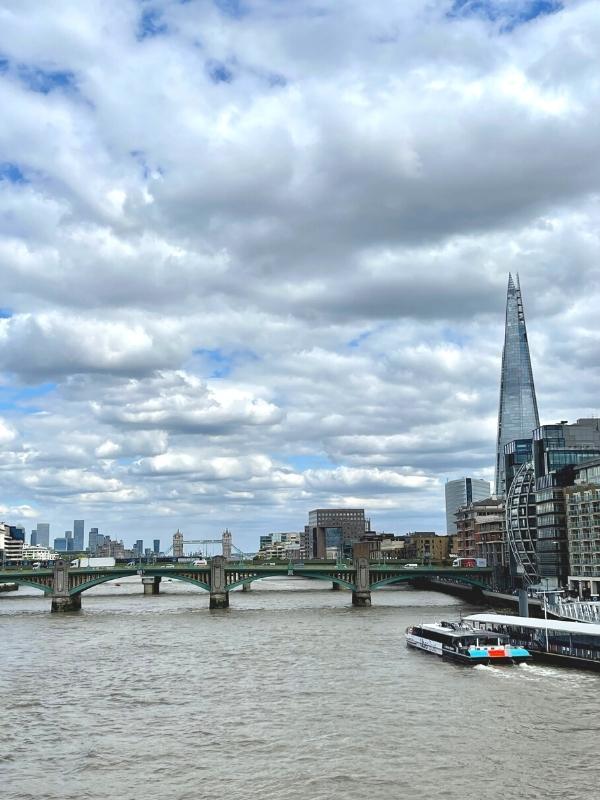
- Popular London attraction with views of the London Skyline and the River Thames.
- Catch from North Greenwich or board from the Royal Victoria (side of the river)
- Adult ticket single trip is £5 (Adult) and £2.50 (Child)
- Visitor Oyster card receives discounts on the cable car on tickets bought at the terminals.
- Range of packages including a champagne-filled flight and sunset trips.
- Flights every 30 seconds.
- Takes around 10 minutes. Peak times, journey time around 5 mins.
- After 7 pm flights take around 12 mins.
- Return flights are an option.
- Runs Monday to Friday from 7 am to 10 pm, Saturday from 8 am to 10 pm, and Sunday from 9 am to 10 pm.
- Weather permitting.
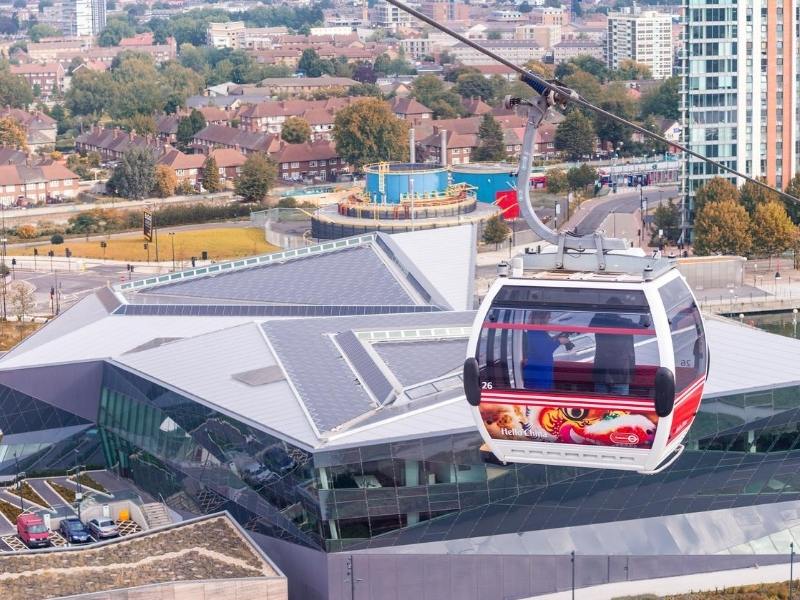
Nicknamed ‘Boris bikes’ after Boris Johnson who introduced them whilst mayor of London you will see Santander Cycles all over the capital.
Hiring a cycle for unlimited journeys of up to 30 minutes within a 24-hour period costs only £1.65. If your journey takes longer than 30 minutes there are additional charges.
- 781 docking stations
- 1400 bikes including 500 e-bikes
- Covers 38.6 square miles of London
Download the app or go to any docking station with your bank card and follow the instructions! It really is that easy!
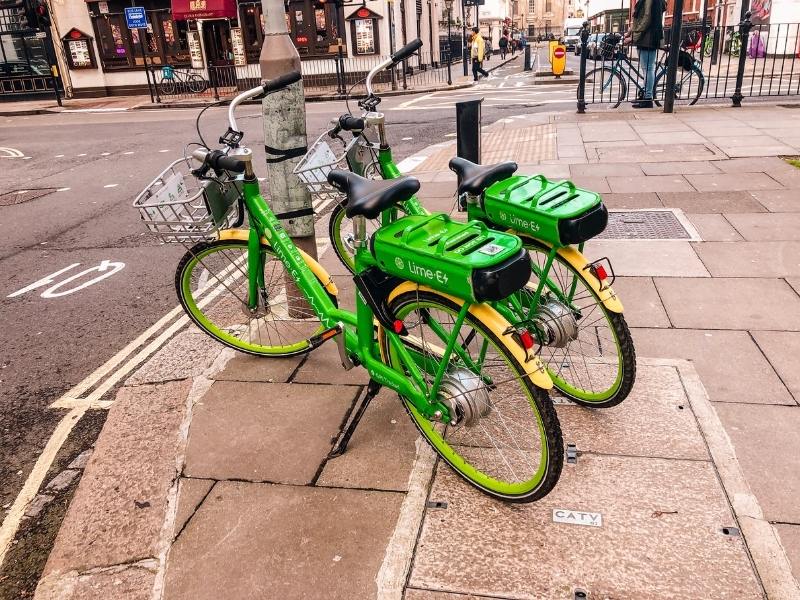
Accessibility
Accessibility on London transport. Note that the London Underground is not the most accessible with lots of escalators and stairs to negotiate. You can find out more to help plan your journey on the official accessibility section of the TfL website or the TfLGo app.
Also, use the London Underground maps or apps which details station platform levels, gaps, steps, manual ramps, lifts (status) and level access points needed to safely board a train with step-free to train (Blue wheelchair sign) and step-free to platform (white chair sign) journey planning tools. Information is also included for information on accessible toilets.
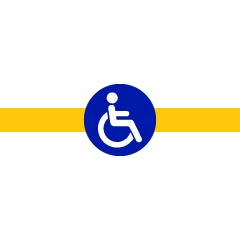
https://tfl.gov.uk/maps_/using-tfl-go
We recommend trying a mix of these options. The Tube is quick and easy but you won’t see much of London from underground! Buses are great fun and there are some great routes to take to see the main sites.
- If you are heading to Greenwich take the Uber Boat at least one way! The views from the river are worth it (another option is a Thames River cruise )
- Expect to do lots of walking and if cycling is something you enjoy there is the Santander bicycle option.
- Take the overground trains from London principal stations to the rest of the UK – check out these 10 great rail routes as well as these day trips by train from London.
- Heading to Scotland by train? Read our review of the Caledonian Sleeper Service
Accessibility on London transport. Note that the London Underground is not the most accessible with lots of escalators and stairs to negotiate. You can find out more to help plan your journey on the official accessibility section of the TfL website or TfLGo app. Also, use the London Underground maps or apps which illustrate step-free platform to street access.
More to read
- London Travel Guide – links to everything you need to know to plan your trip
- Looking for accommodation? Read our guide to where to stay in London
- First time visitors? Read our top tips for visiting London for the first time
- How to get around London? Read our guide to using public transport in London and our guide to London’s main train stations.
- What to see and do – Complete London bucket list with guide to all the top sights and attractions & Guide to the Changing of the Guard at Buckingham Palace
- How to purchase tickets for London attractions – Guide to purchasing tickets for the most popular London attractions & Best London bus tours reviewed
- Boat trips and cruises – Comparison guide to the best boat trips and cruises on the Thames
- Visiting on a budget? Read out budget guide to London with tips to save money when visiting
- Free things to do in London – Discover 32 free things to see and do in London
- Best day trips? Read our guide to the best day trips by train and ou r guide to the best tours from London
- Love castles? Our guide to the most popular castles to visit from London
- Beatles fan? Read our guide to the Beatles in London


The Ultimate Guide to Navigating London Public Transport

Have you arrived in London and want to explore the city on your own using public transport? No problem! With public transport in London, you can easily get from A to B and discover the city’s many sights and districts. In this guide, I’ll list all the different public transport options in London to help you plan and enjoy your trip.
Related Articles:
- How does the Oyster Card work?
- Best hotels in London
table of content
Public transport in London
London is divided into nine fare zones, with zones 1 and 2 forming the city center. The zones increase as you move further away; for example, Heathrow Airport is in Zone 6.
The public transport network is operated by TfL (Transport for London), managing everything from roads and rail to ticketing and maintenance.
For paying for public transport, you have several options: buy a one-way ticket, use a contactless credit/debit card, an Oyster Card, a Visitor Oyster Card, or a Travelcard. Whether the Oyster Card or the Travelcard is better depends on your specific needs and travel plans.

How to Pay for Public Transport in London?
I always use my contactless credit card for the tube and buses in London. This can vary in cost-effectiveness depending on your bank, but I find it most convenient.
I also tried the Visitor Oyster Card , a convenient and inexpensive alternative if your bank charges high fees for card payments.
Now let’s take a closer look at the various options.
1. The London Underground: The “Tube”
The iconic London Underground, affectionately known as the ‘Tube’, is the oldest subway network in the world, having first opened in 1863. Today, the London Underground transports over one billion passengers a year through London’s public transport system, covering 270 stations and 400 kilometers of track.
A little fun fact on the side: although this is actually a subway network, less than half of the tracks are underground. As you explore London, you’ll soon realize that there’s a tube station within walking distance and a train arrives within 10 minutes or less – the stations really are everywhere!

Most metro lines run from 5 am to midnight, and since August 2016, some lines also offer a 24-hour service. You can check the times and plan your journey online , and Google Maps is always helpful for navigation. Subway stations are easily recognizable by the characteristic London Underground logo, a red circle with the text “Underground” in a blue box.
The London Underground is part of the transport system of TfL, the national transport company for London. It operates in fare zones 1 to 6, which cover London in expanding concentric circles, with zone 1 in the center and zone 6 on the outer edge. In general, the more zones you pass through on your journey, the more expensive it will be.
If you want to get around the city quickly, the London Underground is the best option. The subway network covers the entire city and connects all the important sights and districts. You can conveniently use an Oyster Card or simply pay with your contactless credit card.
THE OYSTER CARD EXPLAINED IN DETAIL
2. London Overground
The London Overground is similar to the London Underground, except that it runs above ground. Don’t ask me why this distinction is so strict, especially since a large part of the Underground also runs above ground. Those are the rules! However, the Overground is much newer than the Underground, having been founded in 2007 to fill some of the gaps in the Underground’s network.
The Overground uses the same fare system as the Underground and follows the same zone tariffs. Conveniently, you usually don’t have to check in and out again if you use an Oyster Card or contactless payment and switch between Overground and Underground services. Of course, there are always exceptions. The logo of the Overground is very similar to that of the Underground, except that the circle is orange and the title is, of course, different.
3. London’s Futuristic Docklands Light Railway
Let’s move on! The Docklands Light Railway, or DLR as most call it, is an automated rail system that specifically covers the Docklands area of London, located directly east and southeast of the city center. The main difference between this train system and the previously mentioned Underground and Overground systems is that the DLR is fully automatic, meaning there is no driver.
The DLR connects London City Airport to the rest of the Underground network, and you’re likely to use the DLR if you’re traveling to the east and southeast of London. For example, the DLR is the best and fastest option to get to ExCeL, which hosts many major trade fairs and events.
In terms of fares, the DLR is the same as the Overground and Underground, as it is part of the London fare zone system.
4. On the Road with the Red Double-Decker Buses
I have a little quiz for you: What do you think is the most common mode of transportation in London? Well? Many would probably guess the London Underground; and with over a billion passengers a year, that’s not a bad guess. However, the correct answer is the bus, as the number of journeys made on London buses is over two billion a year!
This is probably because there are so many bus routes in London, covering a huge area – you can get virtually anywhere in London by bus. Bus fares are also cheaper, with a fixed price of £1.75 (as of March 2024) for a single journey for Oyster users, regardless of distance.
You can also take advantage of the ‘Hopper’ fare option with Oyster and contactless cards, where every bus journey you make within the first hour of checking in is included in the price. This allows you to change buses without having to pay more – although you still have to check in when boarding the new bus to have a valid ticket.

To use the public buses in London, all you have to do is hold your Oyster or contactless card up to the large yellow card reader when you get on the bus – you don’t have to do this when you get off the bus, as the fares are fixed. Many bus routes run around the clock, so in many cases, you can still get home by public transport at night.
Buses are cheaper but usually a bit slower than the tube/train as they have to compete with traffic, which is often terrible in London. One advantage, however, is that there are usually no stairs and no long distances to walk as there are in the subway system.
In addition to the public buses, it is also possible to use hop-on hop-off buses. Although this is not an official form of public transport, it can be a great way for you to get around London as a visitor. These hop-on hop-off buses cover all of the city’s main attractions and even offer commentary on the city’s history along the way. You can easily buy hop-on hop-off bus tickets online , and some of the city passes for London also include tickets for these red double-deckers.
5. Relaxed Transportation in South London with the Trams
If you’re traveling in south London, specifically from Wimbledon to Croydon to Beckenham, you’ll probably use the streetcars, also known as London Tramlink. The tram system has four lines, making it a modest network compared to the Underground and Overground. However, the tram is still a popular means of transportation in the area!
The tram works similarly to the bus in terms of payment – there is a fixed charge per journey, and you simply need to check in with your Oyster card or contactless bank card to validate your ticket when boarding. You don’t have to check out when you get off. Click here for more information. Click here for more information .
6. Discover London from the water: Thames Clippers
My favorite way to explore London is on a boat trip on the Thames. In addition to cruises, which you can usually book for one or two hours, Thames Clippers also offers a public transport service on the Thames, operating four different routes from the west to the east of London. These routes start in the very west of the city in Putney and extend to Woolwich in the east, essentially taking you from one end of London to the other. I was surprised when I talked to people on board who told me that the boats are actually used daily by commuters to avoid the busy traffic jams on the roads and enjoy a relaxing ride along the Thames. Naturally, the peak times around 9 a.m. and 6 p.m. are somewhat busier than usual.
As with other TfL public transport services in London, the easiest way to pay is by contactless card or Oyster card, checking in and out as you board and alight. Alternatively, you can buy tickets online and print them out, or purchase them quickly at the pier. The last option is the most expensive – contactless, Oyster, and online ticket purchases are the cheapest.
Note that Thames Clippers are slightly more expensive than the tube or buses, but the point-to-point service, relatively fast speed, and of course the unbeatable views of London can justify the price in my opinion. All further information can be found on the Visit Britain website .
7. With the City Bike through London
Since 2010, London has had a new public transport option – the bicycle! With public bike stations throughout the city and a growing network of cycle paths, bicycles are becoming increasingly popular. However, London is quite large in terms of area, so I recommend using a bike for shorter distances.

Hiring a bike is easy: for £1.65 you get 24 hours of access to the system, including 30 minutes of actual riding time. Each additional 30-minute period costs £1.65 (as of March 2024). If you plan to use the bikes frequently, a membership is available for £20 per month, which allows unlimited rides of 60 minutes each. After the 60 minutes have expired, each additional hour costs £1.65.
To use the bike rental system, all you need is a credit or debit card. As the system is secured against theft, Oyster cards are not accepted. You pay your activation fee with the card and can then rent a bike at the hundreds of stations in the city. Find out more here .
Even though cycling in London may seem complicated at first glance, I have actually had good experiences. The British city may not be Amsterdam, but I was pleasantly surprised by the cycle paths!
8. The legendary black cab in London
London is undoubtedly known for its iconic modes of transportation, from the famous red double-decker bus to the Tube. Perhaps the best known of all, however, is the legendary black cab. London’s Hackney Carriages have a history dating back to 1662 and have been transporting people around the city for over 350 years. Drivers need to master the famous ‘Knowledge’ – a detailed understanding of London’s streets and landmarks – to navigate the city efficiently without relying on maps or technology.

Taking a black cab in London is an experience. Fancy going for a spin? You can easily hail a cab by giving a simple hand signal. If the cab sign is illuminated, the cab is available, and the driver will hopefully stop to give you a lift.
Like everything in London, cabs are expensive, so be prepared for some pretty steep prices. Also, note that cabs do not accept Oyster cards, so you will have to pay in cash or by credit card. Fares are calculated at the end of the journey and are based on distance and time measured by the taximeter in the vehicle.
How to get from the airport to London
Here are the main airports you can find in London:
- Heathrow Airport (LHR) : The largest and busiest airport, located to the west of London. It handles many international flights.
- Gatwick Airport (LGW) : Located to the south of London, it’s the second busiest and also serves numerous international destinations.
- Stansted Airport (STN) : Situated to the northeast of London, it primarily handles budget and European flights.
- Luton Airport (LTN) : Located to the north of London, it also serves many low-cost carriers and European destinations.
- London City Airport (LCY) : Found in the east of London, it’s the closest to the city center and mainly handles business and short-haul flights.
We have some articles focusing on how to get from most London airports to the city center:

From Stansted to London – Transfer guide for London Stansted Airport
Here you can find out everything you need to know about the best way to...

London Heathrow Airport Transfers
Once you arrive at Heathrow Airport – as modern and interesting this place may be...

Transfers from Gatwick to London
How do you get from Gatwick to London? Here’s some information about the fastest and...
With these tips, your London adventure should run smoothly. Enjoy the ride and have lots of fun exploring this fascinating metropolis!

Exploring London with the Oyster Card

Top 33 BEST London Hotels: A Guide to the Capital’s Finest Stays

I love traveling in Europe and I am passionate about writing about my travels. The cultural peculiarities of each region always fascinate me. I enjoy exploring and discovering the best-kept secrets of each town or village. I love road trips as much as city breaks; I love visiting an art gallery and also the magic of musicals or discovering new delicacies in a street market. In this blog, I write about all my travel adventures and my best tips and tricks! Auf Loving Travel schreibe ich über alle meine Reiseerlebnisse und gebe euch meine besten Tipps und Tricks!
Get exclusive content, real insider info and the best travel deals completely FREE!
Your trip start: We’ll provide you with little reminders to prepare for your trip and up-to-the-minute events when you’re traveling!
You have disabled JavaScript
JavaScript is required to use this website. Therefore, please enable JavaScript in your browser to visit this website.
You are currently viewing a placeholder content from Facebook . To access the actual content, click the button below. Please note that doing so will share data with third-party providers.
Finding the Universe
Travel tales, photography and a dash of humor
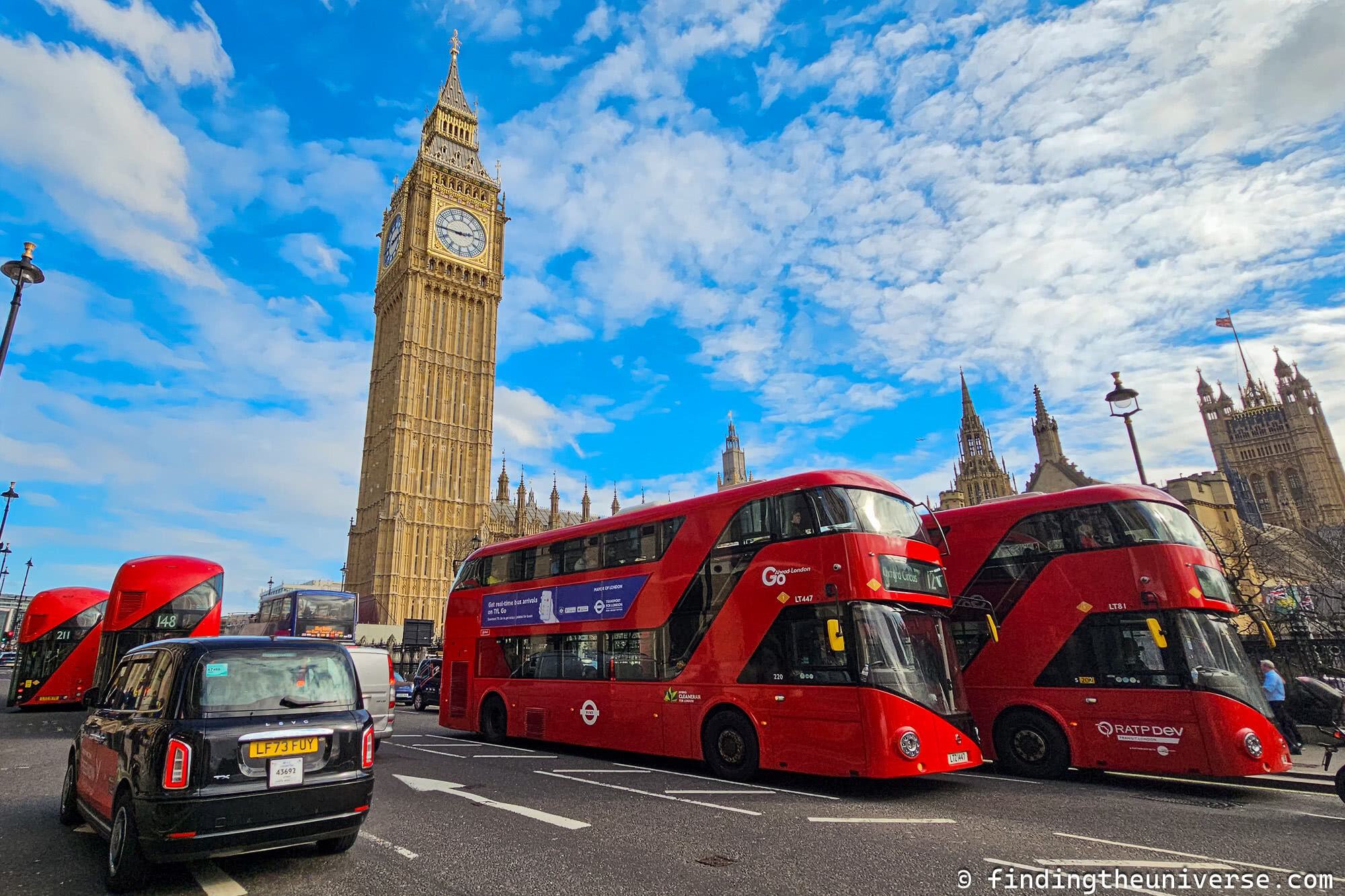
Oyster Card vs Contactless: How to Pay for Public Transport in London
Last updated: May 25, 2024 . Written by Laurence Norah - 70 Comments
I recently wrote a post about the best ways to get around London . That’s all well and good, but it’s missing a key component – the most cost-effective way to actually pay for transport in London.
You’d think this would be a fairly obvious answer, but unfortunately, it’s a little bit more complicated than you might imagine. Fear not though, this post will guide you through the options and help you decide which payment option is best for using London’s public transport system!
First, there are three ways that you can pay for the majority of public transport in London. These are cash, the London Oyster Card, and a contactless enabled credit / debit card. Let’s look quickly at these three options, and then figure out which is right for you.
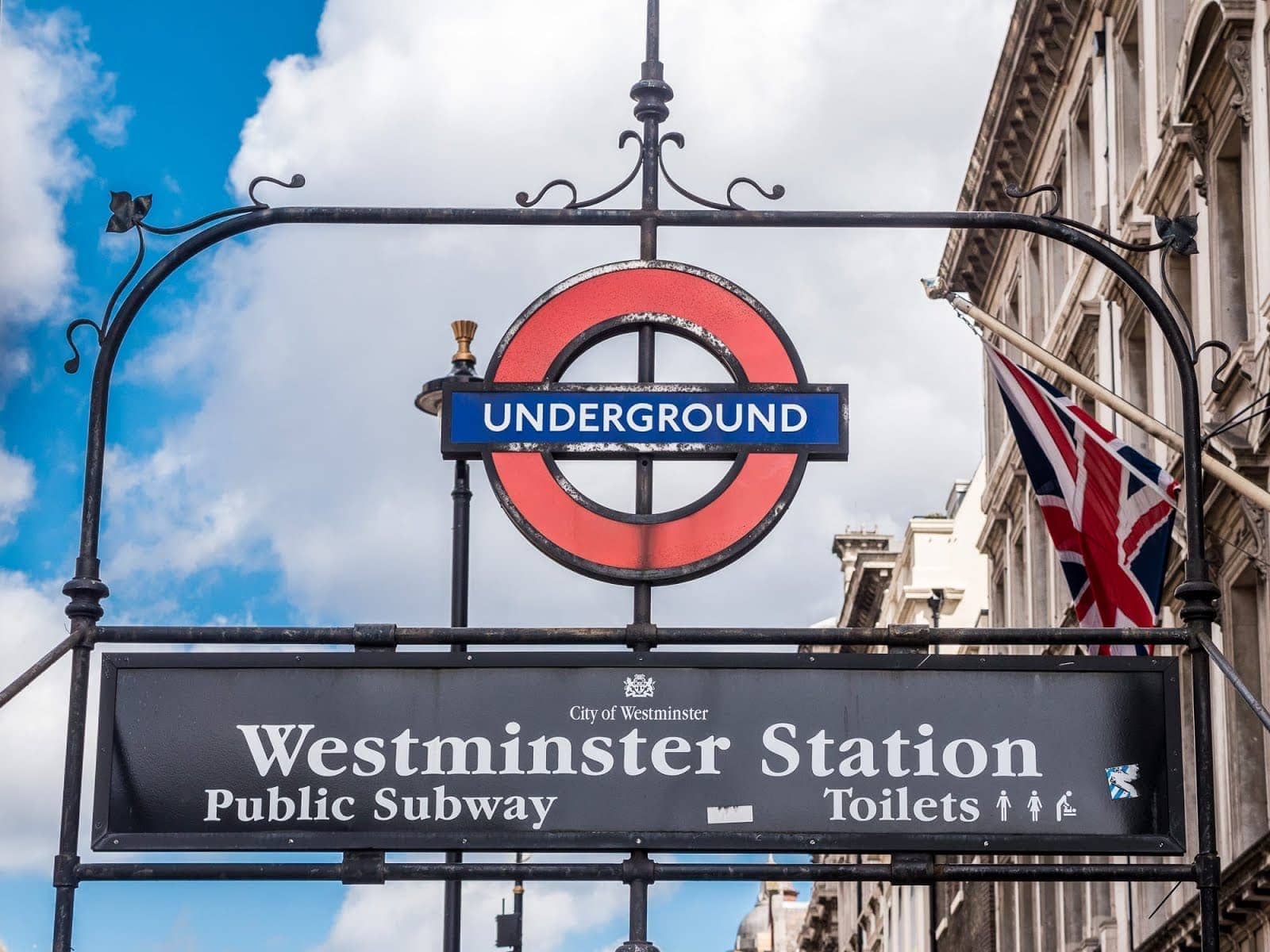
Table of Contents:

Payment Options for Travel in London: Cash, Contactless and Oyster
Cash – Cash is by far the worst way to pay for transport in London, and should be avoided in pretty much all cases, with the exception of taxis (although these accept contactless and credit cards too).
Usually, cash fares are much higher than the other payment options, plus some services, like the bus, don’t even accept cash any more. Basically, don’t use cash to pay directly for your ticket in London if you can avoid it!
If you do want to use cash, the best option is to buy an Oyster Card. These can be purchased and topped up with cash at most stations. Just be sure to use a machine that accepts cash, or go to a ticket counter.
Oyster Card – The Oyster card is a London-wide rechargeable card, designed to be re-used, and accepted on pretty much every form of London transport. There are a number of versions of this card, however for the purposes of this post we’re going to focus on the standard blue Oyster card that you can purchase in London from most train and tube stations.
For more on the different kinds of Oyster card, including the benefits of buying a visitor Oyster card in advance, and detailed information on how to actually use an Oyster card for travel in London, read this detailed post on using the London Oyster card .
Contactless – The most recent payment option for travel in London is a bank issued credit or debit card which has been enabled for contactless transactions. This means that the card has a chip in it which can be read wirelessly when held near a contactless enabled reader.
As well as being able to use these cards for normal transactions, you can also use contactless cards to pay for travel in London. These can be used instead of buying tickets with cash or using an Oyster card. If you have an Apple Pay or Google pay enabled smartphone, you can also use this as a contactless payment option.
So those are the three options. In this post we’re going to focus on the Oyster Card and Contactless Cards, to see which one is best for you when paying for travel in London.
Given the high cost of buying tickets with cash, and the fact that cash isn’t even accepted on a few transport options, we’re going to ignore cash as a payment option in this post, and advise you to do so also.
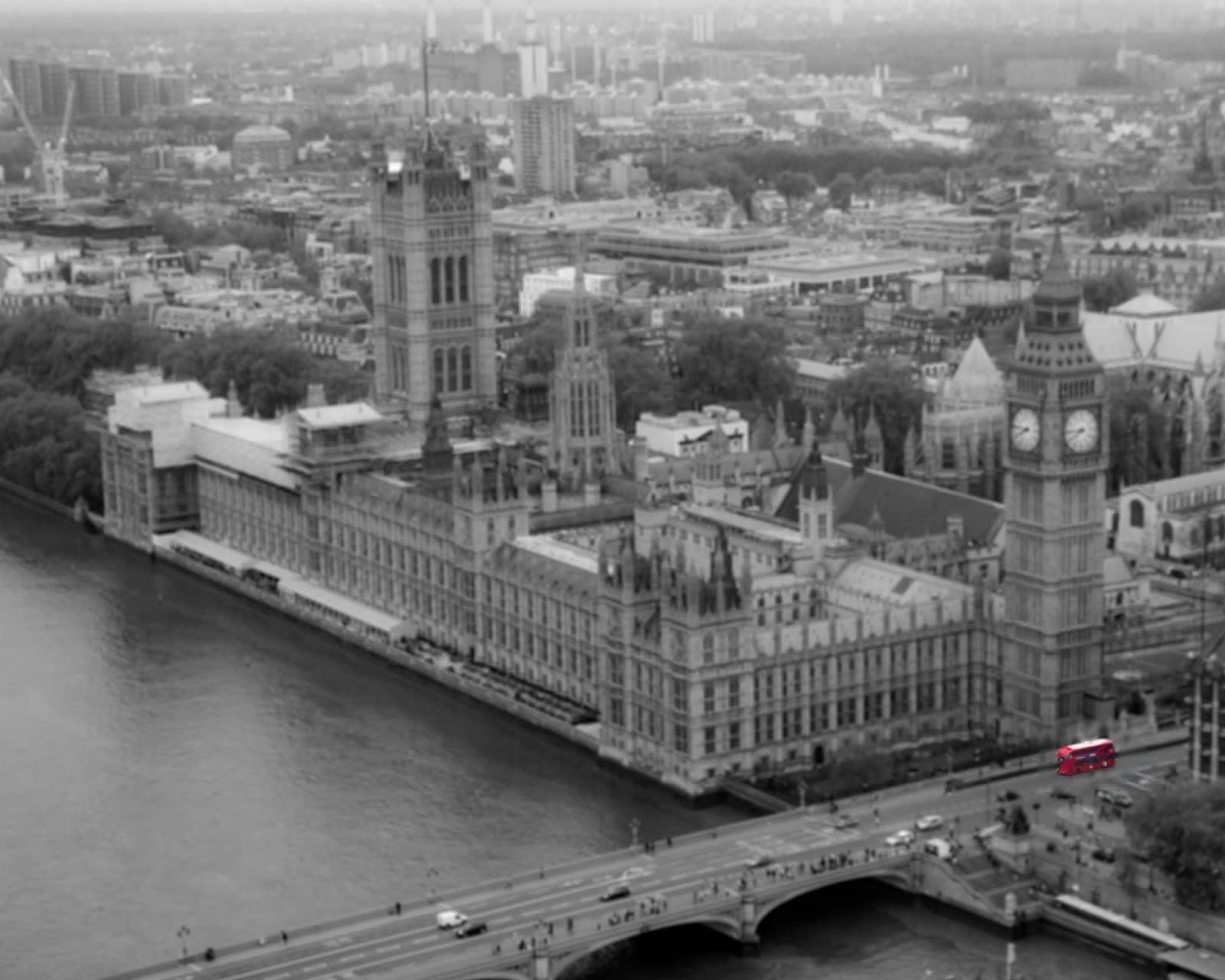
Contactless vs Oyster Cards for London Travel
Contactless – which public transport supports it in london.
Currently contactless can be used to pay for travel on the following public transport options in London: bus, tube, tram, DLR, London Overground, IFS Cloud Cable Car, River Bus, and the majority of National Rail services inside London.
You can also use contactless for some airport services, including Gatwick Express and Heathrow Express. See our guide to getting to London from the airport for more information.
You can also pay for all black taxis using contactless, assuming the fare is less than the contactless threshold of £100. Note that black taxis are separate to other forms of public transport in London and are billed separately – they don’t fall inside travel cards, caps, or other payment schemes.
Basically, anywhere you can already use an Oyster card, you can use a contactless card – just look for the yellow Oyster card reader and don’t forget to touch in (and out, if necessary) to pay for your journey – see more here for details of how to use the different public transport options in London.
Advantages of Contactless
It’s already on a card you own: if you already have a supported contactless credit card or smartphone, using this for your travel is more convenient than getting a separate Oyster card, which you have to pay a deposit on and keep topped up.
Doesn’t need to be charged up: One of the main problems with Oyster is that it’s a preload system, so you need to have credit on the card in order to use it. You can set it up to automatically reload itself, but if you’re a visitor to London this extra hassle might not be worth it.
Instead, you’ll find yourself queuing at reload stations at tube stops, and if you’re at a bus stop with no credit you’re going to be out of luck as most of them don’t have reload points. Contactless cards are linked to your bank account, so as long as you have credit, you’ll always be good to go.
You can use a mobile payment system such as Google Pay or Apple Pay : If your smartphone supports a contactless payment system, then you don’t even need to carry a contactless card – you can just link your contactless card to your smartphone payment system, and pay with that. One less thing to carry!
Can be cheaper in certain situations: sometimes Contactless can be slightly cheaper for daily fares, especially if you are travelling from further out in London, due to a difference in the way daily capping works across zones. This isn’t usually a big difference, but can make contactless a little bit cheaper in some situations for daily journeys too.
Disadvantages of Contactless
Doesn’t support all foreign issued cards: You shouldn’t have a problem using UK issued contactless enabled cards on Visa, Mastercard, Maestro and American Express to pay for your travel on London transport.
Unfortunately, this isn’t true for foreign issued contactless cards, as standards appear to differ. Currently, all American Express contactless cards should work fine. Then, some foreign issued Mastercard, Maestro and Visa cards will work, and some won’t. There’s no definitive list – it’s a case of try it and see!
Foreign transaction fees: If you are using a foreign issued card, even if it is supported by the Oyster contactless system, you need to check to see if it incurs foreign transaction fees.
Contactless payments are in GBP, so if your card issuer charges you transaction fees for foreign currency transactions, then these costs could outweigh the savings of contactless. Check with your card provider before you travel to see if this is the case.
Concessions can’t be added: A big disadvantage of contactless is that the system currently doesn’t support concessions, such as those for seniors, students, and children of a certain age.
If, for example, you’re a visitor to London travelling with children aged 11-15, you will want to use Oyster cards or travelcards in order to get discounted travel, such as with the Young Visitors Discount which offers 50% off travel when loaded to an Oyster card.
Children under 11 qualify for free travel with a fare paying adult, and this does work with contactless. You will just have to use the wider ticket barriers (marked for accessible / luggage) in tube stations so you can pass through together.
See more about how this works when travelling with children here , and more on available concessions here .
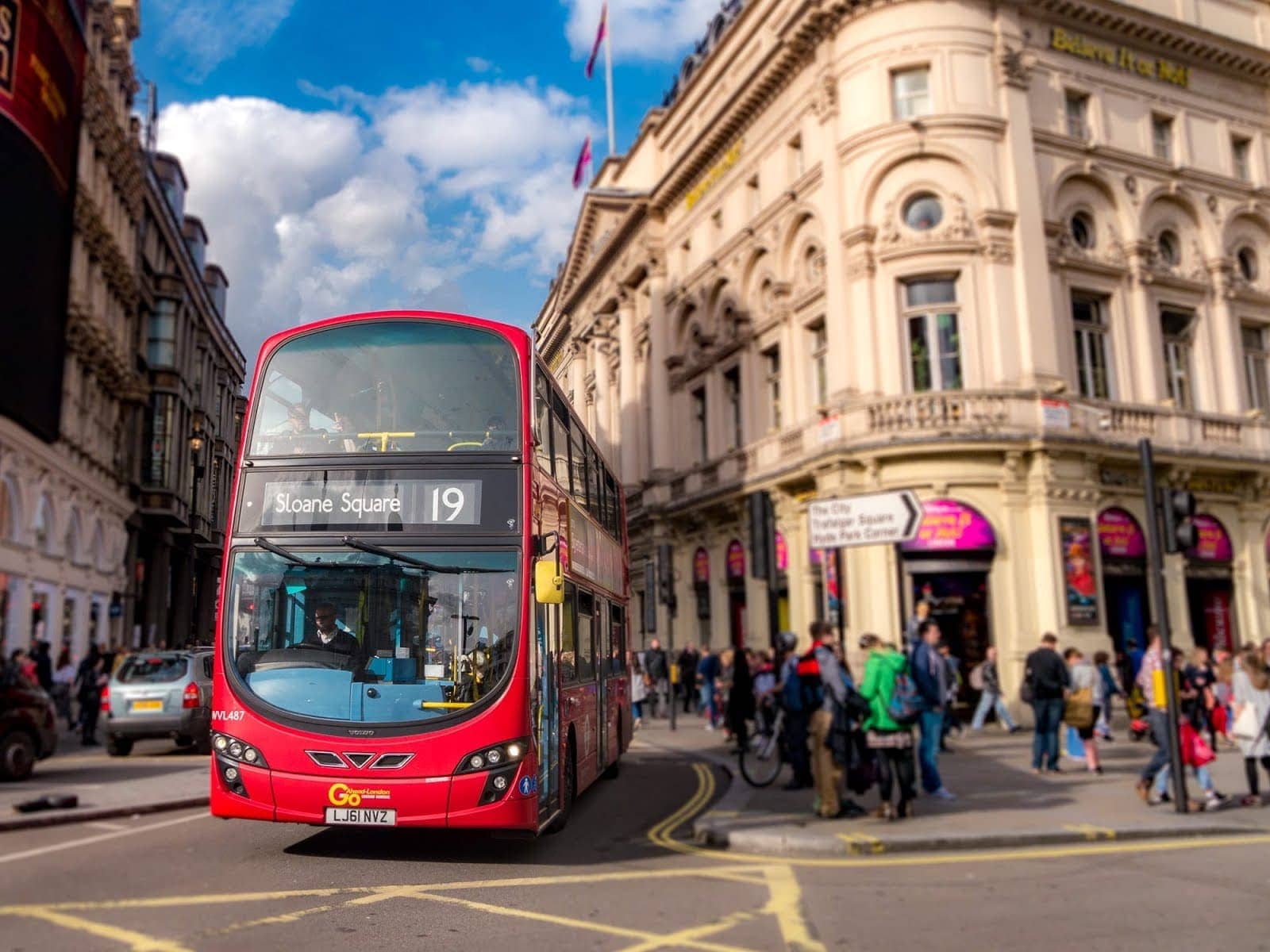
Oyster – Which public transport supports it in London?
Oyster works on all the same public transport options in London as contactless, namely, bus, tube, tram, DLR, London Overground, IFS Cloud Cable Car, River Bus, and the majority of National Rail services inside London.
Note that you cannot use your Oyster card to pay for a black taxi in London.
The Oyster Card is also not supported on private services like Hop on Hop off buses, which you would need to purchase separately. You can see some Hop on Hop off options in London here for an idea of pricing.
Hop on Hop off transport options are also included on a card like the London Pass , which might be a good option if you plan on doing a lot of sightseeing when in the city.
Advantages of Oyster
It works and support is available. As noted not all contactless cards work with the system but the Oyster card should always work. If there are problems, you can get support or get your credit refunded if your card is registered on the TfL website .
Easier to keep track of spending: Because you have to load your Oyster card, it’s easier to keep an eye on how much you are spending on London transport and you can set a limit much easier.
That said, I don’t think this makes a great difference to your average person as you will likely have to travel anyway, but it’s something to keep in mind if you like to restrict your spend on public transport.
Supports travelcards: One of the main advantages of the Oyster card is that it supports travelcards. These are fixed payment pre-paid options, where you pay a certain amount for unlimited travel inside specific London zones for a weekly, monthly or annual price.
With weekly fare capping, this has become less of an advantage, because the price of a seven-day travelcard on Oyster is the same as the weekly cap on contactless. However, a seven-day Oyster travel card is valid for seven days from when you activate it, regardless of which day of the week it is, whereas contactless capping is fixed for Monday – Sunday.
If you are in London for seven days starting anytime outside of that Monday – Sunday period, and will be travelling enough to make the travel card worth it, then it will be better value than a contactless card.
Supports cash : If you want to pay for your transport in London using cash, you can buy and top up an Oyster card with cash. This is normally a lot more cost effective than paying for a cash ticket, with the rare exception of a one-off single journey as you have to consider the cost of the Oyster card.
Supports concessions: As discussed above, if you are travelling with children, or are a London resident who qualifies for one of the discounts and concessions available to adults (see here for full list), you will want to use the Oyster card that matches your concession in order to get the best deal on transport in London. As a visitor to London with children aged 11-15, you can also add a Young Visitor discount to an Oyster card for savings.
Visitor Oyster Card Discounts: If you buy a visitor Oyster card prior to your trip to the UK, such as the one included with the London Pass , it qualifies you for some discounts. I’d not say these are worth buying the card for specifically, but they are good to know about.
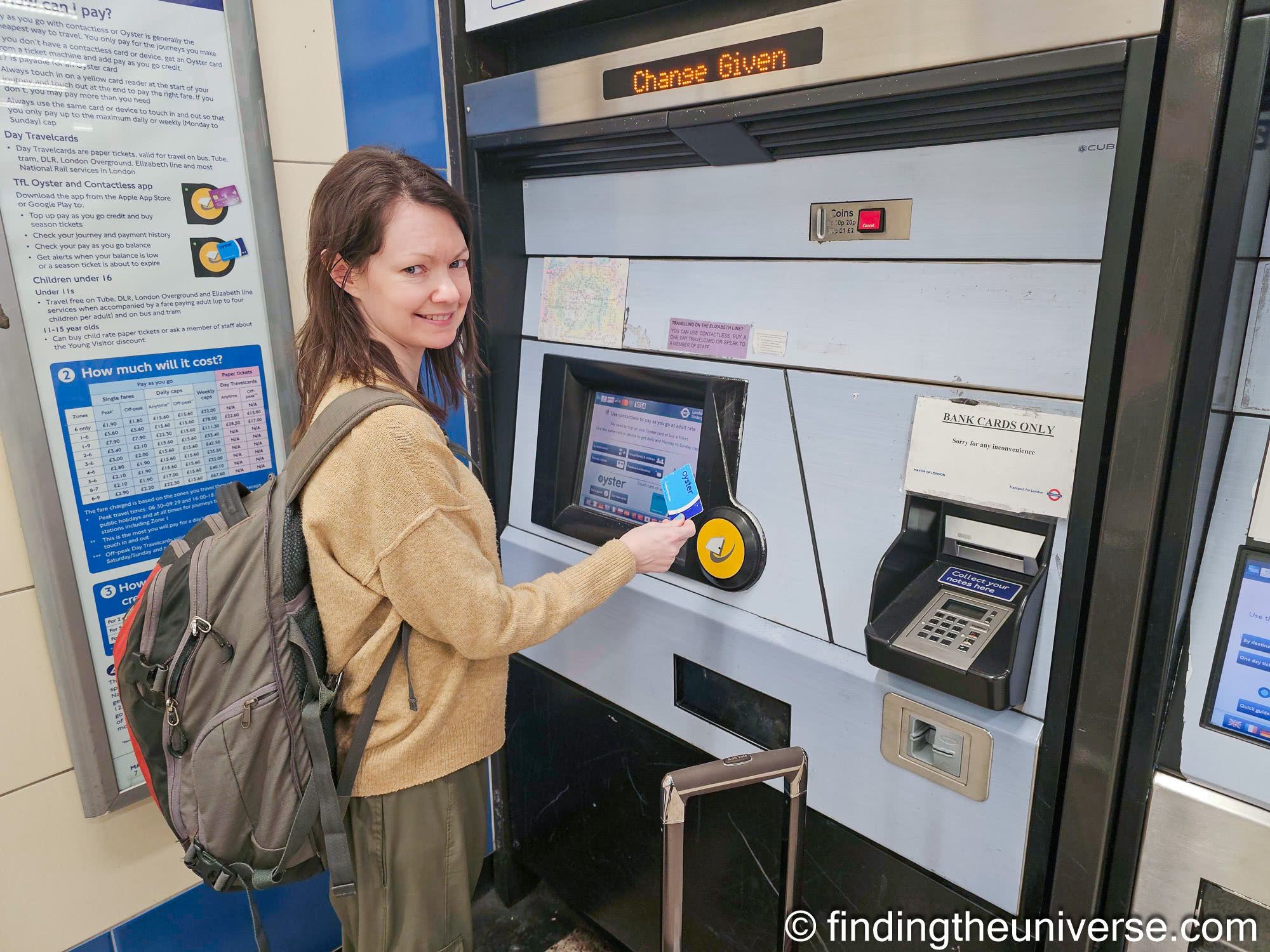
Disadvantages of Oyster
You have to pay a deposit: When you first get a regular Oyster card, you have to pay £7. This used to be refundable, but as of 2020 this £7 is added to the card as credit a year after your purchase.
This credit happens when you take a journey using the card between one year and eighteen months after first activating it. If you don’t use the card in that six-month window, the credit is lost. If you are only visiting London for a short time, this might not be credit you can use, meaning there’s a tangible £7 cost associated with using it.
Note the Visitor Oyster Card only costs £5 to buy, but this is a fee and does not become a credit. For most visitors though, the £7 of the regular Oyster card is lost anyway.
It has to be recharged: One of the main downsides of Oyster is that it’s a pay as you go card that needs to have credit on it use it. This is fine if much of your travel is by tube as the majority of tube stations have machines that you can top-up on.
However, if you travel by bus a lot (often the most cost-effective way to get around London), you’ll have to go out of your way to find a charge point, as most bus stops don’t have them. If you register your card online, you can mitigate this issue by setting up auto top up.
Can’t be used on taxis: This isn’t really a big deal, but it’s worth bearing in mind that you can’t use your Oyster card on taxis. To be honest, the higher fares associated with taxi rides mean we’d suggest avoiding using a taxi unless you really want a direct trip from point A to point B, however, we’ve added it for completion!
There will always be leftover funds: Because Oyster is a pay as you go system, you have to have funds on the card to use it. Because trips vary in fee, it’s almost impossible to get the card to zero. So if you stop using the card, there will be leftover money on it.
You can get this money back by returning the card, but we suspect most people don’t do this. TfL have shared that as of 2019 there’s over £400 million in unused balances and deposits!
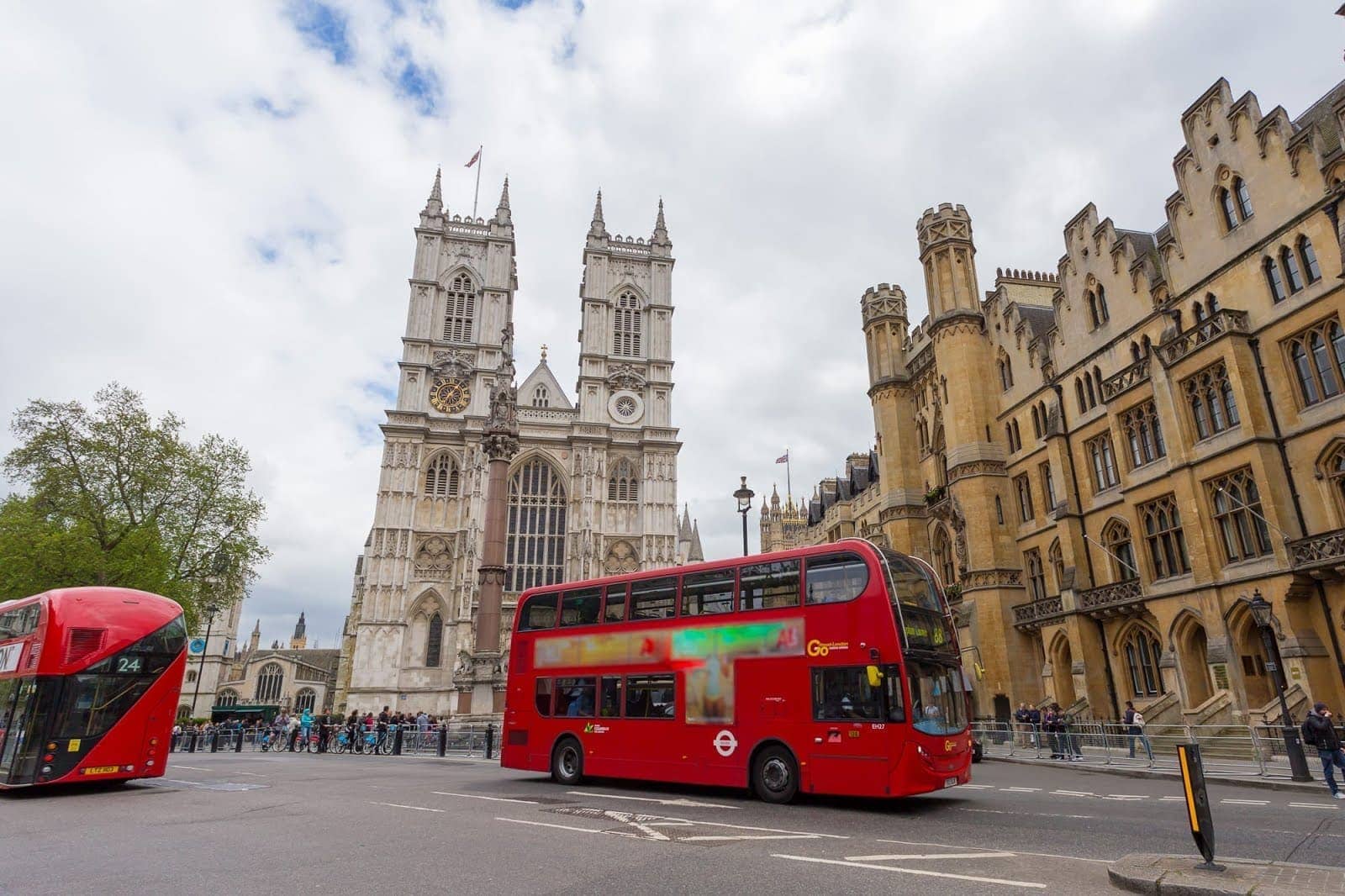
Should You Use Oyster or Contactless to Pay for Public Transport in London?
First, if you are visiting London and don’t have a contactless payment card, I wouldn’t worry too much about trying to get one just for the trip to London – the Oyster system will suit you just fine.
If you would like to pick up a visitor Oyster card in advance, you can do so from this link .
Alternatively, if you are coming to London as a visitor, you can buy an Oyster card in a package with the London Pass here and save on attraction entry as well. See our review of the London Pass here .
The situation changes if you already have a contactless card which is compatible with the public transport system in London.
In the majority of cases, if you have a contactless enabled credit or debit card supported by the London transport network, then you should use it to pay for travel in London. It’s the easiest and most convenient way to pay, is supported on every form of transport, and in most cases is either cheaper or the same price as using an Oyster card.
The main times you should NOT use your contactless card are:
- If your card is not UK issued and your card issuer charges you fees for overseas transactions that make it more costly than Oyster
- If you are eligible for a concession , such as when you are travelling with children aged 11-15, or if you are a senior citizen resident in London
- If you are buying a weekly 7-day travelcard for travel exclusively outside Zone 1 (unlikely as a visitor to London)
- If you are buying a weekly 7-day travelcard, and you will travel enough to hit the daily cap on at least five out of those seven days and your trip is for a week-long period that isn’t from a Monday – Sunday.
- If you are buying a monthly travelcard for travel in London – this is not possible on contactless and there is no monthly capping
There are no doubt some more situations where an Oyster card or travelcard might be cheaper than contactless. Usually, figuring this out will require you to do a bit of math and have a detailed understanding of your exact travel plans, which might take more time than is worth the small saving!
As a visitor, we believe that in the majority of cases if you already have a contactless card you are going to find that it is both cheaper and easier to use contactless for your London travel, outside of the five points listed above. If one of those does apply, you can get an Oyster card here before you visit, or simply buy one on arrival.
Our advice therefore, is to use your contactless card for London travel if the five points above don’t apply to you. It’s easy and convenient, you don’t need to worry about recharging it, and you benefit from daily and weekly caps for travel, meaning it will likely be cheaper than the other options in nearly every case faced by most visitors to London.
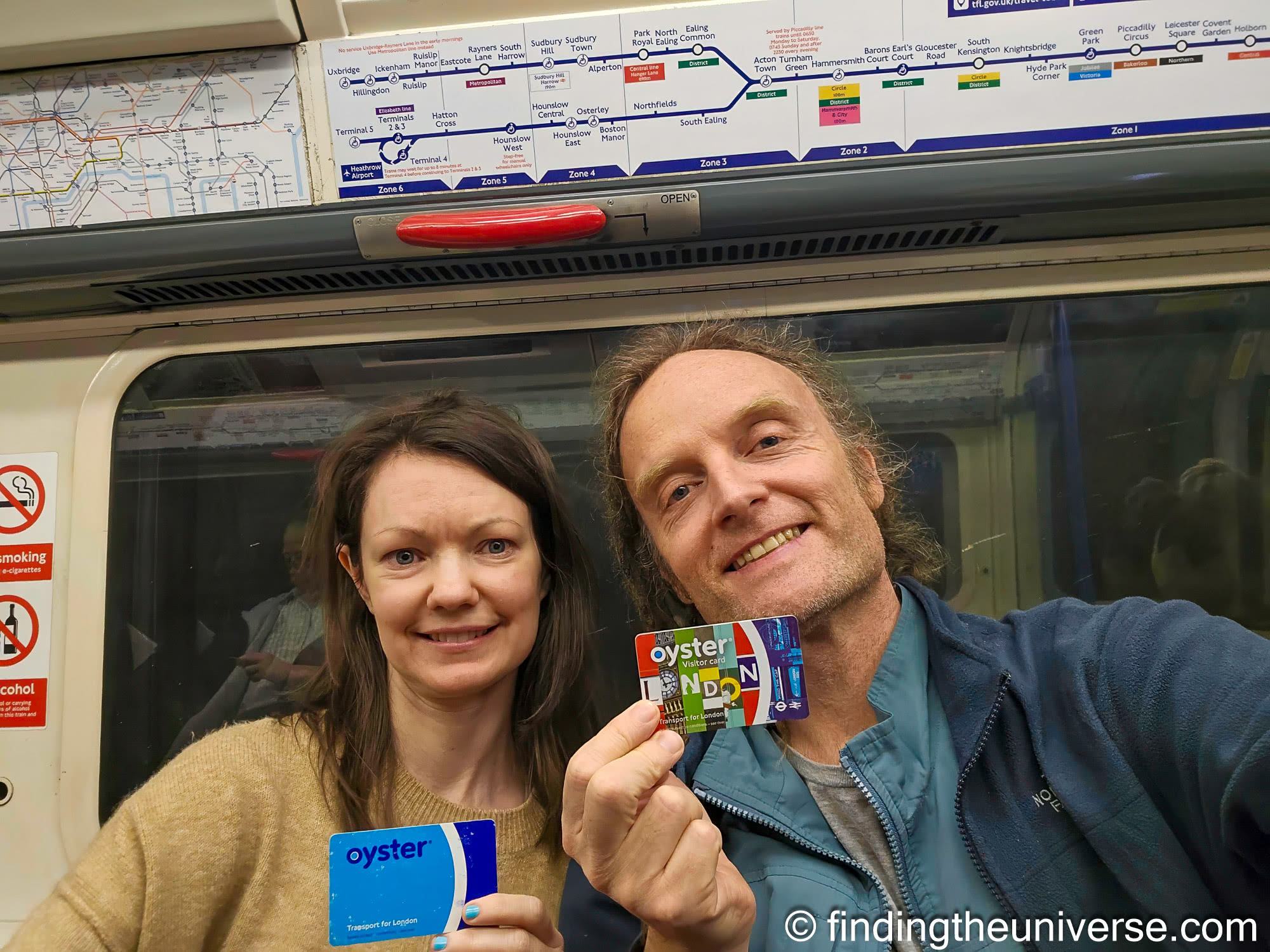
Does Oyster Support Weekly Capping?
Until the end of September 2021, only contactless supported weekly capping on fares across the whole network. Both Oyster and Contactless have long supported daily capping (meaning you won’t ever pay more for your travel than if you had purchased a one day travel card), however until September 2021 only contactless supported the Monday – Sunday weekly cap.
As of 28th September 2021, both Oyster and contactless support both daily and weekly caps across the TfL network, which is great news for Oyster card users as it can be a significant saving.
For an example, if all your travel is within zones 1 and 2, the current weekly cap is £42.70 (as of March 2024). This weekly cap is calculated for travel from Monday through to Sunday, meaning it works best if your travel starts on a Monday. For comparison, the daily cap in zones 1 and 2 is £8.50. Over seven days, that works out to £59.50.
Tips for using your payment method
Once you have picked your payment method, be that contactless, Oyster or a smartphone payment system – make sure you stick to it, and only swipe that payment method on the reader! If you hold two payment methods near the terminal, it will randomly pick one of them, meaning you could be double charged if you don’t touch out with the same card.
If you are using a Google or Apple smartphone to pay, make sure you use that consistently. If you have a payment card registered on the device and decide to switch to the physical card instead of using the smartphone, or vice versa, this is technically registered as a different payment card.
This is actually a good workaround if there are two of you travelling together and you only have one contactless payment card. You can add the card to your Apple or Google device, and then one person can use the physical card and the other one can use the smartphone version.
We also highly recommend you register your payment method online with TfL . This has multiple benefits, including being able to keep track of your spending, and in the case of an Oyster card, you can reclaim and funds on it if you lose it!
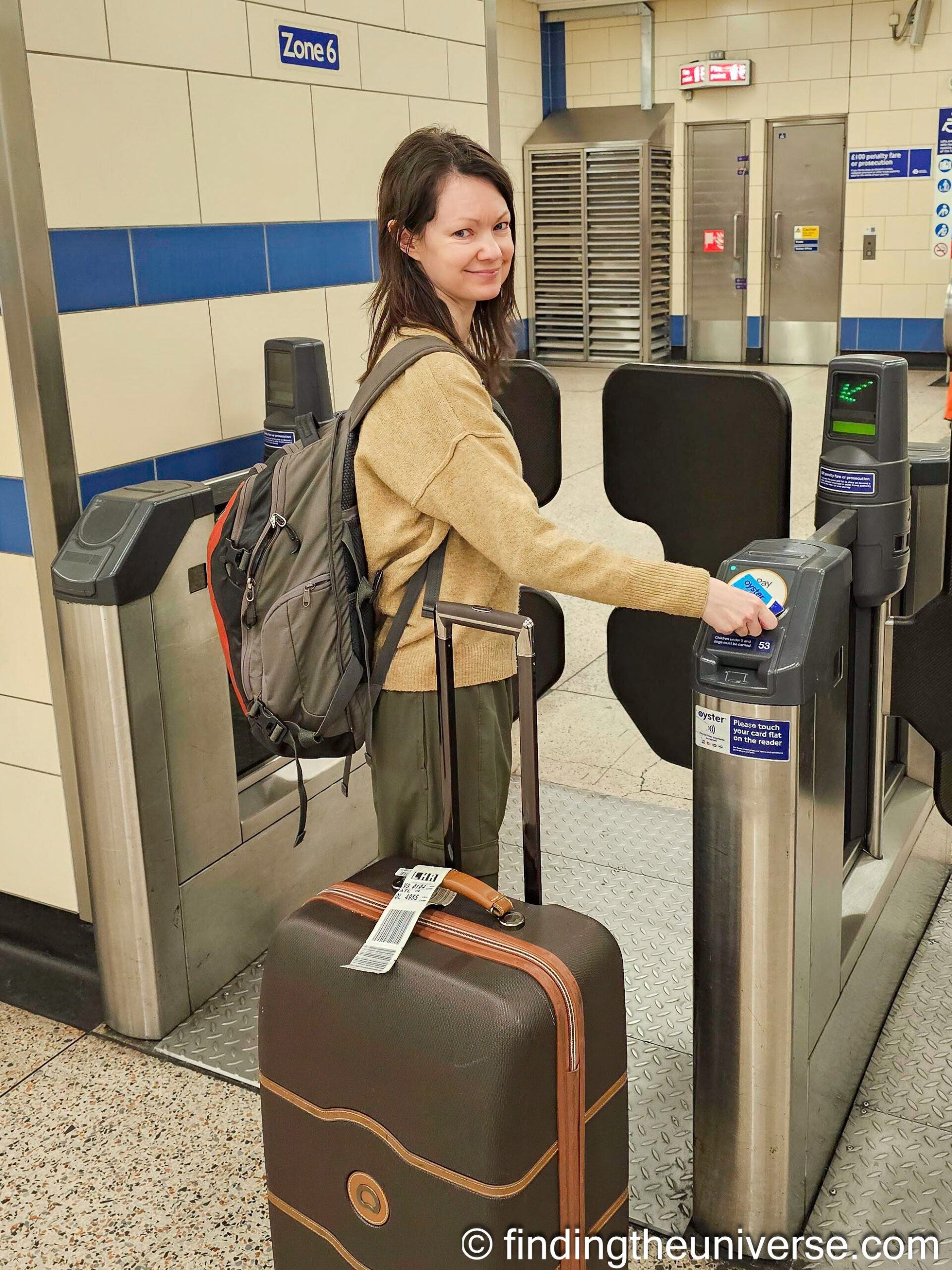
Further Reading
We have plenty of further reading to help you plan your trip to London, both content we’ve created based on our experiences, and third-party content we think you’ll find useful.
- Looking for things to do in London? See this complete list on GetYourGuide of attractions, tickets and tours for some ideas!
- Our detailed guide to public transport in London
- The official TfL website , which will give you information on tickets, routes and any updates to services in the forms of delays or cancellations
- Jess’s detailed guide to the London pass , which will help you decide if this is a good way for you to save money on your London sight-seeing. The London Pass has a package option to include a Oyster Card and currently also includes Hop-on, Hop-off bus passes, which can be a great transport option.
- My guides for London must do’s in one day, as well as a detailed two day London itinerary . If you have longer in London, we also have a detailed six day London itinerary
- Harry Potter fans will want to check out our guide to the key Harry Potter filming locations in London
- Jess’s guide to a 1-day walking tour of the highlights of London .
- The Eyewitness Travel Guide to London , which has all sorts of information within, including more itineraries and ideas for your trip
- Rick Steve’s London guide, the #1 bestseller on Amazon for UK travel guides, and always an excellent source of relevant information
And that sums up our post on the best way to pay for public transport in London! As always, if you’ve got any comments or thoughts, let us know in the comments below!
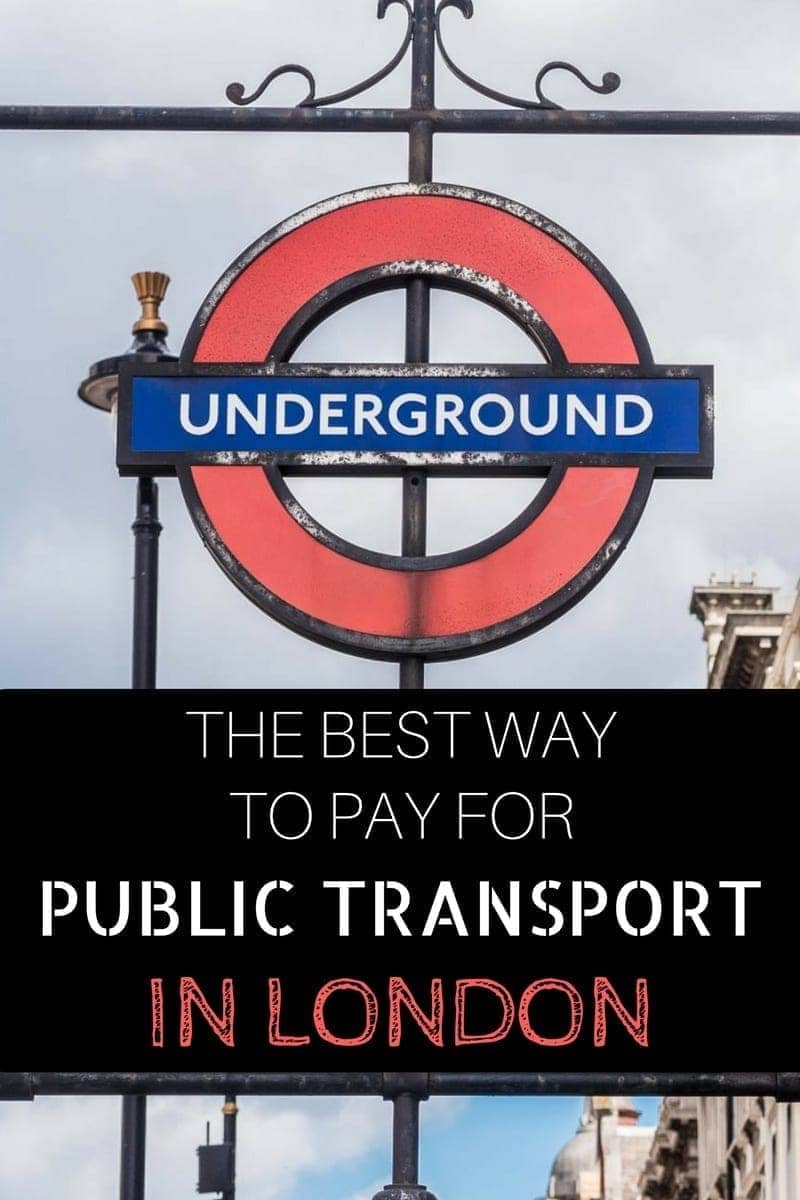
Enjoyed this post? Why not share it!
There are 70 comments on this post
Please scroll to the end to leave a comment
30th July 2024 at 12:13 am
I truly appreciate your help in trying to make sense of this complicated system. However, I would not celebrate the “convenience” of any of this, which attempts to normalize Central Bank Digital Currency (CBDC) in all its digital forms. Is there no way to buy an all-day fare card using cash but without buying an Oyster Card (e.g., those disposable one-day passes of old)? I know many major cities like Paris have gone to (not-sustainable) plastic cards as well as Washington, DC. (Since London is the 2nd-most tourist traveled city in the world, how many plastic cards are being thrown away?) Not your fault, but so disappointing.
Laurence Norah says
30th July 2024 at 2:35 pm
I hear you! You can indeed buy a 1 day travelcard for travel in London, it’s printed as a paper ticket and can be purchased in person at ticket machines, ticket offices and visitor centers in London, where you can pay cash.
You can see more about travelcards here , and how to buy them here .
Thanks for stopping by 🙂
Hitesh Dand says
4th June 2024 at 6:58 pm
On Oyester, if we change a bus within an hour then we are not charged for it. Does the same work for contactless cards?
5th June 2024 at 5:48 pm
Yes, it’s the same with contactless. It’s called a Hopper fare and it works the same on both contactless and Oyster 🙂
Enjoy your time in London!
Venkat says
17th May 2024 at 4:39 pm
Don’t buy Oyester card, if you have wifi enabled contact less card. Recently as a family of 4 members visited London. we purchased 4 oyester cards with 7 pounds non refundable deposit in each card. we have to add topup balance for travelling. at the end of our trip we couldn’t able to get the 7 pounds, which is non refundable.bit is is big amount. I don’t know why that much of amount fixed as non refundable. The actual cost of making Oyester card is less than 1 pound and Non refundable amount also should be less than 1 pound. We also used contact less card in buses and they are working fine. If you already have contact less card, don’t buy Oyester card
17th May 2024 at 4:42 pm
Yes, this is correct. As I say in this guide, if you have a contactless credit card this is normally the best way to pay for transport in London. The only exception is if your card charges fees for overseas transactions, or if you are travelling with children who qualify for the young visitor discount, as this can save you quite a bit as well. I hope you enjoyed your time in London!
Jessica says
9th April 2024 at 8:11 pm
Thank you for your post because this is far too complicated than it should be. I was directed to get a Friends and Family Railcard. This doesn’t work in conjunction with Contactless but I guess there is a way to link it to Oyster. I’m just wondering what makes the most sense.
We will be travelling from Heathrow Terminal to Zone 1 Travelling on Stansted Express from Liverpool Street Station to Stansted Airport Considering the train to Windsor Castle and/or Stonehenge Would likely do a day pass for Zone 1-2 one day,
With friends and family kids 4 and under are free but with Oyster there is a photo card where kids under 11 are free with adult ticket. Our kids are 2 & 6 yrs.
It’s very hard to determine if Family Railcard vs Oyster makes sense. I assume with the railcard I just have to purchase online. Would you get both the Family Railcard and Oyster and try linking them? Do you think the 5-11 photocard is a necessity? Any input or suggestions is appreciated!
14th April 2024 at 11:06 am
It’s my pleasure and I agree it can be a bit complicated. Honestly, if you have contactless that will probably be the simplest option. It applies a cap to your travel on both a daily and weekly basis, so you never pay more than a certain amount. For your children, the photocard is only important if they are traveling alone. Kids under 11 travel for free when accompanied by an adult, so you don’t need a photo card for them. The photo card is more designed for local residents who take public transport to school for example.
The Friends and Family railcard would save you some money on your transport to Windsor Castle and Stonehenge, but as you have to pay to get it you’d want to check if it would actually end up saving you money. Again, it’s designed more for regular travelers as it’s valid for a year. It saves most families quite a bit over a year if used for a few trips, but might not be worth it in your case for just a couple of journeys. You’d likely save more by just booking your train tickets well in advance, which is how to get the best value fares.
Let me know if you have any more questions and have a great time in the UK!
Nilesh Sahni says
7th January 2024 at 4:27 pm
We are couple visiting London for 8 days and planning to go to Edinburgh by LNER rail. We are comfortable with contactless cards to commute in London, but I saw there are some railcard concessions on booking LNER tickets for Edinburgh.
I’m getting inclined to purchase twotogether railcard to make use of this concession. Please suggest is it worth buying this railcard just for LNER rail concession or is there any other better alternate to book this travel.
9th January 2024 at 1:35 pm
A railcard can definitely save you money on train tickets. However, the best way to save is by booking as far in advance as you can. For example, a standard single from London to Edinburgh is around £193 at the moment. If you book in advance as far as you can, prices are as low as £44.10 currently for one person one way. I believe tickets can be booked up to 90 days in advance of travel.
In terms of a railcard, whether or not it will save you will depend on the ticket. With the previous example:
2 advanced singles without railcard would be £88.20 without the railcard, and £58.20 with the railcard. 2 anytime singles without railcard would be £387.8, and £255.90 with.
I believe the Two Together railcard costs £30. In the first case, the saving would be exactly the same, however I assume you are doing a return journey so yes you would end up saving. In the second case, you would definitely save.
Have a great trip!
Amanda Smith says
6th September 2023 at 4:16 pm
We will be traveling to London for the first time soon. We’re planning on staying in the city for a while then traveling to the Cotswolds for a few days before we head back to the airport. We are trying to decide on the best way to do this. We could rent a car in London but we’re a little intimidated about driving through the city (on the side of the road we are unaccustomed to driving on), or I’m thinking we could take a train to a less populated city (like Oxford, for example) and rent a car there to head to our final destination. My question is this: Can you use the contactless system and Oyster cards for the train? If so, is there some cost advantage to using one or the other? Do I need to book the train in advance? And finally, do any of these sound like a decent plan, or do you have a better option?
6th September 2023 at 4:23 pm
This is a great question. So I would highly recommend not renting your car in London. I’m actually doing something similar right now with a trip around Wales, so rather than rent in London I took the train to Cardiff and will be renting to and from Cardiff instead. London is challenging to drive in, plus there are the issues of the congestion charge zone AND the Ultra Low Emissions Zone to contend with. So best to skip all that if you can!
Oxford, Bath or Bristol would all be good options for getting to the Cotswolds. I’d probably err towards either Bath or Oxford as they are smaller so easier to drive from. I’d definitely suggest picking up and dropping the car at the same location as it avoids the one-way fee.
For trains, the Oyster card doesn’t work beyond London. However it’s easy enough to book train travel in the UK. There are direct trains from London Paddington train station to both Oxford (around an hour) and Bath (around 1.5 hours), and you can book trains online using a site like trainline . You can also just buy tickets on the day if you prefer with contactless payment from a ticket machine, but if you book in advance you normally get a better price and, depending on the train, a reserved seat. However you don’t have to book in advance.
Hopefully this answers your questions, but if not do let me know and I will do my best to help out! Have a great time in the UK. I’d also suggest reading my tips for driving in the UK which might give you some pointers 🙂
Jeremy says
15th October 2022 at 5:44 pm
Thank you for the detailed write up. A question: Instead if using one contactless and one physical card, can I use 2 contactless iPhones (Apple Pay) linked to the same card? As I do not intend to bring the physical card along. Thank you.
16th October 2022 at 3:45 pm
Yep, that would work! Every device creates it’s own “virtual card”, which the Oyster system sees as it’s own card.
Keith Pugsley says
19th September 2022 at 7:06 pm
Thanks for the Blog. With a son just starting study in London I have looked into this ‘minefield’ of confusion. If you have the knowledge (and inclination) I’d value your thoughts on the questions I still have. 18+ Oyster card talks of ‘discounted travel’ but all I can see from the Tfl website is that there is a discount for purchasing Travel cards. No mention of discount on fares. The only discount I can see for fares is if it is linked to a Railcard and then there is a 30% discount on off-peak travel on the tube. However you can link a Railcard to a standard Oyster card and also get this discount so what is the point of a student oyster card? Then it seems you have to pay a £20 ‘admin fee’ to get the student oyster card, whereas it seems you only pay £5 for a regular adult card. The Tfl site says for pay as you go using ‘contactless’ you don’t get cheaper fares! But this is not explained. just another ‘hanging statement’. If you are able to throw any light on this I’d be most grateful. Thanks.
20th September 2022 at 9:20 am
I hear you, the TfL website is a bit of a maze when it comes to finding things out. You are correct, the 18+ Oyster card does not offer discounted travel on pay as you go fares, only on Travelcards, for which there is a 30% discount. I think the theory is that this is aimed at someone who will be travelling multiple times a week, for whom a travel card would make sense, and so then there is the added benefit of a 30% discount.
The question really is to think about how often your son is likely to need to travel using public transport. If it is going to be at least 4 days a week, then a travel card with the discount is likely going to save money. If it’s less than that, then there might not be any savings, in which case just using a normal contactless bank card for payment, or an Oyster card, might be just as cost effective.
You are also correct that there is a railcard option, which might make sense if your son already has a railcard. I think the option exists to link it to a student Oyster card because you can still use a student oyster card as a normal Oyster card without adding the discounted travel card to it, so this would save someone having to carry two cards.
I hope this helps a bit. My main suggestion is to look at where your son will be living and his travel requirements, and then doing a bit of math to see which option is going to work out the most cost effective. I also wish him the best with this stage of his life 🙂
tawny own says
12th September 2022 at 3:58 pm
Thank you! Info which I think was not covered in the article – can you use cash to buy and top up an Oyster card – and which is difficult or impossible to find on the TfL site. Have spent about an hour trying to find out.
12th September 2022 at 3:59 pm
Thanks! I’ve updated the post to make this clearer, that you can definitely use cash to top up an Oyster card, as well as to buy one. The larger machines at tube stations accept cash, as do the ticket counters at stations with ticket counters.
5th September 2022 at 8:25 pm
My wife and I will be traveling from US to London soon. (4 days) We have a good no foreign fees contactless card, but the card is a joint account. Can we use the same card for two riders for underground/bus fare? I’m would like to use contactless for the reasons that you mentioned -(Initial charge for the Oyster card – how much to put on it – and we are sure to have unused money on it)
on another note – Quick question-transportation from Heathrow to city center can be cheaper and faster than a cab- but we will have luggage and need a transfer from station to the hotel (Westminster area). thoughts? Thanks Ken and I will also check out your other trips on visiting London
6th September 2022 at 10:43 am
So you can’t use the same physical card, but what you can do is use a virtual version of the card. So if you have a smartphone that supports contactless payments (Google Wallet or Apple Pay for example), or a smartwatch, then you can add the card to that device and use that as a second card. Because the smartphone assigns it a virtual card number, it works as a separate card for the purposes of the TfL system. This is fully supported and my wife and I do this, so I know it definitely works.
If you don’t have an app or supported phone, then you can also purchase an Oyster Card easily and load it up.
For transport to central London, for sure, the Underground, Elizabeth Line or Heathrow Express will be the lower cost option, although Heathrow Express won’t be much difference. The Underground would be around £10 for the two of you, and Elizabeth Line (to Paddington) will be around £24 for the two of you.
I actually have a whole guide to getting from London airports to central London .
So you have two options really, one is to book a transfer in advance from Heathrow using a service like minicabit . Prices will be in the region of £70 – £80 I expect.
Alternatively, you could take the Elizabeth Line to Paddington and then take a taxi or Uber from there. Honestly, the cost saving probably won’t be that great as you have to get across London. The cheapest option is definitely going to be the Underground but you will have to change lines and it will be less convenient of course.
Have a great trip to London and let me know if you have any more questions!
5th July 2022 at 7:22 am
I am slightly confused about the travelling with children situation. I am visiting in August with my 8 year old and can’t decide if I actually need a visitor oyster card or can just use contactless. A friend of mine travelled with her daughter last year and just used contactless but your article says that’s not possible? Any chance you could clarify this please? Thanks ☺️
5th July 2022 at 10:41 am
Your friend is correct, and I recently was able to get clarification from TfL on this point as well. Children under 11 can travel for free with a fare paying adult on contactless pay as you go, as long as they are with the adult. This works on contactless. I’ve updated the relevant section of this guide to be clearer on this point! When using the tube, just be sure to head to the wider barriers which are marked as accessible / for luggage, so you can pass through together.
Let me know if you have any more questions 🙂
5th July 2022 at 2:04 pm
Thank you so much, that’s really helpful information!
Olivia says
14th June 2022 at 2:40 pm
Thank you so much for the article Laurence, truly helpful!
I have a question… You mentioned about the possibility of sharing one bank card between 2 people by one using device and the other the physical card (contactless). How does that work? How does it show in the bank statement?
You recommended registering our payment method online and I saw on their website that you can actually know your trip history online if you use Apple Pay by adding your credit card number to your online account. But if me and my friend register the same credit card on our accounts (one of us using Apple Pay and the other the physical card), would that affect anything?
Many thanks!!
14th June 2022 at 4:18 pm
Hey Olivia!
My pleasure. Ok, this is a great question. So you can definitely use one card between two people by having one person use a physical card and one using a contactless payment method. This works (as I understand it), because Apple Pay / Google Pay create a virtual card number for transactions, so the TfL system sees it as a different card.
You can still register them “both” on the TfL system. I believe the way you do this is create an account normally, and then add the physical card details to your account. When you travel, it should show the different devices you are using (the card, Apple Pay, Google Pay etc). TfL even says that using different devices, like an Apple Watch or separate smartphones, also count as different payment methods, even on the same card.
However, I *think* you need to manage them from one account which would be registered to the person whose name the card is in.
Hopefully this makes sense, let me know if you have any more questions!
Jennifer Budd says
27th March 2023 at 6:53 pm
Hi Laurence- Quick piggy back question. What if there are three family members traveling together with the same card? We are traveling with our 16 year old son. Thanks! Jen
30th March 2023 at 2:10 pm
Hi Jennifer!
So you can’t use the same physical card for multiple people, but if you have multiple devices (an Apple Watch and an iPhone for example) then you can load the card onto a virtual payment method like Apple Pay or Google Wallet, and each person can then use the card. You just need a different device for each person, so that would be two devices and the physical card in your case.
I hope this makes sense, have a great time in London!
varados sucuri says
19th April 2022 at 9:14 pm
The system strikes me as relentlessly complicated and not at all user friendly. Cash appears to be considered poisonous. Is there any way to obtain an Oyster card with cash? I saw no mention of privacy. Are all these transactions automatically collected by the British government and used to track the movement of its citizens?
20th April 2022 at 11:04 am
Hi Varados,
You can indeed purchase an Oyster card with cash at various locations including at many newsagents and at tube stations across London. You can see a full list of where you can buy your Oyster card here: https://tfl.gov.uk/fares/how-to-pay-and-where-to-buy-tickets-and-oyster/buying-tickets-and-oyster?intcmp=54759
It can also be topped up with cash at ticket machines, just make sure you don’t use the “card only” ticket machines and you will be fine.
6th March 2022 at 11:10 pm
thank you.. it is really helpful
7th March 2022 at 11:56 am
My pleasure 🙂
28th August 2021 at 10:40 pm
Absolutely love that article. Thank you
29th August 2021 at 8:36 am
Thanks very much!
John Pressagh says
11th February 2020 at 7:57 pm
Please subscribe me to mailing list
11th February 2020 at 11:20 pm
I can confirm you are subscribed 🙂
Philip says
11th December 2019 at 1:00 pm
Thanks Laurence, most helpful. For occasional visitors to London, like me, contactless beats Oyster. I had an old style Oyster & applied for the newer type and received that by post. I went online and arranged to transfer my small balance over to the new card. As expected they cancelled the old card and said I would get the transfer on tapping in with my new card between dates in the very near future when I shall not be in London. I tried to arrange ithe transfer by phone but needless to say I have had to write. I set up auto top up on my new Oyster but the minimum transfer and retained credit is £20. Again a date I can’t make but that £20 will be transferred back to me automatically. Your warnings about unused balances now refers to a minimum of £20 if auto top up is set up. Frankly a single registered contactless credit card is much easier provided I use the card itself, Apple Pay on phone or on watch and never mix the card or devices on any given journey.
11th December 2019 at 3:32 pm
Hi Philip – we agree! There are only a few cases where an Oyster card makes more sense, we think that most visitors and travellers in London will benefit from contactless these days.
Thanks for stopping by and sharing your experience, much appreciated 🙂
24th October 2019 at 10:13 pm
Thank you so much for all the infos. Very comprehensive and useful … However it looks like the London public transports system is not only Byzantine but also quite expensive if not a scam. In comparison with Paris, the Navigo Card cost 22.80 € weekly (Monday to Sunday) or 75.20 € monthly, for all zones (plus 5 € for the card). With it you can use any Metro, RER (suburban express) train, buses, Transilien suburban trains, and trams … as much as you want. In a nutshell : It is unlimited for the period the card is valid (weekly or monthly) and can be top up for every new period. This has to be put in light that pollution in a real concern in Paris and the local authorities want to phase out dramatically the use of cars in the French capital to render it inconvenient and expensive : narrowing the streets to make wider pavements and or lanes for bus/taxi/bicycle as well as expensive car parks. On the other hand since the last 2/3 decades or so a lot of money has been invested to expand and modernize the infrastructures by offering an alternative/incentive to motorists/commuters while keeping affordable prices.
25th October 2019 at 4:41 pm
It certainly sounds like the Paris card is more cost effective, although I can’t comment as to why that is! Thanks for your input 🙂
1st August 2019 at 7:54 pm
Thank you very much for the information on the blog! I wanted to specifically ask you something.
I travel from Croydon/zone 5 to London bridge/zone 1 M-F also take busses. I was told to buy the weekly plan on the oyster card for £60. Because the contactless payment will most likely charge me a daily rate of £12. Is it just the same with a contactless payment and the oyster then? I understand from your blog, that no matter what, anyway there is a weekly limit?
2nd August 2019 at 9:10 am
Our pleasure. I will try to help 🙂
So the Oyster card has a daily cap for all journeys, and a weekly cap for bus and tram journeys only. Contactless has both a daily cap and a weekly cap for all journeys including the tube.
However, the weekly cap on contactless always runs from Monday to Sunday. So if someone is visiting London from say a Wednesday to a Tuesday, even though they may travel for a week, they end up falling into two weekly cap periods, so the overall cost might end up higher.
In this case, the 7 day travelcard would make more sense because it starts on the first day you use it and then runs for a week. However, if you are commuting regularly every week, then contactless would be best. After that, the Oyster travelcard would be better than just Oyster, as Oyster by itself has no weekly cap for tube journeys.
Let me know if this doesn’t make sense!
6th August 2019 at 1:44 pm
Hi Lawrence. One more question… if traveling with the oyster will set me up in a plan of a total of £60 per week. How much would be the max weekly cap m/f on the contactless payment. Using busses and trains from zone 5 to zone 1. I’m trying to understand what payment method will actually be cheaper… Many thanks! Juan!
7th August 2019 at 2:32 pm
The weekly cap prices are usually the same. Looking at the TFL site, the weekly contactless cap price for zones 1-5 is £60, with a daily cap of £12.
I hope this helps 😉 You can calculate it yourself here: https://tfl.gov.uk/fares/find-fares/tube-and-rail-fares/caps-and-travelcard-prices?intcmp=54720
Maggie says
27th July 2019 at 11:28 pm
Hello, great information, I was in London last year and used contactless card , it was so easy. I am now planning on returning to London next week, however I will be with my 2 children aged 7 and 9. I can’t seem to find anything clear on what to do with them. We will be taking national rail transport from surbiton into central London on a daily basis and I understand this is free for children their age, as all tube and bus transport in central London, if with an adult with travel card or oyster card. do i just use my contactless and have a guard always let them through the barriers? I presume this would be the case even if I did get a visitors oyster card. or I have read about a child zip oyster card? is this something they would have to get? I’d be grateful for any help you may be able to give, thanks
29th July 2019 at 7:47 pm
I’ve contacted TfL about this issue in the past as it’s quite a common question, and the response I am given every time basically mirrors what you say – the guard will let you through the barrier with your kids. As long as you have a valid card, they can travel with you. You don’t need the zip oyster card, I believe that’s just for kids travelling alone.
I hope this helps – let me know if you have any more questions!
Beckie says
12th June 2019 at 2:17 pm
Thanks for this useful article. I have lost the auto top up on my pay as you go Oyster recently due to not updating my card details in time. I don’t seem to be able to re-add it. I feel forced into using contactless, which I am OK about (and you advise for me, I travel 3 days a week Croydon to London and have no concessions) but I am going to miss being able to view my journey history. Occasionally I have picked up payment faults (like tap out not having worked properly) by looking at it. Am I right in thinking only the actual payment will show on my bank account, not where I tapped in/out of? I think this is a major downside and feel a bit vulnerable to over paying. Beckie
12th June 2019 at 2:29 pm
My pleasure. So certainly, TfL are moving towards contactless and away from Oyster in the mid term – it’s obviously easier for them if they don’t have to manage a whole card system.
The good news is that you can track your contactless journey history – just sign up at https://contactless.tfl.gov.uk/ and you can enter your card details and it will show you your journey history for that card, including all the payments, where the journey was to and from, when you hit a daily cap etc. It’s also accessible in the TfL app 🙂
I hope this helps – I’ll update the post to include this information 🙂
7th May 2019 at 5:23 pm
Hi, I will visit London for 10 days. I still don’t quite understand what a `contactless’ card is? Is it a regular credit card issued from a bank. I checked all my credit card and didn’t see any symbol or icon indicating the card is contactless. If I ask the local bank (in US), do they understand what contactless mean? Also, I have a travel card used for traveling and will not charge for transaction fee ( worked that way when I was in Asia). Do you know if that will work for this travel card at all the station machines and will not post transaction fee? (that may be a stupid question, the machines may only charge for what need to be charged, bank is the one will figure out the transaction fee, right?)
Thank you Joy
7th May 2019 at 5:40 pm
So a contactless card is a relatively new payment technology where the credit card has a wireless chip built into it, so instead of inserting it into a card machine, you just hold it near the card machine, and it takes the payment. As this is the same technology that the Oyster cards have used for a long time, when contactless cards became popular in the UK, the Oyster card readers were updated to support them. The contactless logo is on the card, and looks like four little single parentheses, all getting bigger.
I’m not sure how widespread contactless is in the USA however, it’s down to the individual banks to implement. Your bank should be able to tell you, it is certainly a well known technology by now.
For the bank card and transaction fees, your card should work the same as it did in Asia, so if you don’t get charged fees it should just work as a payment card. It’s important to always choose to pay in GBP rather than USD if given the choice, as your bank will usually give you a better rate than if you let the merchant do the conversion, as they usually give bad rates.
I hope this all helps, and it’s not a stupid question at all! If you still need clarification, I am happy to help!
7th May 2019 at 8:38 pm
Thank you so much for the information.
I checked my bank credit cards again, there is one with the logo you mentioned, I will check with the bank.
Wonder if you can give me suggestion about where should stay. Since I am a member of a brand hotel, and they are much cheaper than the ones in the London center. There is one not far away from Heathrow airport, (and the Hayes district ) I plan to stay there during my London visit and take Heathrow express daily to and back from London city. (I looked up the info, it takes may be 15min)
Should I purchase the oyster card for visitor and can the card be used for the Heathrow express, and while I am in the city?
Or purchase the one for the express for my daily travel, then another oyster card for the use in the city?
Thank you so so much for all your information. It is really reassuring, I am sure for all travelers who never been in a new city, to have a blog like yours. I hope you don’t mind later I have few more questions. ( I will try look up myself first …. that’s how to adventure travel)
Have a great day
8th May 2019 at 9:29 am
So you can use the Oyster Card for Heathrow Express, but I’d advise against it because it will charge you the full fare, which is up to £25 each way. This would quickly negate the cost saving of staying outside the city center! However, if you book online in advance you can get tickets for as low as £5.50. So if that is the option you choose, I would suggest doing that. A couple of posts worth reading are our guide to getting from London’s airports to the city centre:
https://www.findingtheuniverse.com/get-to-london-from-airport/
And one of our itinerary posts, which has a bunch of hotel recommendations 🙂
https://independenttravelcats.com/london-itinerary-6-days-in-london/#Where-to-Stay-for-6-Days-in-London
If you did decide to use the Oyster card, you would only need one, it covers the whole London area,
Happy to help with any more questions 🙂
francis croker says
22nd April 2019 at 9:55 am
am going down to Wembley in may for cup final,been told aneed a contactless card,please help me out,havnt a clue where to start.,
22nd April 2019 at 10:29 am
Hi Francis,
If you have a contactless debit or credit card from your bank (it will have a little symbol on it to indicate this), you can just use this to navigate – just touch the card on the yellow reader at the gates and the system will calculate the correct fare. If you don’t have a contactless card you can contact your bank and they should be able to send you one – most banks issue contactless cards by default these days.
If you don’t have a contactless card, you can just buy an Oyster card instead, most underground stations have Oyster card sales points. These are pay as you go cards, so you need to preload them in advance, which you can do at the station.
I hope this helps – enjoy the game!
Joseph Leiba says
31st March 2019 at 7:18 pm
Isn’t there a disadvantage of relying on a mobile payment option like Android Pay, because it requires cell service? I’m concerned that I would lose cell connection in an underground station and be out of luck.
For the auto top-up option with Oyster, is there still a danger of not having enough credit on the card for some trips with higher fares?
Thank you very much!
31st March 2019 at 7:48 pm
Android Pay doesn’t need cell service, it works offline 🙂 The card details are stored in your phone and passed directly to the reader. So it’s like using a normal credit card, which also works without cell service as you know 🙂
I just spoke with TfL about your second query as no-one has asked that before. They said that you are correct – if you try to take a journey that costs more than the balance on your card, it will likely reject the card. Heathrow Express for example is over £20, and the auto-topup only kicks in at £10. So if you have a balance of between £10 and £20, it won’t autotopup, but you also won’t be able to use it for that journey.
I would probably use contactless or Android Pay generally to avoid this situation,
Let me know if you have any more questions!
31st March 2019 at 9:06 pm
That is very helpful! Thank you so much!
Gavin Spencer says
12th March 2019 at 10:30 pm
Hi Laurence,
Two questions: An Oyster card doesnt merely extract payment. Before it does so, it needs to calculate how far you have travelled, and does this by recording where your journey begins (when you tap in) and later, where it ends (when you tap out). Contactless cards have this “journey calculation” capability? Wow, that’s an awful lot of extra “thinking” for a simple credit/debit card, isnt it? In any other transaction a contactless card merely has to make a predetermined payment. (I realise you didnt design the system, just wondering what you might know.)
Also, regarding the foreign transaction fees using overseas contactless cards: If you use an overseas credit/debit card to charge up an Oyster card, that will also incur foreign transaction fees, so isnt it kind of a wash? Or do you think that the fees will be more if you use the card to travel rather than just to charge up your Oyster card?
Thanks in advance. A very informative article.
13th March 2019 at 9:51 am
So as I understand it the processing doesn’t happen with the card, it happens with the Oyster system. When you tap in with your Oyster or contactless card, that information is registered with the Oyster system, which then tracks your journey. It’s also more clever than just tracking a single journey – it tracks your journeys on all the various Oyster enabled transport options, so if you fall under the daily or weekly caps, you won’t pay more than you have to.
For the foreign transaction fees – yes, you are correct, it would be the same if you used the same card for the top up. That said, some banks charge a minimum amount per foreign transaction. So if you top up an Oyster card once, you will only be charge that fee once. However, if you journey several times on the credit card, there’s a risk of being charged that minimum amount every time, which could add up quickly.
I hope this makes sense!
13th March 2019 at 6:00 pm
I see what you’re saying. But still, having the contactless card talk to the Oyster system is an extra layer of “intelligence”, over and above simply making payments.
On the other thing, gotta balance the possible fees with the inconvenience of obtaining an Oyster card and the £5 deposit, which as I recall can be a hassle to get back. Not every station and do it. Sigh….so many decisions 😉
Antony Macer says
5th March 2019 at 6:11 pm
Your web-page is a delight. As an ex-Londoner who now only occasionally visits the city, the need to find advice like this is essential. Many thanks for making access to it so simple.
5th March 2019 at 7:44 pm
Thanks so much Antony, that’s really kind. Let us know if you have any questions, and have a great time in London when you visit 😀
Susan Ireland says
16th October 2018 at 7:21 am
My husband and I are going to London for 10 days. We want to get Oyster cards. When we top up the card, can we use our US-issued mastercard and visa card? Or do we have to top up with cash? Thank you!
17th October 2018 at 7:33 pm
From what I have read, the majority of US issued credit cards will work in the machines. If they don’t, major travel centres like Heathrow, or the large train stations in London, will have ticket windows with a human where you will be able to use the card.
Hope this helps!
17th October 2018 at 9:43 pm
Thank you, Lawrence. That’s reassuring.
30th June 2018 at 6:06 am
contactless can be cheaper than oyster when you are mixing journeys in the centre of london with journeys further out. it’s because the daily price caps work in a slightly different way. There’s a clip of two people doing the same journeys with contactless and oyster here: https://www.youtube.com/watch?v=1w95ULafeSY contactless was a few pounds cheaper.
30th June 2018 at 9:24 am
Great video, thanks for sharing. I will update the post accordingly 🙂
Diovane Bonotto says
2nd December 2016 at 5:07 pm
Apple Pay from overseas can be use?
Laurence says
2nd December 2016 at 5:21 pm
Hello Diovanne,
You can use Apple Pay from overseas yes, but it’s up to your card issuer as to whether the card is supported, and you have to be sure you won’t be charged transaction fees. You can see more here: https://tfl.gov.uk/fares-and-payments/contactless/other-methods-of-contactless-payment/apple-pay?cid=applepay
Paul and Carole says
19th November 2016 at 11:09 am
Thanks for the information regarding the contactless option, we have always used cash previously and will definitely be using this option. We live in the UK and don’t get to London often so are looking forward to our trip next April. #TheWeeklyPostcard
19th November 2016 at 11:15 am
My pleasure! If you’ve got contactless, it’s definitely the way forward, so much easier (and miles cheaper!) than cash 🙂
Leave a Reply Cancel reply
Your email address will not be published. Required fields are marked *
Let me know when there's a reply to my comment (just replies to your comment, no other e-mails, we promise!)
Subscribe to our monthly Newsletter where we share our latest travel news and tips. This also makes you eligible to enter our monthly giveaways!
We only ask for your e-mail so we can verify you are human and if requested notify you of a reply. To do this, we store your data as outlined in our privacy policy . Your e-mail will not be published or used for any other reason other than those outlined above.
- Search Please fill out this field.
- Newsletters
- Things To Do
London's Best Bus Routes for Sightseeing
Stephen Lux/Getty Images
There's a lot to see on a trip to London , and especially on your first trip to the city. Taking a bus is one of the easiest ways to get a good view of London without much hassle or expense; all you have to do is find out which route you want to take and then leave the driving to them while you gawk at the scene. London is covered by more than 700 bus routes, and many travel past some of the city's iconic sights. As a bonus, many of the buses are double-deckers , and what a great view you'll get on the upper deck. This list focuses on routes in central London only and includes links to a full guide that rounds up all the sights included on the route as well as helpful tips and additional information.
London buses no longer accept cash fares, so you will need an Oyster card loaded with sufficient credit or a travelcard. You could also consider using a contactless payment card to pay for London transport .
If you are short on time and want to guarantee that you see all of the big sights in London , your best bet is the classic Big Bus Tours circular route.
No. 11 Route
This bus route is a perfect one to take if it is your first trip to London. The key section of the No. 11 route starts at Liverpool Street Station and ends at Victoria Station. It goes through the City of London and past such must-sees as St. Paul's Cathedral , Trafalgar Square, the Houses of Parliament, and Westminster Abbey.
No. 9 Route
Brendan Mccarthy/Getty Images
The best section of the No. 9 route starts in Kensington and ends on the edge of Covent Garden. It goes past Royal Albert Hall and Hyde Park, along Piccadilly, past St. James's Palace and Trafalgar Square .
No. 73 Route
joe daniel price/Getty Images
The No. 73 route starts at Victoria Station and ends in Stoke Newington in northeast London. It goes past the Buckingham Palace gardens, Wellington Arch, Hyde Park, Marble Arch, along with the whole length of Oxford Street, and through Islington.
No. 26 Route
vladimir zakharov/Getty Images
The No. 26 route starts at Hackney Wick in east London and ends at Waterloo by the South Bank . It goes through Hackney and the City of London before traveling over Waterloo Bridge for fantastic views on both sides.
No. 24 Route
Stephen Rafferty/Getty Images
The No. 24 route starts at Hampstead Heath in north London and winds its way to Pimlico, near Tate Britain . It goes through Camden and Trafalgar Square, as well as Parliament Square, where you'll get a glimpse of the Houses of Parliament and Westminster Abbey.
Laurie Noble/Getty Images
The RV1 route starts at Tower Hill, close to the Tower of London, and ends in Covent Garden. The route links the Tower of London to London Bridge and Borough Market, via Tower Bridge, and Waterloo and the South Bank to Covent Garden Piazza.
David Bank/Getty Images
This route starts in West Hampstead and passes through other upmarket North London neighborhoods, including St. John's Wood where the famous Abbey Road pedestrian crossing can be found, before heading along Oxford and Regent streets, through Piccadilly Circus and around Trafalgar Square, and ending in Waterloo with magnificent views from Waterloo Bridge.
London Monopoly Board Locations
Bruno Vincent/Getty Images
Visitors to London often walk London Monopoly board locations. It's easier if you take the bus on these four routes, which will drive you past all the Monopoly board locations. These routes all connect. Catch No. 205 at Marylebone Station, No. 78 at Liverpool Street Station, No. 72 at Old Kent Road, and No. 23 at Fleet Street. If you want an abbreviated tour, pick No. 23, where you will hit the jackpot and roll past the lion's share of Monopoly board names on just this one route.
Related Articles
More related articles.
- Tokyo Cheapo (繁體中文)

Getting Around
To the uninitiated, getting around in London can seem daunting. What’s the difference between the train and the Overground? How do I know which bus stop to wait at? What on earth is was the Emirates Air Line? All reasonable questions. This guide aims to equip you with all the knowledge you need to confidently and efficiently navigate the city.
The basics of getting around in London
Oyster cards & contactless.

Just arrived or moved to London? Welcome. To get around town you can either use an Oyster card which you can pick up from any station and most newsagents will sell them too. You have to pay a £5 deposit which you can get back along with any remaining credit .
If you’re going to be returning to the city or staying for a while, then it’s worth registering your card online so you can keep your card topped up easily at any time.
Alternatively, you can use a contactless payment with a bank card or mobile payment instead – just tap your card on the reader at the gate. London transport accepts contactless mobile payment from Apple Pay, Google Pay, Fitbit Pay, Garmin Pay, bPay, and Samsung Pay. If you’re visiting from abroad you may be charged overseas transaction fees, if so, getting an Oyster card makes more sense.
For people moving to or commuting to London, your employer may run a discounted travel card scheme to allow you to get a season ticket which is deducted from your wages each month, which also means using an Oyster card rather than contactless.
Daily fare caps
Whether you use an Oyster or contactless, there are daily pay as you go fare caps at play, which limit the amount you pay no matter how many journeys you take on a given day.
For example: a zones 1-2 fare cap is set at £ 7.70 (from 1st March 2022), meaning you can take as many bus, Tube and Overground journeys within zones 1 and 2 in any given day and you will not be charged more than £ 7.70 .
Daily caps are calculated from 4:30 am until 4:29 am the next day. Unless you’re on a real late one, you can often get home from a night out for free if you’ve already maxed out your Oyster. Weekly Caps are calculated from Monday to Sunday.
Table of Daily and Weekly TFL Fare Caps
Prices below valid from 1st March 2022.
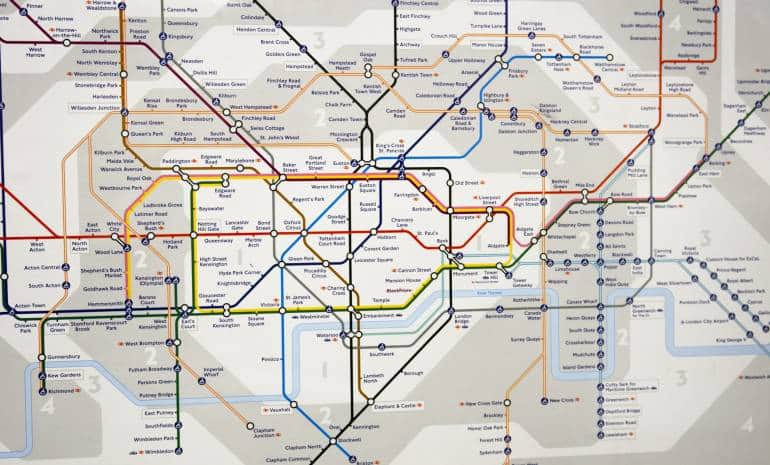
But what are these zones you speak of? The London transport map is divided into different zones, which roughly equate to how central a location is. For example, Oxford Circus in the middle of town is located in zone 1, while Richmond is 9 miles away from Waterloo and falls under zone 4.
Ticket fares are based on how many zones you travel through. So, travel within zone 3 will be cheaper than travelling from zone 3 into zone 1. Some stations, such as Stratford zones 2/3, sit on the border of two different zones. This means your journey will be charged at the cheaper rate depending on your direction of travel. If you travel into the city, your journey will be classed as starting in zone 2. If you travel further out of town, your journey will be classed as starting in zone 3. Each station and bus stop will tell you which zone you’re in, and they’re also clearly marked out on transport maps.
Buses Are The Cheapest Public Transport In London
Zones do not apply to bus fares, meaning you can travel anywhere in London for the same fare of £1.65 Additionally, the Hopper fare allows you to bus hop for one hour with no additional charges. Yes, that’s right you can make unlimited bus journeys within one hour of touching in with your Oyster or contactless. As long as you scan the same card on each journey you will not be charged again within an hour. Daily caps on buses are £4.95, and if you have the time, travelling by bus is easily one of the best and cheapest ways to see some of London’s landmarks .
Planning your journey
Even if you’ve travelled around London on a daily basis for a good few years, you’ll probably need to use an app to help plan your journeys. Apps can alert you to service updates, signal issues or changes to bus routes. TfL is great for basic journeys , live updates, station facilities and ticket types.
But CityMapper is your best bet for speed and efficiency. It has a sophisticated algorithm that takes into account how often different trains or buses depart, distance between stops and time of day to provide you with a selection of different route options. And it even lets you know which carriage of the Tube to get on for a swift exit. It also shows you how much your journey will cost you, so you can work out a cheaper alternative if you plan ahead.
Failing that, Google Maps can be useful, especially if you’re walking. You can also download the map to your phone when you have wifi to avoid using your data (or if you’re here without a UK SIM )
The Tube (the London Underground network)

The London Underground network serves 5 million passengers each day, covering 270 different stations. It’s the oldest underground transport system in the world, and has been transporting people around the capital since 1863. Fortunately it’s had a few improvements since then. Most people call it the tube, and the majority of the central stops are underground. But as you get further away from the middle of town the network leaves its subterranean roots. In fact, 55% of the network is actually located above ground.
The Tube is a fast, efficient way to travel. Trains leave most platforms between two and 5 minutes (this is fairly standard, but they can be further apart, especially on Sundays), and take around two minutes to arrive at the next station, depending on the line you’re on.
The different lines each have a name and a distinct colour to help you trace your journey. Make sure you know whether your destination is northbound or southbound, or eastbound or westbound, as that will help you get to the correct platform and watch out for lines like the district and northern lines which have two different branches, although the branch name should be on the front of the train carriage as well on the platform screen and train announcements.
You can travel on most lines from 5 am until 1 am the next day. While at the weekend you can catch a reduced Night Tube service on a number of lines throughout the night. The downside is the Tube can get hot and sweaty during busy periods and especially in the summer (although some upgraded lines now have air con). If you can help it, try to avoid the morning rush between 7:30-10 am and the afternoon rush between 4.30-7 pm. If you’re travelling around central London, it can often be easier and more enjoyable to walk between destinations, rather than taking the Underground and changing lines.
London buses

London buses are brilliant at connecting the dots between train lines and other parts of the city. They are mostly double-deckers, meaning you can get a great view of the city streets as you travel. However, they are generally slower than the Tube and are susceptible to traffic.
Certain journeys can take two-to-three times as long during rush hour. When planning your bus journey, pay special attention to the route number and specific bus stop name and code. For example, if you needed to get the 45 bus heading north from Brixton, you’d need to look out for Route 45, Brixton Stop N.
There are 673 routes, 19,000 stops and 8,500 buses in London, meaning it’s easy to get confused if you’re not careful. If you get the right bus number, but wrong bus stop, you could end up travelling in the wrong direction.
Many bus routes also run 24 hours a day, so you can easily get home once the underground and trains have stopped running.
Travelling out of London
London’s major train lines connect the capital to the suburbs, the coast and even several European cities , So whether you’re looking for an easy day trip , a weekend hike or a city break, there are plenty of high speed trains to get you there. Flying in from abroad? Check out our guide to the cheapest ways into the city centre from London’s six airports .
London Overground

The Overground is a great way to travel, and mostly covers zone 2 and beyond. You can travel east to west or north to south easily without having to go through central London or taking suburban railways – great for getting to places like Kew Gardens .
It’s a bit less frequent than the tube, but you get views of the city, air-conditioning and wider trains. On busy days, these little luxuries really mean a lot. Look out for the orange symbol, some stations like Highbury & Islington have both Overground and Underground stations in the same place, so it makes for a fast and easy transfer.
The Elizabeth Line
It may have been delayed several times, but the much anticipated new line opened in May 2022. Or at least, the first phase of it opened. It’s on the tube map and runs partly underground, but isn’t technically part of the London Underground. Confused? Here’s the quick explanation: originally called Crossrail, the whole line will eventually cover 73 miles connecting the suburbs with the city centre and Heathrow Airport. Eventually it will run all the way from Shenfield in Essex and Abbey Wood in South East London to Reading, Berkshire and Heathrow to the west of London. At the moment, the western tunnels aren’t connected to the central ones, but are expected to be in Autumn 2022.
Contactless and pay-as-you-go Oyster payments can be made on most of the central parts of the Elizabeth Line, and the fares are the same too. The line has slashed the travel time across several journeys (For example Liverpool Street to Woolwich is now halved to 15 minutes) and the new stations are much more spacious and accessible than a lot of underground stations too.
Passengers should eventually be able to travel the full length of the line from May 23, but in the meantime, if you get the chance to use it to travel through the central parts of the line, it should be a more pleasant experience than getting the tube.
Other Train Networks in and around London

Thames Clipper (ferry boats)

The Thames Clipper ferry network is an exhilarating way to travel. Connecting Putney in the west to Woolwich in the east, the boat zips along the River Thames, taking in some of London’s top landmarks along the way. You can use contactless and oyster on the Thames Clipper, but the river is divided into different zones from the underground and the prices are different too.
River services operate in three zones: west, central and east, and a single central zone journey is £8.70.
The Former Emirates Air Line (cable car)

The Emirates Air Line was the name of the cable car that takes passengers on ‘flights’ across the Thames from “Emirates” Greenwich Peninsula on the south of the river to “Emirates” Royal Docks on the north. It’s quite a niche mode of transport, only serving two stops, but it’s great fun nonetheless.
As of June 2022, the branding contract with Emirates has ended, so at the moment we’re not sure what the future of this cable car line holds!
Bikes in London

Cycling is often as fast (or sometimes faster) than getting the tube, and is a great way to see more of London and really get your bearings. There are dedicated bike routes all over the city, which will show up on CityMapper but are probably best accessed via Google Maps.
There are few places to hire bikes on the go around London, the biggest scheme is Santander Cycle which has over 800 docking stations across London (mostly in zones 1 and 2, and a limited number in outer London). You can just turn up and rent a bike for £2 a day (plus an additional £2 for each hour after that) and you can just drop it off at another docking station one you’re done.
One nice bonus is that journeys under 30 minutes are free. This means you can cycle for 29 minutes and dock the bike at a station, then get another bike out and do the same throughout the day to avoid additional charges.
If you find yourself doing a lot of cycling and want to get a bike of your own, see our article on where to buy a bike in London .

Where To Store Your Luggage in London
Many venues and tourist attractions ban large bags. Here's where to store your luggage, for hands-free exploring.

13 European Cities You Can Visit from London by Train
It’s easy, quick and relatively cheap to get to these major cities and lesser-known destinations by rail. Plan now, travel later!

Summer Day Trips From London
Summer is a good time to escape the sweaty heat of the capital and explore some of the rest of the country.

Post Brexit Travel to Europe
Post Brexit Travel to Europe explainer: visas, mobile roaming charges, business travel, healthcare, booze limits, driving and pets.

Best London Apps
Whether you are visiting London, have just moved in to town or are a lifetime local, here are the best London apps you need to download right now to make life in the city a breeze – and the ones […]

Easy Weekend Trips from London by Train
From dreamy scenery to historic cities, or just a coastal retreat – here are some of our favourite weekend trips from London by Train.

London Parking Guide
Parking in London isn’t always a picnic. With busy historic roads and specialist charging zones, you should know what to expect before driving into central. This London parking guide for cheapos will help you park in the capital without hurting […]

Cheap Transport from London’s 6 Airports to the City Centre
There are many ways to get from the many London airports to the city centre. We break down your options on how to do so cheaply.

Unique London Tours: Six Ways to See the City From a Different Perspective
Step out of your comfort zone and into unexplored areas of London

Off the Beaten Train Track: 5 Unconventional UK Cities for a Weekend Getaway
While European city breaks may be off the menu for a little while yet, the UK has its own surprisingly picturesque urban getaways.

Getting Around in London
From apps to common sense tips: our guide to getting around in London

Some London Tube Stations to Close Amid Coronavirus Pandemic
A list of London Tube stations to close starting March 20

Cheap and Easy Ways to Travel from London to Edinburgh
When heading to the fringe, preparation is everything

London to Edinburgh Festival Fringe: Everything You Need to Know
Heading to Edinburgh Festival Fringe in August? We’ve got you covered.

Chasing Cheap Flights: Bagging a Bargain Every Time
We explore the UK's biggest flight club, which promises to drastically reduce flight prices. So is it worth it?

Europe on a Shoestring: 7 Planning Tips For a Memorable Trip
Considering a cheeky jaunt to the mainland? Start planning early to make your dreams of budget travel in Europe a reality.
Close without accepting

Travel like a pro with Public Transportation in London
Things to do in London London Travel Guide London Transportation & Transfers Public Transportation in London
Well connected by rail, road and river transport, London has no dearth of public transport for visitors who wish to explore. While we all understand that hiring private vehicles is definitely an expensive proposition, there are plenty of options lined up to cut down some expenses in London. The city hosts a large span of transport options that are easy on the pocket and help you discover the city as a local. Read on for an elaborate overview of London's network of public transport.
The London Public Transportation System: The Basics
London has 32 boroughs and it is very easy to cover the city with its excellent public transport system.
Let's start with The Tube, the most convenient way to travel to and from Central London. The Overground Rail sprawls across the city, beyond the Tube network.
The Docklands Light Railway a unique, driverless railway line which also connects with the Tube at various junctions. The areas that are not covered by Underground or Overground are covered by the Rail Services.
The iconic Red buses are extremely convenient and cost-effective to travel across London. Trams are equally convenient- buy a pass that covers both bus and tram travel.
Try the Emirates Air Line cable car for panoramic views of River Thames. If you want to travel between Greenwich and Putney, take the Thames Clipper. Wondering about hailing a taxi cab ? A pricey affair, but you cut down on travel time.
Scroll Through London's Public Transportation Options
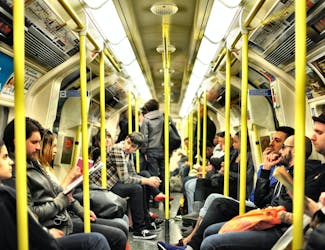
Getting To London From The Airport
On your visit to London, you’re probably going to begin figuring out your journey from the airport itself. While your journey will vary according to the airport you’re landing at, there are several ways to shuttle between the city and the airport itself. While London Airport, Gatwick and Stansted have special train services to central London, London Heathrow and City Airports are well connected with the Tube. Apart from these, there are also coach services run by National Express, Greenline and Easybus which run for 24 hours a day and can be booked for as low as £2!

Read our complete guide on the Cheapest London Airport Transfers
Heathrow Airport
Heathrow Airport is situated west of central London, and it is located 24 km away from Downtown London.
- It is well connected to central London by The Heathrow Express trains, which are the fastest mode to travel to and from central London.
- The Piccadilly line is one of the most convenient modes to travel to the city centre, and they are also cheaper when compared to other modes of transport.
- You can opt for the oyster card or buy tickets for cash. However, Oyster cards work out cheaper as they can help you save on peak time fares.
- All taxi services are available 24/7 and can be booked on arrival.
- National Express coaches run 24/7 from various terminal points and are sign posted for easy getaway. These coaches take you to various locations in the city.
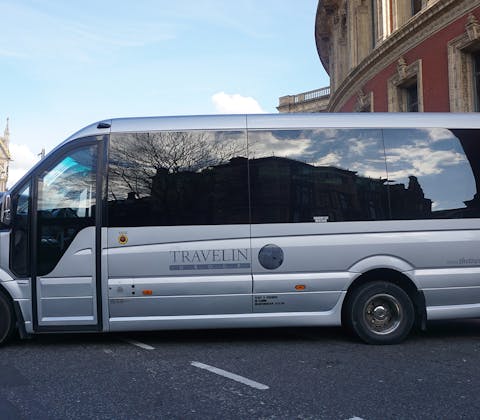
Gatwick Airport
Gatwick Airport is the second largest international airport of the city, and it is located 47.5 km South of London.
- The train services are accessible easily at Gatwick South Terminal. If travelling to and from North Terminal, there is a free shuttle service provided by the airport. The Gatwick Express Service has a frequency of 15 minutes.
- National Express buses leave almost every 20 minutes from the lower level of the North Terminal. From the South Terminal, you can catch a bus from the lower forecourt. It is easily accessible by escalators, lifts as well as ramps.
- Taxis are available at both the terminals 24/7. They can be booked in advance as well.
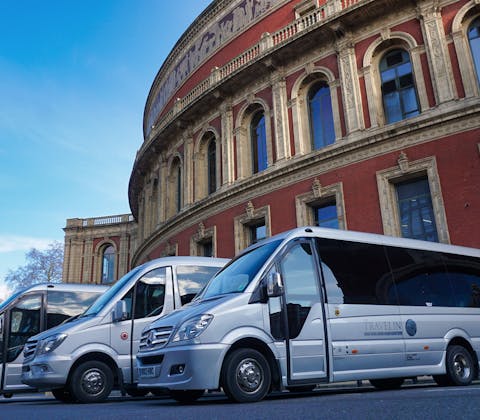
Stansted Airport
Located to the north-east of London, Standsted airport is located 64 km away from London and is connected to the city via two routes.
- The Stansted Express Train which starts every 15 minutes and departs for London Liverpool Street, and the National Express bus which starts every 15 to 30 minutes and leaves for London Liverpool or Victoria Coach Station.
- There are also Terravision and easyBus services available to shuttle between the airport and the city with convenience.
Pick up tickets here:

Luton Airport
London’s Luton International Airport is located to the north-west of the city and its good connectivity makes it one of the easiest airports to reach by train. It is about 55 km away from Downtown London.
- Take the shuttle service from the airport to reach Luton Airport Parkway station which takes about 10 minutes to reach.
- There are frequent trains to London. Also, various trains belonging to different companies leave for central London and other places. There are 6 trains leaving Luton every hour during the day and 1 train per hour at night.
- Luton Airport is also well connected to London by buses run by National Express which runs about 75 buses per day. EasyBus and Terravision are the other service operators to run buses between the Airport and various points in London city. Located outside Bay 7 is Greenline 757 bus which will take you to London Victoria.
- Apart from everything else, you will find taxis queued up at the terminal. Make sure to check with the driver of the taxi about the fares before boarding the taxi.
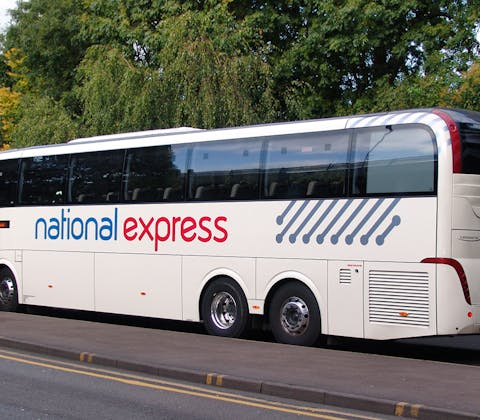
London's Public Transportation Deconstructed
Hot tip: Remember to wear a face mask while using London's public transportation, or you could get fined £200!
1 The Underground "Tube"
The Underground, or 'The Tube’ is the oldest underground metro network in the world. Although named Underground, more than 50% of its tracks are actually above the ground! It covers as many as 270 stations in total and is the quickest and best choice for travellers, as it keeps you away from the hurdles of traffic and signals. It is very easy to recognise the Underground stations with its iconic red and blue logo outside the venue. While tickets can be purchased from the entry point at the machines or at the ticket offices at the station, purchasing the Oyster card is a smarter way to plan your journey.

2 The Overground
As the name suggests, the Overground runs completely above the ground, as unlike the Tube. The Overground services are a comparatively newer addition to the city, and hence its run parallel to The Tube. Priced similarly, this mode of transport, too, can be accessed using an Oyster card, which can be easily topped up at any station. While you don’t need to touch in and out if you’ve opted for an Oyster contactless payment, there may be some stations which require otherwise. Distinct and easily identifiable, the logo of the Overground is almost the same as The Tube, except that the red is replaced with an Orange coloured circle.
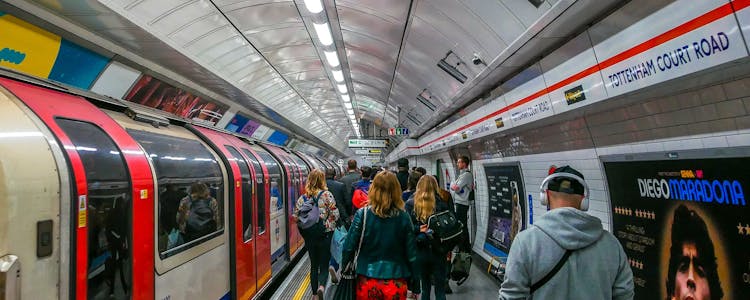
3 Docklands Light Railway
The DLR is an automated rail system that specifically covers the Dockland areas of London. It goes from Tower Gateway or Stratford to Isle of Dogs and Greenwich. This type of transport is mainly useful if you have to go towards Stratford Airport or travel to certain outskirts of London. When using the Oyster or contactless payment, it won’t be necessary to touch in or out when travelling from Underground to DLR but it is necessary to remember that DLR stations do not have a barrier and is recommended to have a valid ticket at the start and end of your journey.

4 Rail Services
Yes, there’s one more! Besides the ones we have mentioned above, there’s also Rail Services that London swears by. These are the faster ones that link London to its suburbs and to some of the distant places in the country. While there's a direct train connection to the airports of London, Heathrow, Gatswick and Stansted, there are also trains going outside of London which are not in the Transport for London umbrella. For these, you may have to book tickets from the station ticket window or the machines as Oyster or other cards will not be functional here. However, there are certain exceptions in this case (such as suburban trains in zone 1 to 9), some trains going towards Heathrow are covered under the Oyster card.

The iconic Red Bus of London is the most popular mode of transport and ferries over two billion passengers every year! There are many bus routes plying throughout London, and it is therefore a very convenient and preferred way of travel. With or without an Oyster Card, it is also extremely affordable for daily travel. It only costs £1.50 by Oyster card for however long the journey is in an hour. There’s also the Hopper system on the Bus where in an hour you can choose to change any number of buses. Most go London’s bus services run 24/7, so you don’t have to worry about missing the last one.
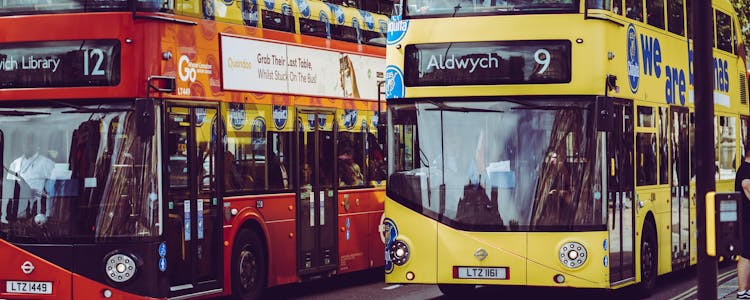
You will find the trams in the areas of Wimbledon, Croydon, Beckenham and New Addington. The services that run on four lines are frequent and easily accessible. In fact, the ‘step-free’ trams are easily accessible to the old and disabled. Trams are treated as a part of the bus service in London, which is why the standard fare of £1.50 is applied here as well. Payment for the same can be made through Oyster cards or contactless, and Travelcards are also valid for this service. Trams in London function between 5am in the morning up to 1am in the night.
.jpg?fm=pjpg&auto=compress&w=750&h=300&crop=faces&fit=min)
7 Emirates Air Line Cable Car
The Emirates Air Line runs between the Greenwich Peninsula (by the O2) and the Royal Docks. If you’ve had enough of the rail travel, you may experiment with a slightly different mode of transport — the cable car — which is deemed as the only urban cable car service in the UK. This is not only a sure shot way to avoid traffic, but it is also a wonderful way of getting stunning, panoramic views of the city during transit. The cable car is a disabled-friendly space, and also allows cyclists to ferry across the river.

8 Uber Boat by Thames Clippers
With Thames running through the heart of the city, London’s River Boats, or ‘clippers’ make an integral part of its public transport network. Getting on board one of these can ferry you to your destination with convenience and on time. River boats in London are greatly preferred and they cover five routes along with its destinations from Putney onwards to Royal Woolwich Arsenal. It is extremely easy to book your tickets for this at a ticket office on the pier, however travel and Oyster cards are welcome at this service, and you may also avail the pay-as-you-go benefit for this mode of transport.
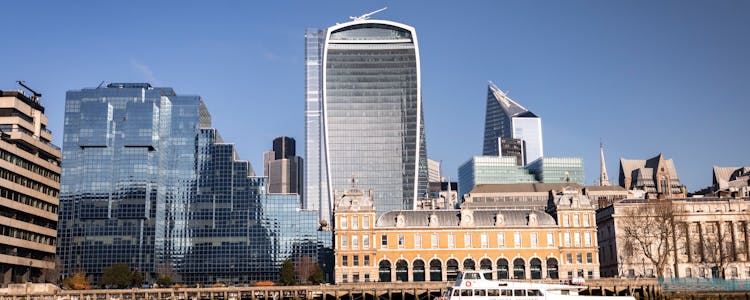
Another iconic mode of transport, the London taxi is easily available for hire at any given time of the day. London’s Hackney Carriages have been known for their rich history that dates back to 1662. Carrying people to and fro ever since, today this mode of transport is synonymous with convenience. These black cabs of London can be flagged down by waving at them on the street. A typical cab on hire would have a sign that is illuminated until engaged. What makes these cabs even more sought after is that they’re obliged to take on any journey for 12 miles, or up to one hour duration.
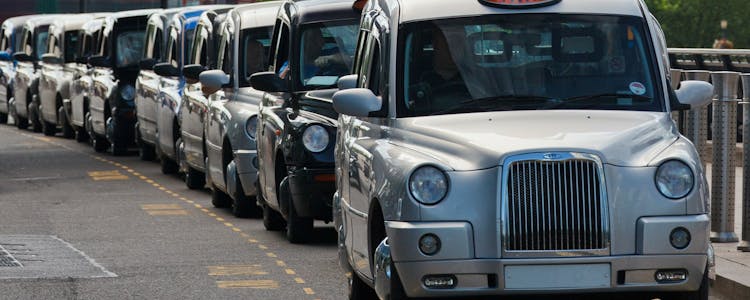
10 Cycle Hire
Apart from every other mode of transport, Londoners still prefer the traditional cycles that steadily gained popularity across the city. Available at a bike bay on almost every street, this is an affordable and eco-friendly way to get around the city. There are more than 750 docking stations and 11,500 bikes to hire around London. After accessing the bike, one can use it for 30 minutes for free, after which an additional segment would begin with a £2 charge. While the cycles do not fall under travel or oyster cards, it is very easy to activate a cycle using apps.
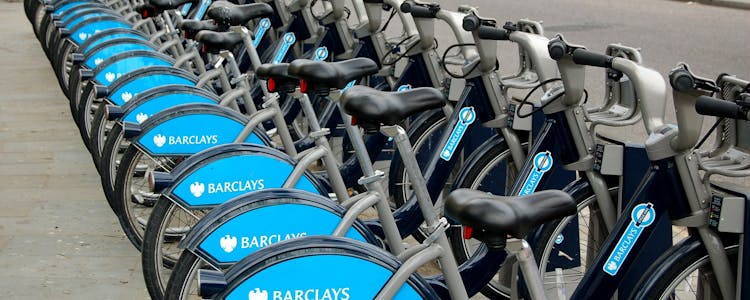
Best Way To Get Around London
With a plethora of transport facilities available at your fingertips, it can get confusing to choose the one that fits your needs the best. However, by making sure you know your neighbourhood well, you can select a mode of transport that is not just cheap, but also convenient for the distance you want to travel.
Cheap Public Transportation?
Get yourself the Oyster Card and get access to the Tube, Overground and Bus services in London for cheap. Each of these modes connects fairly well within the city, and keeping your card handy will fare you well.
Fastest Mode of Transportation?
The Underground Tube is London's fastest mode of transportation. It is comparitively inexpensive (especially if you have an Oyster Card with you), climate-controlled, and offers flexible routes.
Stops At Tourist Destinations Conveniently?
The iconic red double-decker buses are your best fit. Another mode of transportation that will fit the bill is the riverboat (Thames Clippers).
Convenient Mode of Transportation?
London's iconic black cabs with the yellow "taxi" sign are pretty popular. All cabs are metered and wheelchair accessible. They even carry assistance dogs at no charge. They are on the pricier side, however, booking a minicab would be a cheaper alternative.
Wheelchair-Accessible Mode of Transportation?
Buses, DLR trains, Thames Clippers' boats, trams, and taxis are all wheelchair accessible.
Top 3 London Transport Passes

The London Explorer Pass is ideal if you want to visit multiple locations, attractions and places at reduced rates. Visitors could choose upto 3 to 7 attractions from the 20 that are available on the list, and avail ticketless entry. Some of these attractions include Coca-Cola London Eye, Hop-On Hop-Off bus tours, Madame Tussaud’s and many others.
Book Tickets

Similar to the London Explorer Pass, the London Pass gives you a choice to access over 80 attractions around the city. Valid for upto ten consecutive days, this pass requires you to merely scan the mobile ticket or voucher at the gate before entering. You can also choose to upgrade your London Pass to London Pass + Travel to include an Oyster Travel card, which would help greatly during your transit across the city.

A visitor’s Oyster card is a super cheap alternative that can be used to save both time and money in London. The card, that includes journeys on DLR, Buses, Overground as well as Tube, is the most sought after card due to its convenient nature. Considered as a handy item to carry around, the Oyster card is now moving to contactless payment cards for an even more user-friendly experience.
Read our complete guide on the Top London City Passes
London Public Transportation Tips
- Choose a hop-on hop-off bus, which will not only drive you across the city at a nominal cost, but will also make sure you get acquainted to most of it with the help of an audio guide.
- Download applications like Citymapper or Tube Map Underground to keep a check on the line you’re travelling on.
- Choose to cycle around, which is not only cheap, but also eco-friendly and convenient.
- If you’re someone who prefers stopping by the scenic routes, take a cable car or the Thames Chipper for beautiful views of the city skyline.
- Make sure you’re always standing on the right on the escalator, as that is considered as a sign of politeness.
- Plan your day in a way that allows you to travel off peak hours.
- Make sure you check your map for the distance, as some of these could be easily travelled by foot.
- Uber is a great way to escape an unwanted situation, keep the app handy for the times you lose your way.
Ready to Explore London?
Fancy heading out to some other must-visit London attractions? Take inspiration from our list of the best things to do in London here. Use our comprehensive London Travel Guide to explore the rest of London in a hassle-free fashion with all the need-to-know information in hand.
Here are a few more attraction guides that could come handy.

FAQs: London Public Transportation
What is the fastest public mode of transportation in london.
The Tube is London's fastest public mode of transportation.
Is it advisable to take a taxi cab from the airport to the city of London?
Taxi cabs are easily available from all airports in London. However, it is the most expensive mode of transportation between the airport and London.
Is it advisable to buy an Oyster card?
If you are staying in London, it is definitely advisable to buy an Oyster Card. You can travel on trams and buses for discounted rates.
What are the best travel apps in London?
Some of the popular travel apps in London to use are Visit London, TfL, AccessAble, Santander Cycles, etc.
What are the cheapest modes of transportation in London?
The cheapest modes of public transportation in London are buses and trams. Both start at £1.50.
See more London. Save more money.
Save £7 on your first booking with Headout when you use promo code GOLDN
EXPLORE NOW
Smrithi Jacob
Is an avid reader, writer, and dreamer. She is constantly in pursuit of portals to travel to interesting places afar and likes to experience new cultures through her writing. Give her a city unheard of and a giant mug of coffee, and she’s good to go!
Be a smart traveler
The first to know about trending destinations, travel deals, tips and all things travel.
MORE SECTIONS
- Dear Deidre
MORE FROM THE SUN
- Newsletters
- Deliver my newspaper
- Sun Vouchers
- The Sun Digital Newspaper
- Racing Members Enclosure
- Fabulous Clothing

TV star stuns London commuters as she takes public transport to the NTAs in a glittery silver dress
- Callum Wells , Showbiz Reporter
- Published : 23:59, 11 Sep 2024
- Updated : 12:01, 12 Sep 2024
- Published : Invalid Date,
LIZZIE Cundy stunned London commuters as she took public transport to the National Television Awards this evening.
Broadcaster Lizzie , 56, looked incredible in a glittery silver dress while making her way to the swanky ceremony at The O2 Arena .

The TV personality put on a showstopping display in the dazzling number, which she wore with a coordinating bracelet.
She accentuated her natural beauty with a full face of make-up and wore her brunette locks in bouncing waves.
Taking to her Instagram Story with some snaps from her journey, Lizzie wrote: "Only way to travel in a ball gown."
In another, which she'd layered against Beyonce 's Run The World, she added: "On a train in my gown [channelling] my best Beyonce."
read more on LIZZIE Cundy

Ruth Langsford is VERY hungover after boozy night watching naked men

‘A new Mercedes every 3 years? Lauryn Goodman is not Hamilton!’ fumes Lizzie Cundy
Strictly Come Dancing waltzed away with the top prize in the talent show category in a big boost for the BBC amid a whirlwind of controversy over how contestants are treated .
The show beat off competitors MasterChef , Britain’s Got Talent , The Great British Bake Off and The Voice UK to win the gong.
Head judge Shirley Ballas said: “I’m absolutely, totally honoured to be part of Strictly’s 20th year because it’s a show that brings families together. I think it’s a staple in people’s homes.”
Giovanni Pernice left Strictly this year after nine years following an official complaint made against him by his 2023 partner, Amanda Abbington .
Most read in TV

Coronation Street star dies as heartbreaking tributes paid to soap legend

Ashley James & Helen Flanagan look ready for bed as they leave NTA afterparty

Michelle Keegan red faced as co-star flashes behind her live on TV during NTAs

NTAs shock as EastEnders LOSES best soap to ITV rival
Amanda, who quit the hit show early last year, has called Giovanni’s behaviour towards her “abusive”- but the Italian has denied any wrongdoing.
Then, fellow pro Graziano Di Prima was sacked when video footage emerged of him allegedly kicking his celebrity partner, Zara McDermott.
Earlier, comedy duo Ant and Dec made history as they won the NTA award for Best Presenter for the 23rd year in a row.
In a humble speech, Ant said: "I know we're not going to win it one year."
And Dec also revealed that instead of hitting the after parties, he'll be going home ready for "the school run".
Holly Willoughby was seen beaming earlier as she presented the award for the Bruce Forsyth Entertainment Award to I'm a Celebrity…Get Me Out of Here.
It is the first time Holly has appeared on TV since leaving This Morning last year.
Graham Norton proudly presented the first award of the night to Sort Your Life Out as they scooped the prize in the Factual Entertainment category.
Stacey Solomon and her team of experts help transform people's homes and lives from clutter and chaos to organised living in the hit BBC show.
Host Joel Dommett got the NTA's off to a flyer at 8pm to rapturous applause from the crowd as he showed off his singing and dancing skills.
READ MORE SUN STORIES

Major high street banks to close 55 more branches - is your local one?

Trolls call me 'the other Katie Price' but I don't care, my facelift looks great
Iconic British comedians Ant & Dec, Michael McIntyre and presenter Dermot O'Leary smiled as they greeted the cameras at the red carpet earlier.
This Morning presenter Rochelle Humes and Strictly Come Dancing winner Elle Leach were pictured strutting their stuff.
NTAs was no big surprise, says our telly expert
COMMENT BY ROD MCPHEE
THE only surprise at tonight's National Television Awards was that there were virtually no surprises.
Ant and Dec took home Presenter Award for the millionth time, Strictly bagged the Talent Show gong and I'm A Celebrity triumphed in the Entertainment category.
Kate Garraway scooping the authored documentary award for Derek's Story was entirely deserved, but not a total shock either as she'd already done the same two years ago with Caring for Derek.
There were a few curveballs. Emmerdale beating Goliath soaps EastEnders and Corrie was unexpected, particularly as the rivals have both boasted big storylines recently.
And though there was no doubting how hugely moving Mr BatesVs The Post Office was for viewers this year, it was still stunning to see them bag three awards.
Does the general lack of surprises diminish the thrill of the NTAs? Not at all. It remains one of the few awards shows which actually gauges what the majority of Brits are actually watching.
We live in a bewildering world where scandals often rock shows, in an age where streaming means the shared experience is diminished and ratings are hard to decipher.
But year in, year out NTA voters leave us in no doubt which shows they adore, which ones they've fallen out of love with, and which celebrities they're prepared to back.
Look at how quickly relatively new shows like The Traitors, Bridgerton and The 1% Club have been embraced by NTA voters.
They aren't interested in PR stunts and promotion, in highbrow actors and writers lauded by their fellow luvvies and they certainly can't stand having what they ought to be watching dictated to them
They tell us all loud and clear, every year, who they consider to be the best - and woe betide any telly exec who ignores them.

- National Television Awards 2024
- Lizzie Cundy

COMMENTS
Pay as you go with daily capping is cheaper than buying a Day Travelcard when you travel in London Zones 1-9. Travelling with children. Children under five travel free with a fare-paying adult. If your child is under 11, they can travel free on: Buses and trams; Tube, DLR, London Overground, Elizabeth line and some National Rail services.
Accessible travel. Find out about step-free access and planning an accessible journey. Maps, tips and all the information you need to help you get around London during your visit.
Take a ride on London's cable car, for views over Greenwich and East London, including The O2, Cutty Sark and Queen Elizabeth Olympic Park. See more tickets and offers. Find out all about London public transport, including how to travel by bus, bicycle, train, Tube, taxi and tram.
Generally, this is between around 7:30am and 8:30am in the morning, and from 4:30pm to around 7:00pm in the evening from Monday through Friday. Also, the tube is the most cost-effective way to get from Heathrow Airport to central London, with a direct link from all the Heathrow terminals to the centre of London.
Elizabeth line in London. Discover everything you need to know about the Elizabeth line. Find out how to travel around the capital with this guide to public transport in London. Learn about using the Tube, Santander Cycles, London bus routes, London taxis, London river bus services and more.
These were made to limit the amount that London tourists and locals alike pay on transport every day and week, with a daily cap of £7.70 between Zone 1-2 and £38.40 weekly for Zone 1-2 (meaning you'll never pay more than this for unlimited travel within these zones), for London buses the daily cap is £4.95. The cap amount depends on what ...
It's a quick and easy way to get around with simple-to-understand transfers. Fares: Fares vary based on the distance and time of day. The fare is typically determined by zone, so a traveler using the Tube within Zone 1 will pay less than one traveling from Zone 1 to Zone 5. A single journey within Zones 1 and 2 is 4.90 pounds.
5. Travel differently. See a different side to London. You can hire a bike for as little as £1.65 with Santander Cycles, London's self-service, bike-sharing scheme; Take a ride on the IFS Cloud Cable Car, London's cable car; Take a scenic boat trip along the River Thames; Walk in central London - it's a great way to get around and experience the city; You'll find that there are plenty of ...
The Tube runs roughly 5am to 1am, although when your last train departs does vary by line and the day of the week. Several lines (the Central, Jubilee, Northern, Piccadilly and Victoria lines) run all night on Friday and Saturday to get revelers home (on what is called the "Night Tube"), with trains every ten minutes or so (and off-peak fares).
Oyster cards are electronic smartcards that are used to pay for public transport in London. Visitor Oyster cards, Oyster cards and contactless payment cards are the cheapest way to travel in London. To use an Oyster card, touch the card on the yellow reader at the gates as you enter and end your journey. You don't need to touch out at the end ...
To ride the Tube, hold your Oyster Card over the indicated area on the barriers on your way in and out. The barriers will automatically deduct your fare from your card. Taking a cab is a best way to get around London as a group so you can split the fare and see more of the city aboveground. 2. Black Cabs.
Navigating London's public transportation system may seem daunting at first, but with a little bit of preparation and some basic knowledge, you can travel around the city like a pro. Whether you're using the Tube, bus, or other modes of transportation, there are plenty of tips and tricks to help you get where you need to go quickly and easily.
The London Underground symbol, or 'roundel', in use since around 1925. Instantly recognisable London icon symbol, that can be seen throughout London to identify tube station and access from a mainline train. Inspiration for the TfL icon. London Underground (Tube) line colour as represented on the tube map as follows.
Public transport in London. London is divided into nine fare zones, with zones 1 and 2 forming the city center. The zones increase as you move further away; for example, Heathrow Airport is in Zone 6. The public transport network is operated by TfL (Transport for London), managing everything from roads and rail to ticketing and maintenance.
London's public transport network is divided into nine travel zones. Zone 1 is in central London and zones 6 to 9 are on the outskirts of the city. The Elizabeth line. Hop onboard London's Elizabeth line, which connects London Heathrow Airport and Reading to Shenfield and Abbey Wood via major central London Underground and rail stations ...
Currently contactless can be used to pay for travel on the following public transport options in London: bus, tube, tram, DLR, London Overground, IFS Cloud Cable Car, River Bus, and the majority of National Rail services inside London. You can also use contactless for some airport services, including Gatwick Express and Heathrow Express.
No. 11 Route. Laura Porter. This bus route is a perfect one to take if it is your first trip to London. The key section of the No. 11 route starts at Liverpool Street Station and ends at Victoria Station. It goes through the City of London and past such must-sees as St. Paul's Cathedral, Trafalgar Square, the Houses of Parliament, and ...
The Overground is a great way to travel, and mostly covers zone 2 and beyond. You can travel east to west or north to south easily without having to go through central London or taking suburban railways - great for getting to places like Kew Gardens.. It's a bit less frequent than the tube, but you get views of the city, air-conditioning and wider trains.
The London Public Transportation System: The Basics. London has 32 boroughs and it is very easy to cover the city with its excellent public transport system. Let's start with The Tube, the most convenient way to travel to and from Central London. The Overground Rail sprawls across the city, beyond the Tube network.
Discover how to get around London on public transport and make the most of your trip. Skip to navigation Skip to content Skip to footer Transport for London. Search the site. Fares; Help & contacts; Maps; ... pay for your travel and what to see, so you can make the most of your time in the City. Plan your journey. Getting to London. Check ...
Cycling has become increasingly popular in London in recent years. Bike hire services are available throughout the city, and cycling is a great way to get around, particularly in areas with limited public transport. Getting Around London: A Step-by-Step Guide. Traveling in London can be daunting and confusing, especially if you are new to the city.
How much it costs and how to pay to travel around London. Find out what's the best ticket for you and how to use contactless and Oyster cards, view fares, check if you can get a refund or replacement and see if you're eligible for free and discounted travel.
Children can travel free on London transport services: Tube. DLR. London Overground. Elizabeth line. Some National Rail services. They can also travel with a discounted fare if they are aged between 11 and 15 years old. Every child aged 11 years old or older needs a ticket to travel. Children aged 16+ will need an adult ticket.
A teenager has been arrested following a cyberattack on London's public transport body last week in which some personal customer data was accessed, the National Crime Agency (NCA) said on Thursday.
Plan your journey across the TfL network. Journey planner for Bus, Tube, London Overground, DLR, Elizabeth line, National Rail, Tram, River Bus, IFS Cloud Cable Car, Coach
ABSTRACT. This article uses the authors' research on the MK Connect Demand Responsive Transport service to explore how innovative public transport services can be developed to address Britain's systemic decline of local public transport. Public policy is focused on a hi-tech revamp of the existing public transport model, which will have little impact outside big cities.
LIZZIE Cundy stunned London commuters as she took public transport to the National Television Awards this evening. Broadcaster Lizzie, 56, looked incredible in a glittery silver dress while making …
Hopper fare. Pay as you go at adult rate on buses and trams and our Hopper fare gives you unlimited journeys for £1.75, made within one hour of touching in. Hopper fare also applies to discounted rate travel.. Touch in using the same card or device on all journeys and you get our Hopper fare automatically. If you travel on Tube, DLR, London Overground, Elizabeth line, IFS Cloud Cable Car or ...
Go contactless for the cheapest fare. Purchase a Visitor Oyster card* before arriving in London and save money on your journeys around the capital and the card itself. Visitor Oyster Cards are cheaper to buy (£5) than a normal Oyster Card (£7). Use the same payment card for every trip to save the most when making multiple journeys around London.
Information on all forms of transport in London including cycle hire. Routes, maps, plan a journey, tickets sales, realtime traffic and travel updates.